
The Mull of Kintyre flickered woefully over the ferry sound system as we sailed our way west, supping bottles of Arran Gold. You know the one – the 1997 tune Paul Macartney and Denny Laine penned as a tribute to the Kintyre Peninsula ‘Scotland’s Mainland Island’ where Paul owns a farm estate. Catchy lyrics like “darkest of mountains with valleys of green” and “sweep through the heather like deer in the glen” had us further stoked for our island hopping escapades over the next week, doing our best to track old Island droving routes and trace Hebridean Island myths and legends, like the grievous naming of “Midge Bay” on Jura…
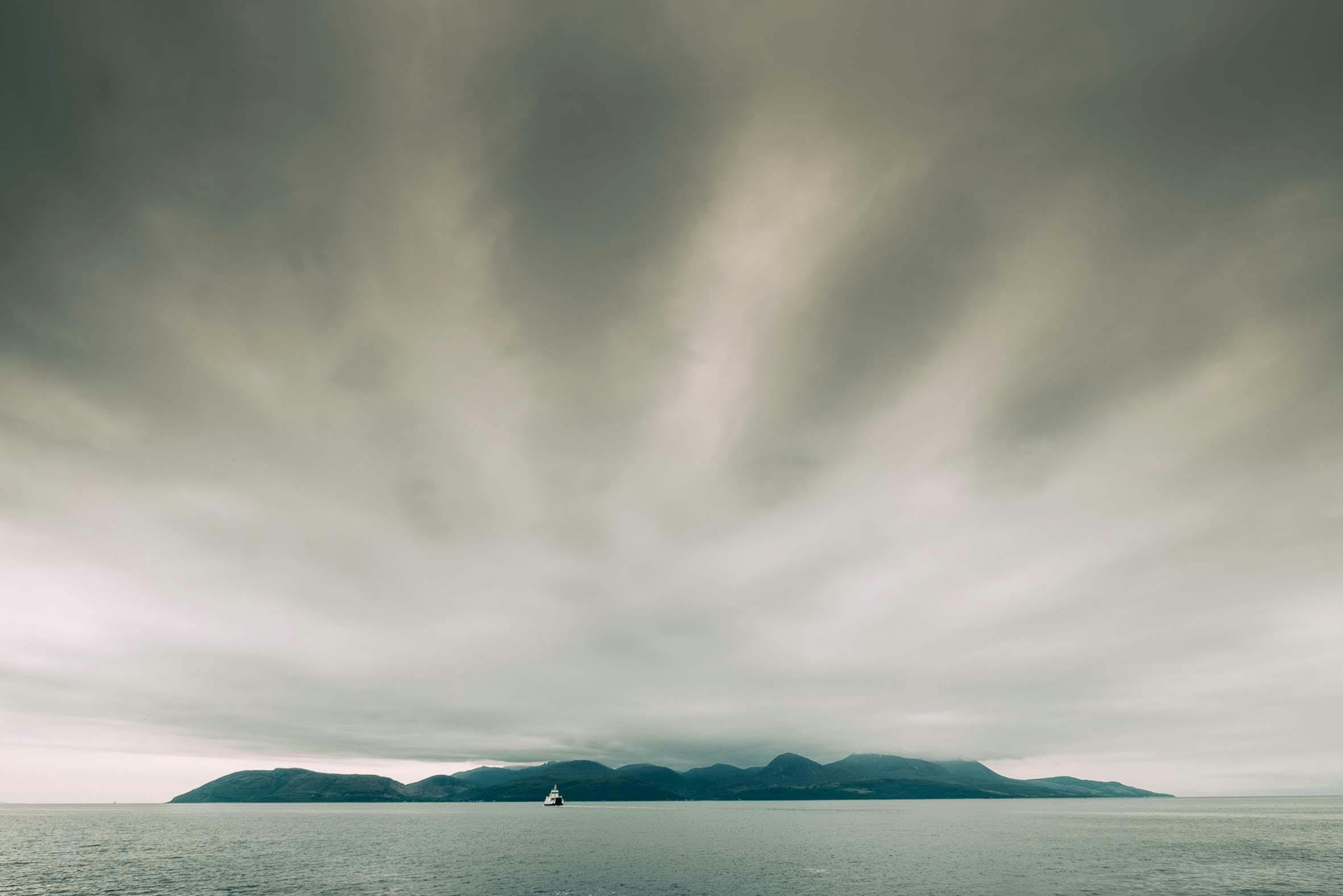
“Mull of Kintyre, oh mist rolling in from the sea
My desire is always to be here
Oh Mull of Kintyre”
Grinduro Scotland was the reason our bikepacking squad was all together on the Isle of Arran. In the Lochranza Hotel bar, specifically, where we all met stood quietly and tensely watching England bow out of the football World Cup semi-final. Whilst Chris and Robin (the Americans) found our fever pitch football interest amusing, a ride around the rugged north coast for a beach-bivvy and a couple more beach-beers was more than enough to drown our sorrows and offer a taste of Hebridean Island life on the road.
The idea to make more of a riding trip around Grinduro was planted earlier in the year, during my visit to US-based illustrator Chris McNally’s San Francisco workshop. He mentioned he was heading over to Scotland for the gravel event and since, we floated trip notes based on travel writer and illustrator Alfred Wainwright’s ‘The Islands’ book, settling on the concept of sandwiching the Grinduro event weekend with two short bikepacking trips out from Arran to the surrounding Hebridean Islands of Gigha and Jura, which Wainwright describes as “the loneliest of islands…a wilderness…a vast deer forest with an inaccessible west coast of cliffs and caves”. We’d pack pens & pads, and pause for some sketch sessions along the way.
In his Scotland books, Wainwright wrote about the joys of exploring “by train and MacBrayne*”; for us it would be an adventure by lane and MacBrayne amongst Paul and Denny’s dark mountains, green valleys, heather, deer … and glens. On the first trip, Chris and I would cross the 50km long Kintyre Peninsula off-the-beaten-track on the Kintyre Way to catch the ferry to the Isle of Gigha, joined by Robin (Offsite Studio), Chris (Photographer) and Will (Brother Cycles). Then we’d head to Lamlash on Arran for the Grinduro Scotland weekend event, before heading further west over to explore Jura on the second trip with Wren (Chris’ sister), Chris (Photographer) and Fiola (Komoot)…

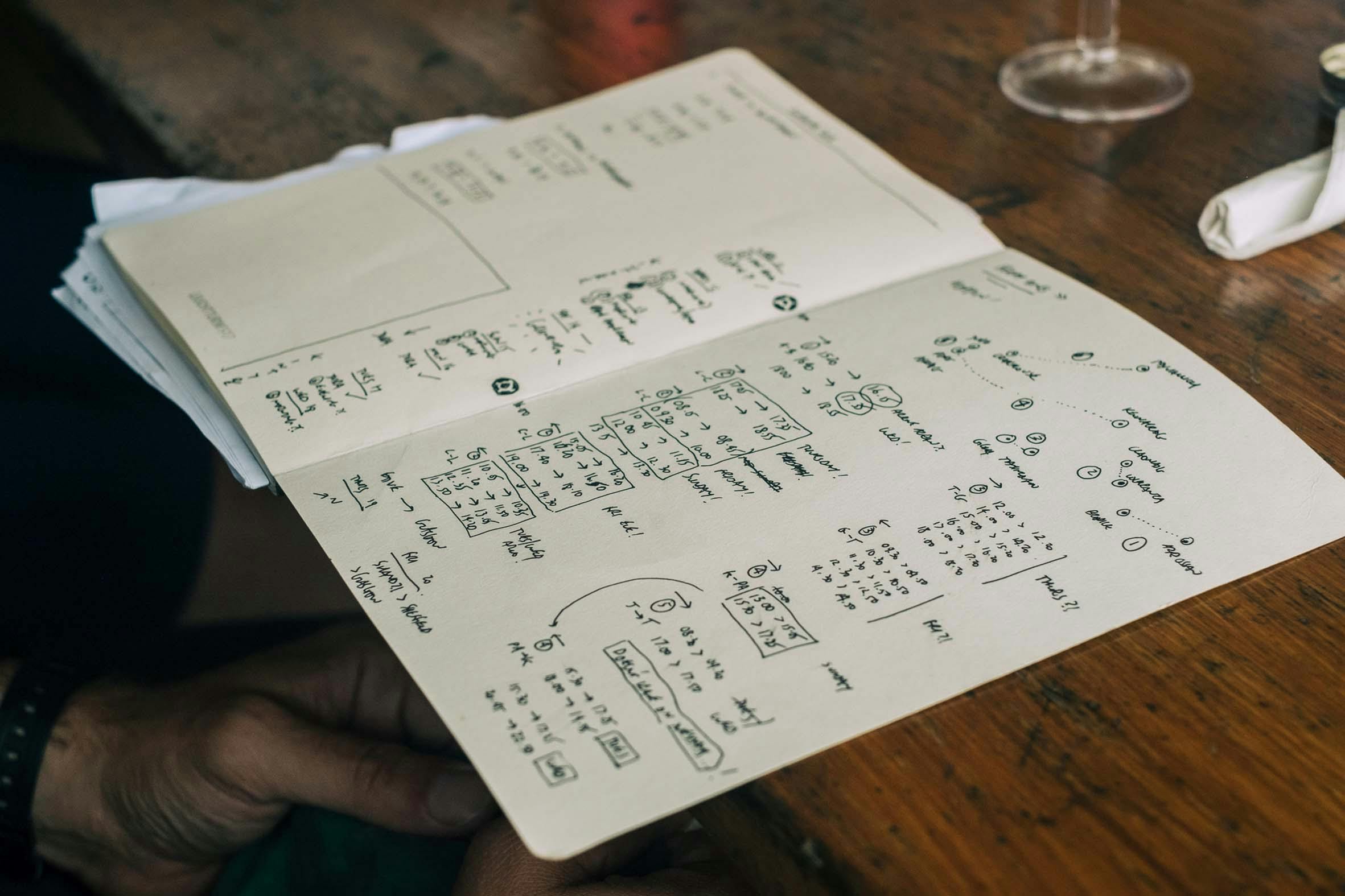
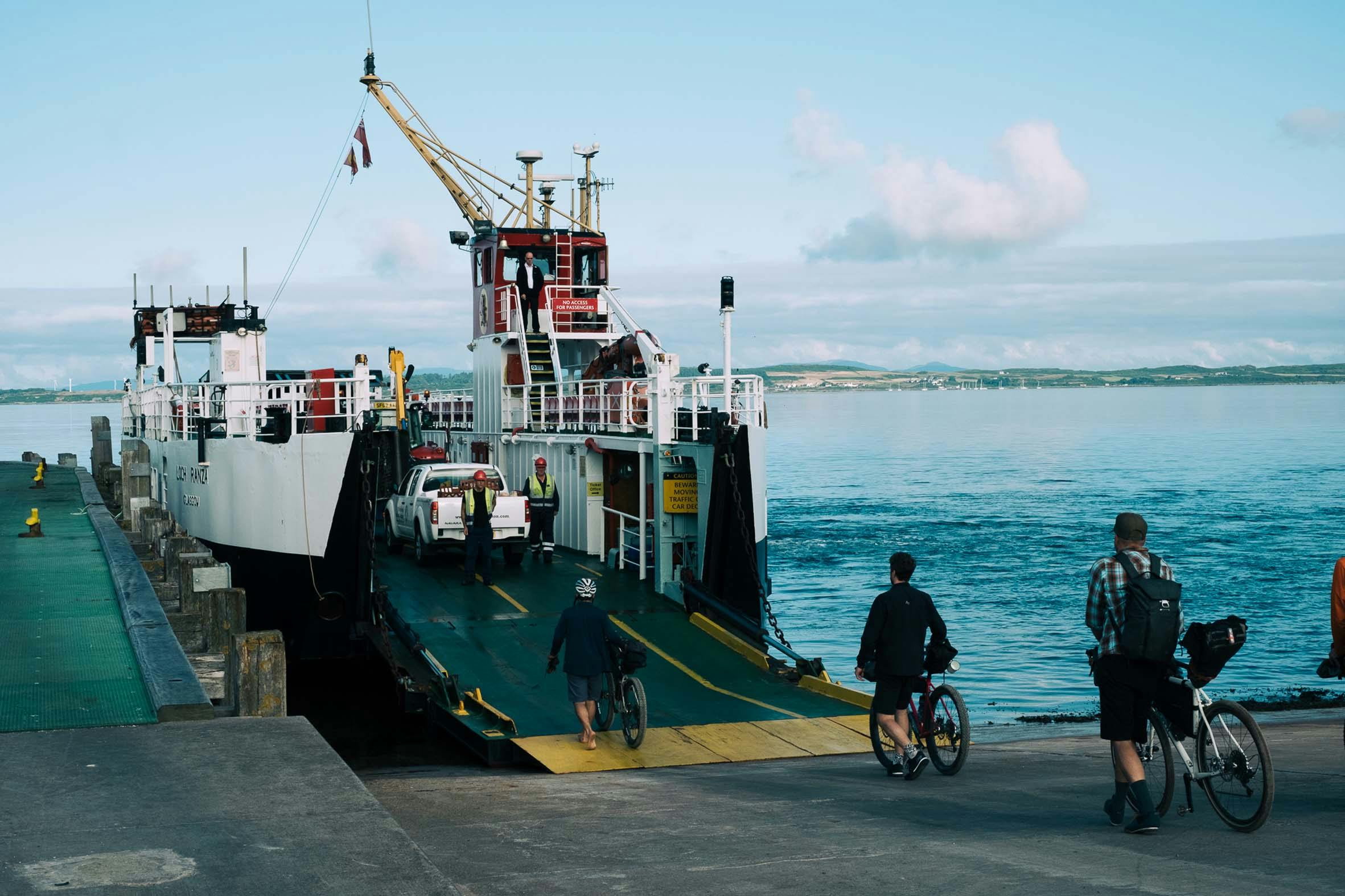
Even the most flexible ferry-hopping bikepack trip seems to require an Audax level of admin. Using five ferry routes – all on different days of the week, including the dreaded Sunday service – meant noting down and making notes on notes for ten timetables because if there’s one thing I’ve learnt from previous island-hopping trips … no ferry means yo’ stuck. Don’t expect 4G to check a ferry time from a remote col or slipway and definitely don’t expect ferries to wait for you. The ferry folk remember the guys on bikes that always dash to make the end of the ramp as they untie the docking rope, the guys that keep trying to ride and not walk onto the ferry … the guys with enamel mugs dangling from seat and hip packs.
Anyway, with an ideal route sketched out and all the ferry notes finally jotted down for safe keeping, I got to work on the komoot app to plot and check daily distances, elevation profiles, surfaces (using a combo of the ‘Gravel Biking’ and ‘Mountain Biking’ route settings) for the optimum riding:ferry ratio that would give us some time to stop at the seafood huts, sketch the Paps, relish the trails and hike-a-bikes, and reach the best overnight stops…
I: Kintyre & Gigha
II: Arran & Grinduro!
III: Jura
When it comes to checking bikepacking trip route ideas, komoot has been our go-to planning app for over a year now – the planning power and usability, especially on the tiny phone app (and desktop), as well as the editing of routes on the go, and navigation in offline mode is all ace. Sure, there are times when its suggested sections of route are passable when they might not be quite the same out in-the-field, but that’s all part of discovering the wild places we love.
The most recent bikepacking relevant update to the app is the introduction of off-grid planning and navigation, which means you aren’t restricted to set pathways (komoot will always choose a set path between two points). This gives you the option of plotting a route that enables you to leave the ‘beaten track’, whilst receiving full standard navigation and wayfinding. “Simply add a waypoint to your route in the planner and choose to ignore komoot’s automatic routing along the network of known ways. Komoot will then draw a straight line to that individual waypoint and each one after it, until you decide to revert back to komoot’s automatic routing along known paths, or roads”. Komoot use the example of knowing that a river is crossable at a certain place that maybe isn’t on their mapping – you can choose to plot your entire route off-grid or plan individual sections, like the anonymous river crossing, as your bikepacking tour demands.
We put the new feature through its paces on Jura (see part III), and we’d say:
1. make sure to save any mapping and routes for offline use before you set off into the wild; off-grid naturally means you won’t have 4G to start re-checking and editing routes/locations. This requires a decent amount of memory on your phone (30mb+) and a WiFi connection. The last thing you want is a GPS dot with a totally blank map.
2. the off-grid routing is super useful (who likes to be 100% restricted?) but be prepared to travel slower than usual; be prepared for anything. On Jura, we plotted an off-grid route with the good intention of reaching Glengarrisdale bothy on the north-west coast of the island. With bikes, it ended up being a tough ol’ hike-bike and we changed our plans to retreat from the stunning highpoint. However, as a hike it would’ve been ace and with hindsight we would have left the loaded bikes by the main ‘Long Road’ track and hiked the wild Argo tracks up and down through Glen Garrisdale.
3. stuff a useful scale paper map at the bottom of your seatpack/pannier … somewhere … as backup, just in case.
144KM (Ferry 24KM)
1300m+
Bikepacking the Kintyre Peninsula and Isle of Gigha via the ‘Kintyre Way’: winding coast roads; seafood cabins; rockpool hike-a-bikes; remote distilleries; vast moorlands, forests and windfarms; and beach burrito breakfasts…
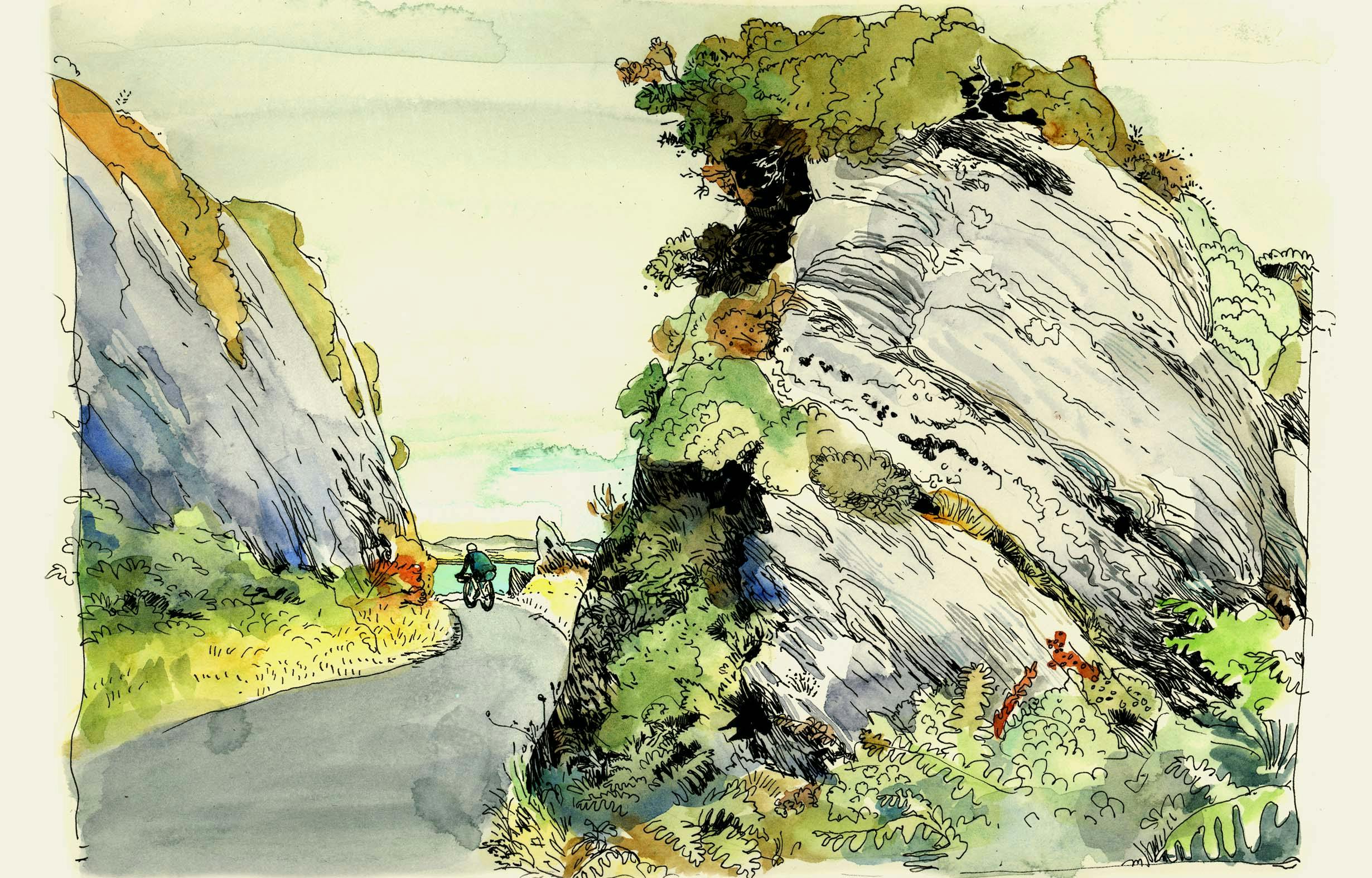
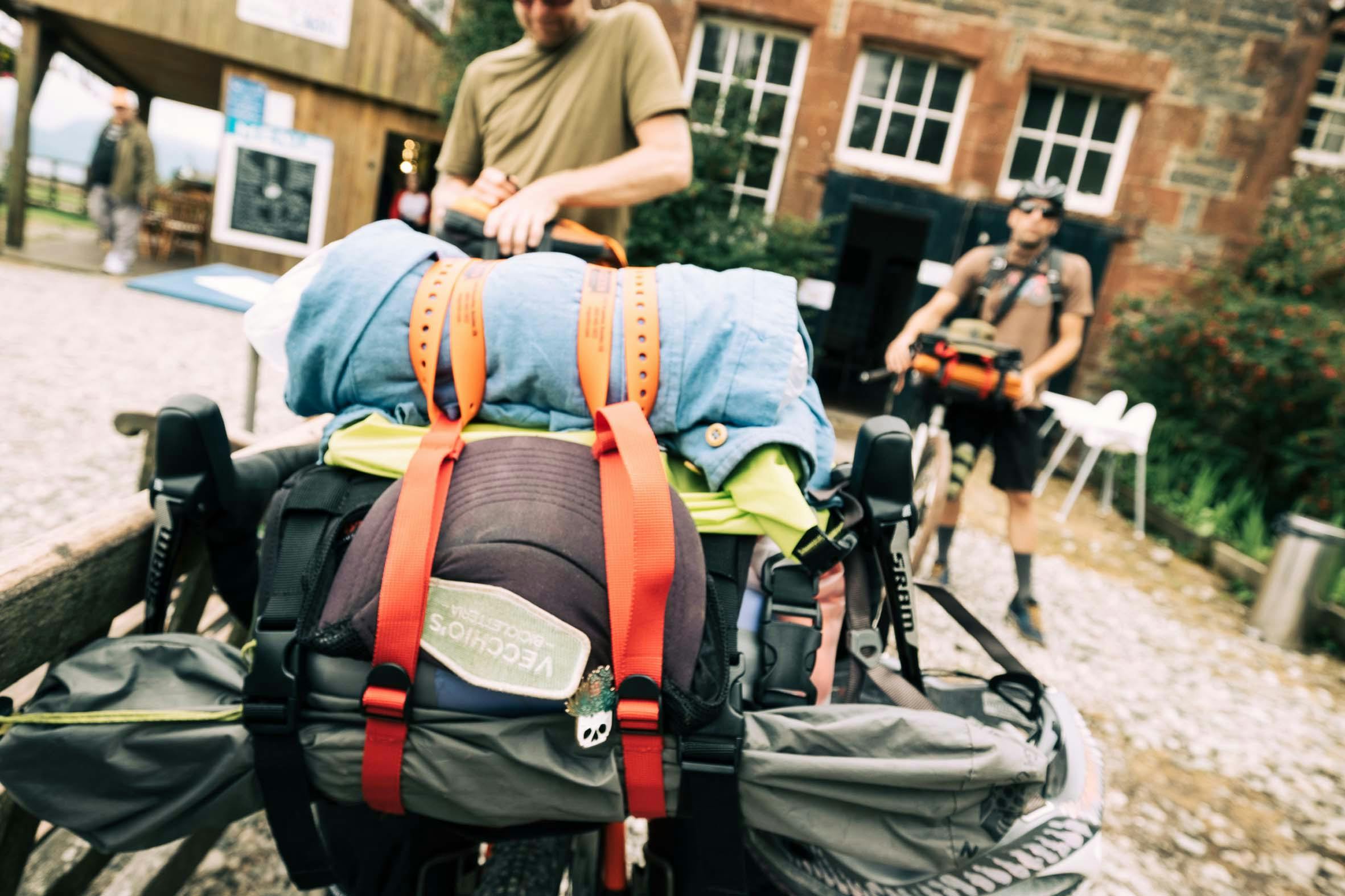
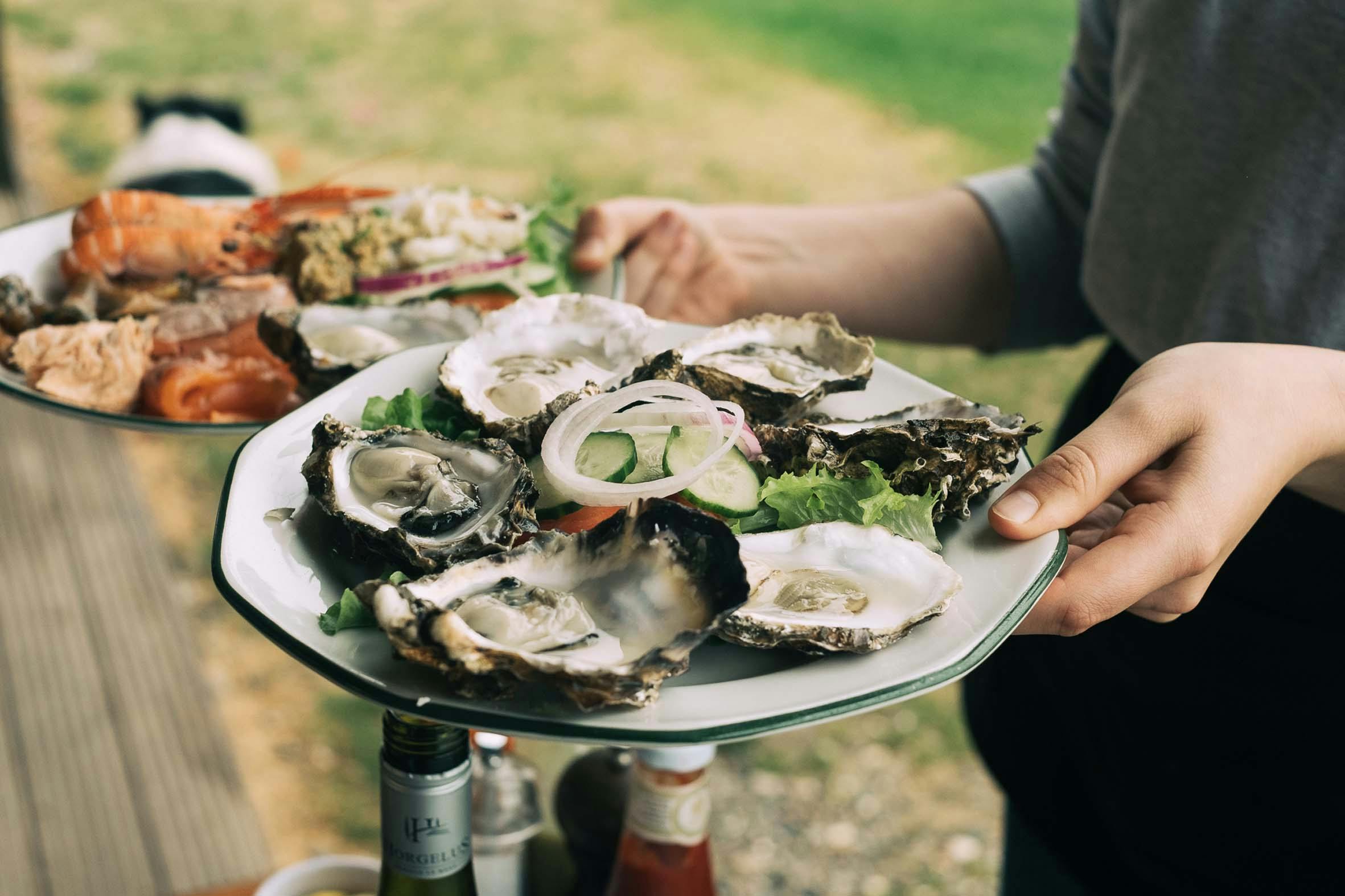
At the bar on the ferry, a local chap overhearing our English and American accents singing along to the Mull of Kintyre was keen to let us know that, after living on Arran for 54 years, he was still considered an “incomer” to the islands, and so we probably would be too. We were fine with that; the five of us were on an island hopping bike trip for a reason – the smell and sound of choppy seas and salty winds a sign of heading somewhere new.
*Thinking about it, the Mull of Kintyre was probably stuck on repeat*
You can pretty much call the Kintyre Peninsula the fourth island on our trip. Read this in the next millennia and the West Loch Tarbert sea inlet will have likely eroded the last 2km stretch of land gluing Kintyre to the mainland. Still, rolling off the ferry onto the Claonaig concrete slipway from Arran sure did feel like an island arrival. In classic Pannier style, our first touring stop was an early brunch. We’d caught wind of the Skipness Seafood Cabin and so, rather than cooking up our eggs and oats breakfast in Lochranza that morning, decided to hold out instead for local seafood scran an easy 5km north, along the coast road. Delicious hot-smoked salmon rolls and coffees awaited us – the perfect start to an 80km ride, after waking up in bivvy bags on the beach and our first flustered ferry-dash of many on the trip…
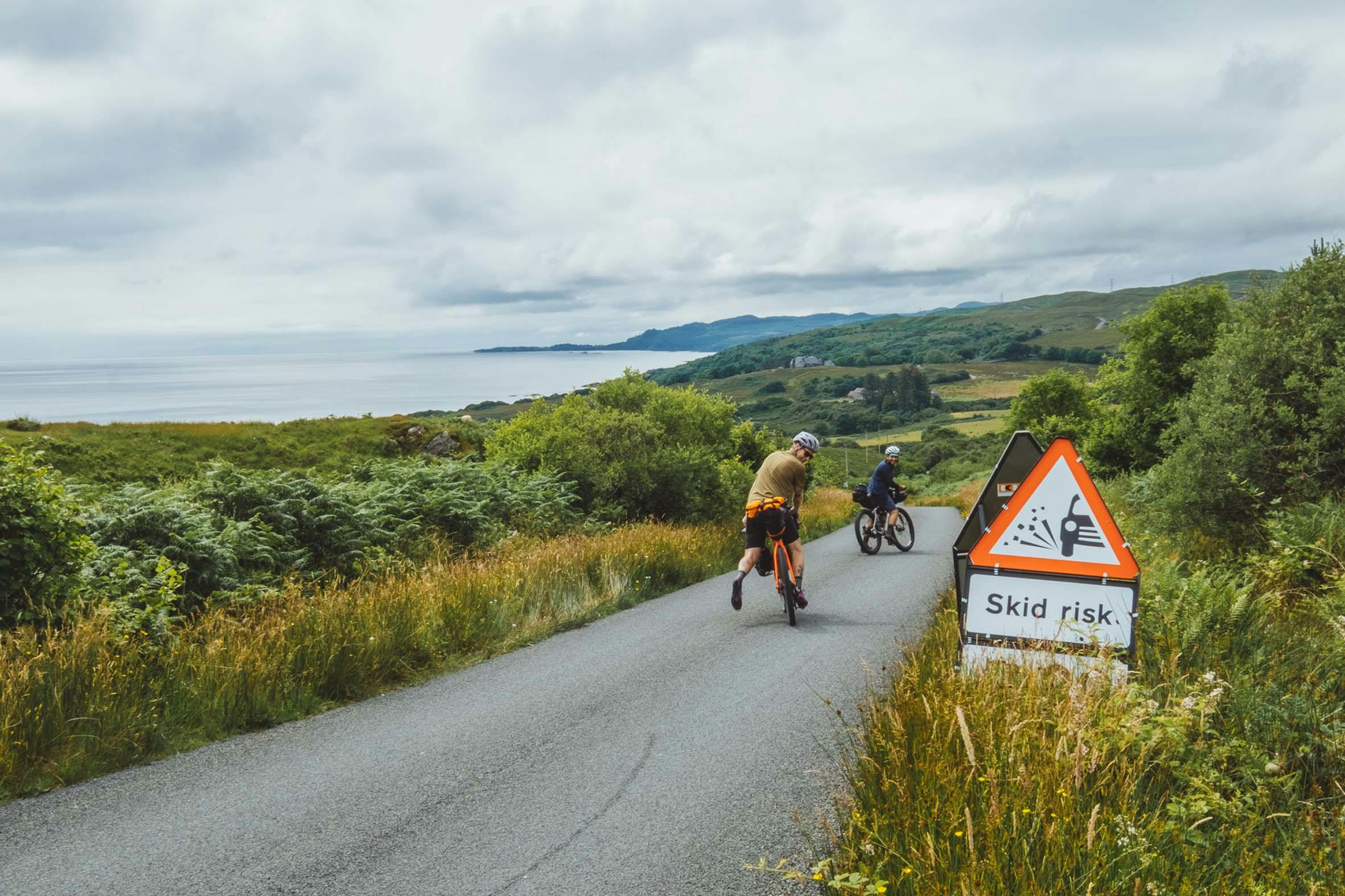
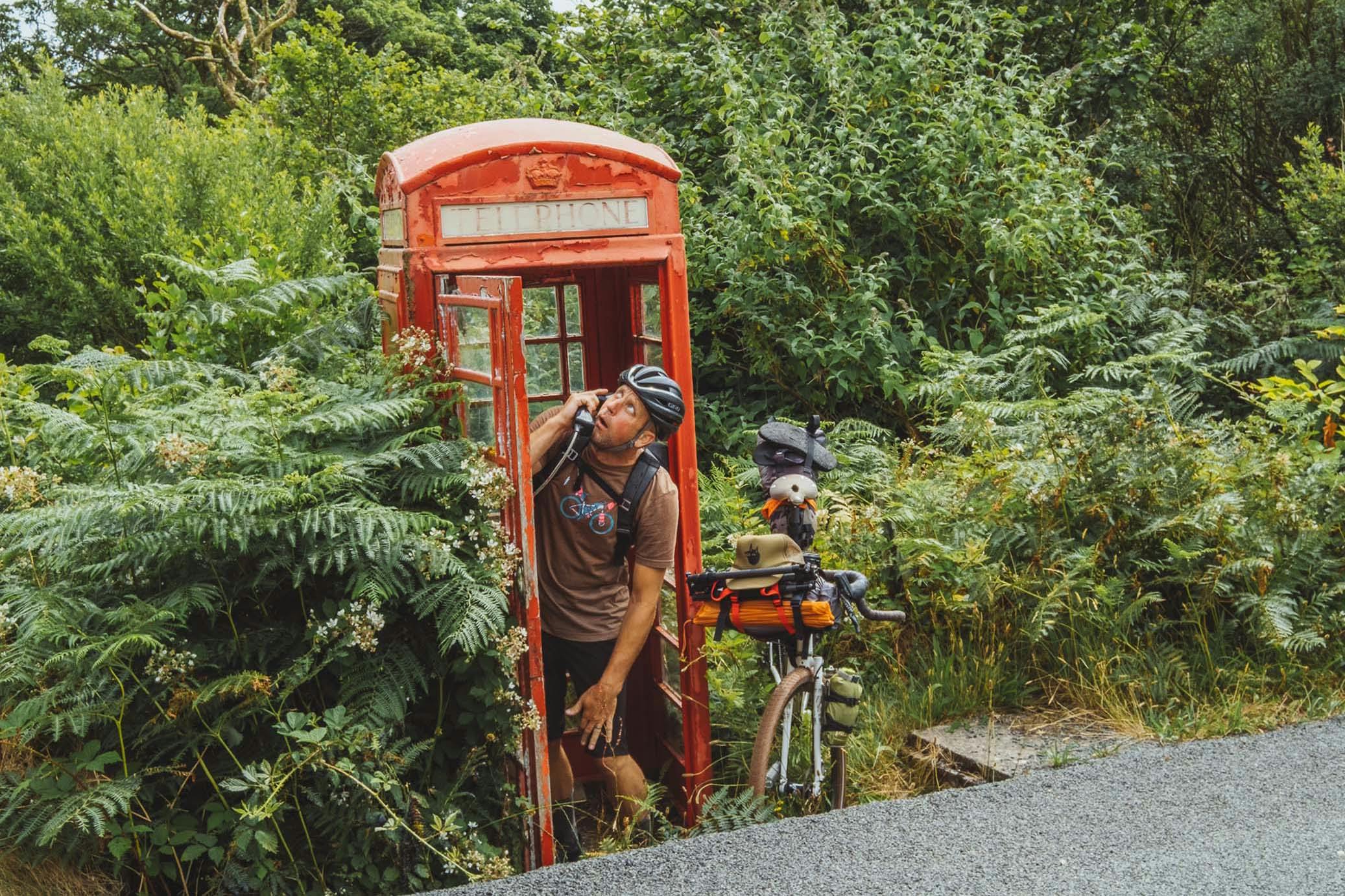

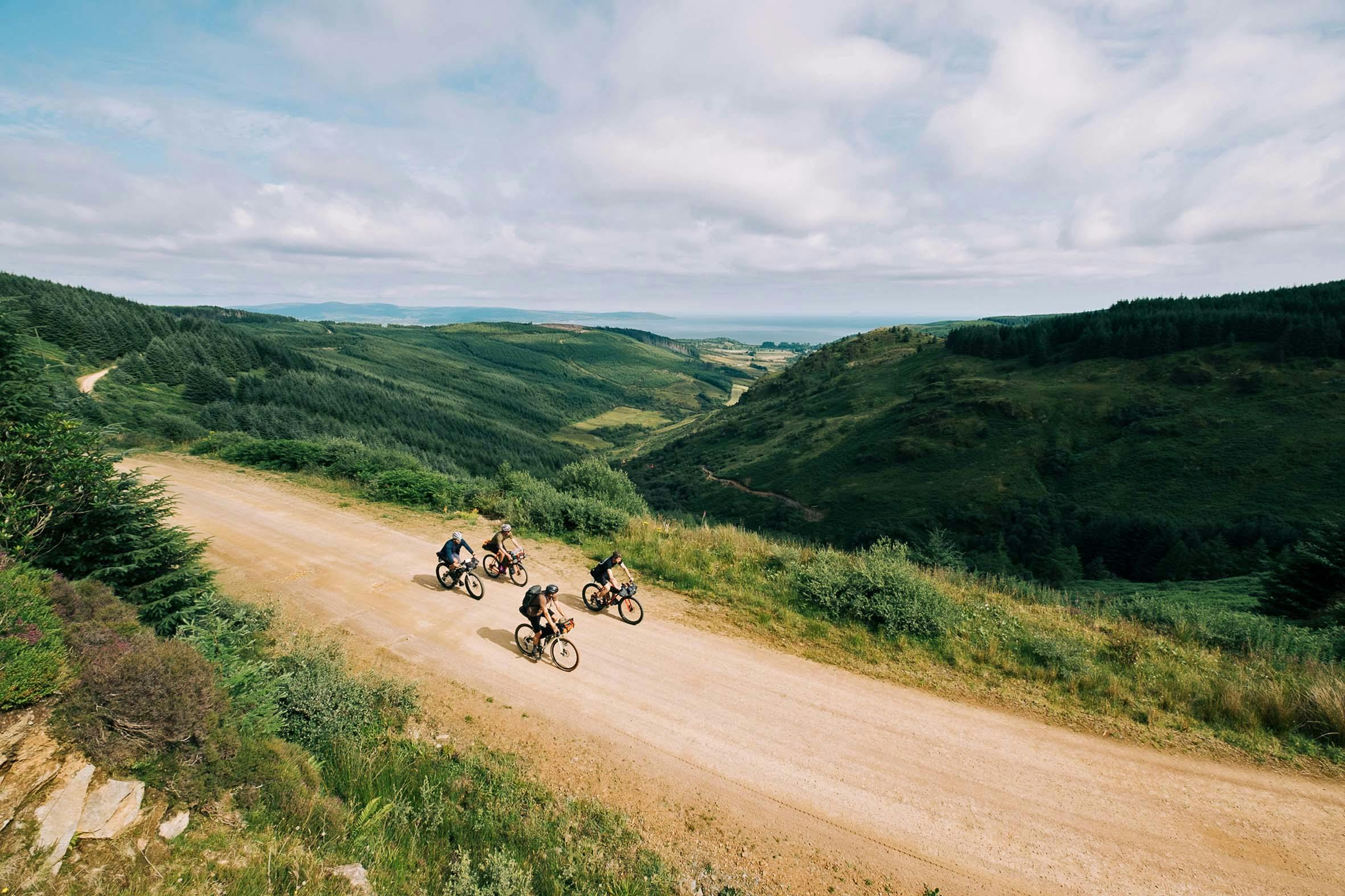
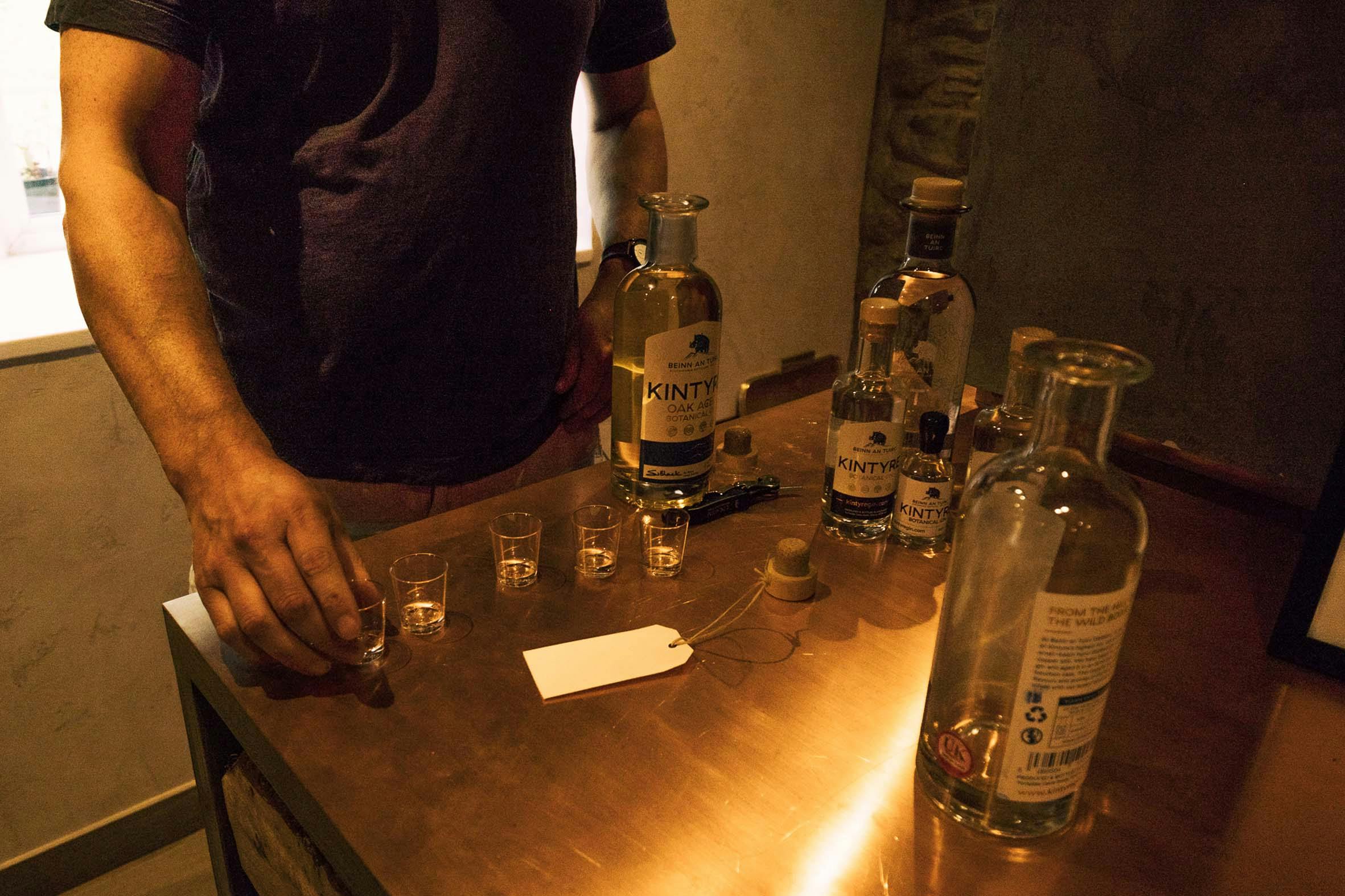
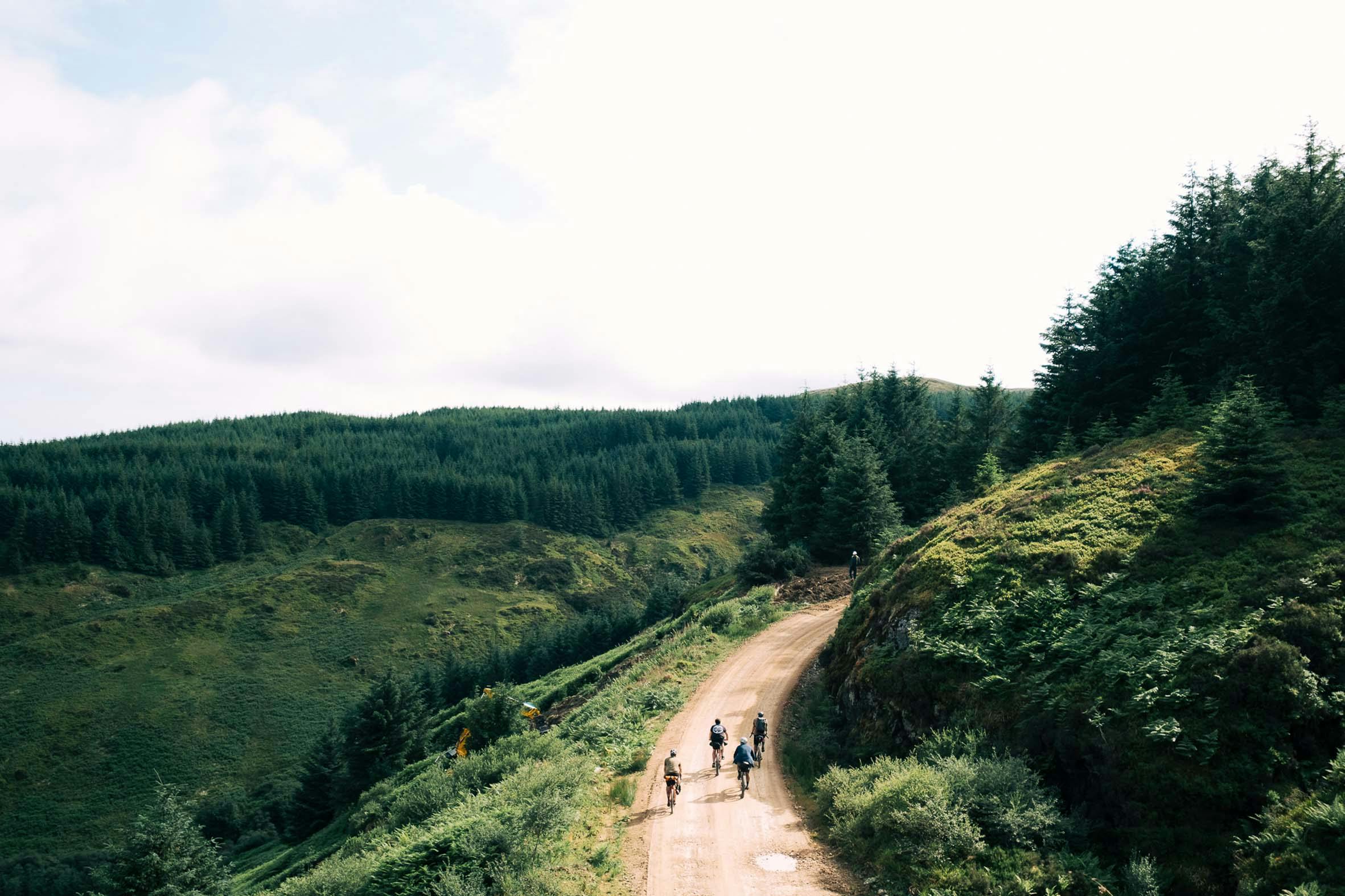
A significant part of this first trip followed the Kintyre Way – a fully waymarked hiking and biking trail that criss-crosses the Kintyre peninsula for 160km – which we joined at Carradale, heading straight off-road, off-the-beaten track through forest and moorland estates. As soon as we reached the high ridge-line that runs the centre of the peninsula, you could see why the Kintyre Way has been designated as one of Scotland’s Great Trails by Scottish Natural Heritage – to the west were views over the islands of Jura, Islay, Cara, and Gigha, while to the east the superb heights of Arran’s craggy mountain-scape, where we were headed in a couple of days’ time…
Standout moments were our rockpool hike-a-bike, burnt siena forest tracks through the vast wind farms across the breezy ridge tops, and oak-aged gin tasting at the Beinn an Tuirc Distillery (Kintyre Gin) with custodians Niall and Emma on the Kintyre Way, and our morning spent at Twin Beaches on the Isle of Gigha, where Chris and I took some time out after a huevos rancheros beach burrito breakfast to sketch our view across to the Paps of Jura…

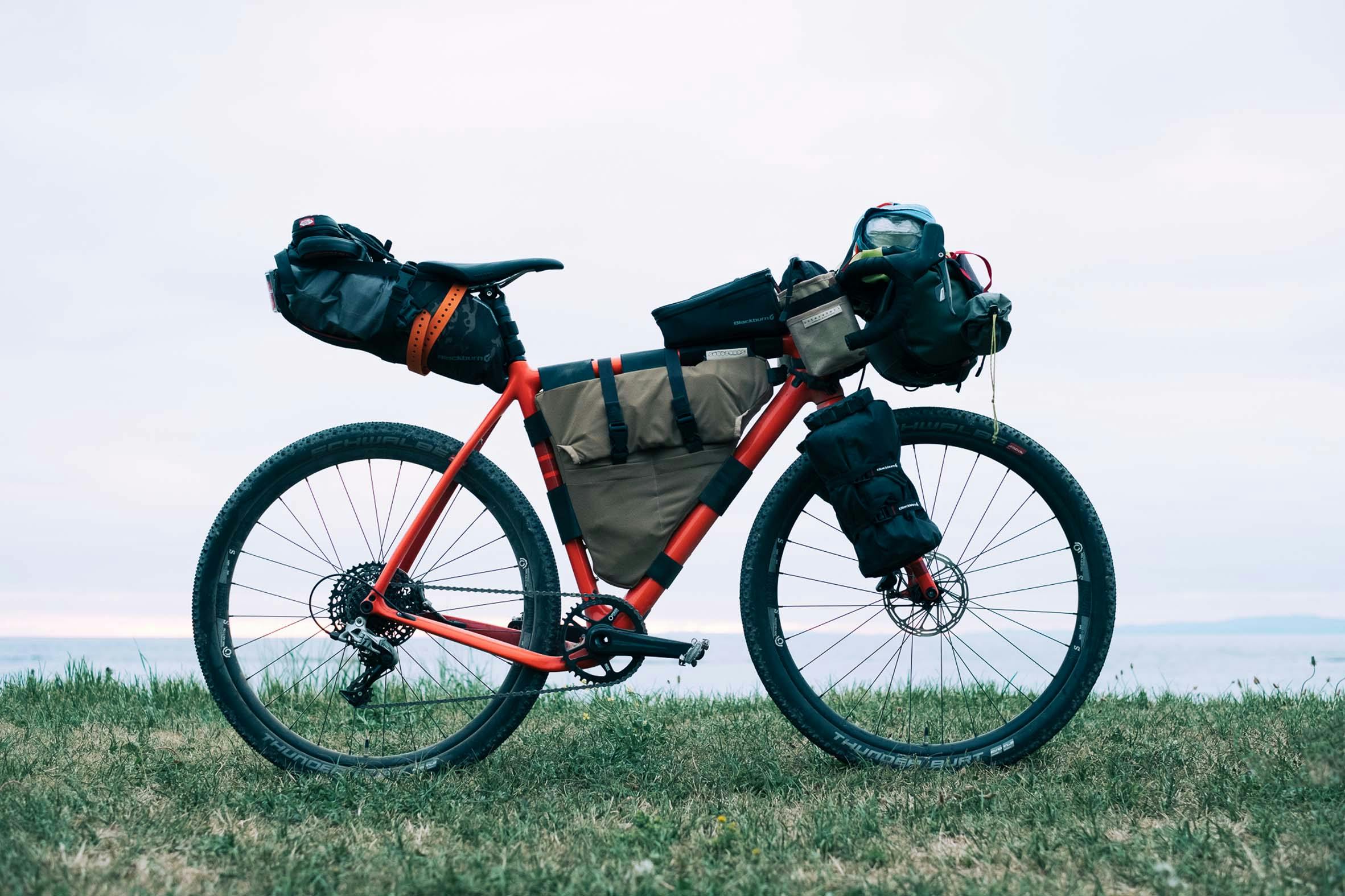
^^ Chris’s HAKKA MX // Ibis Cycles ^^
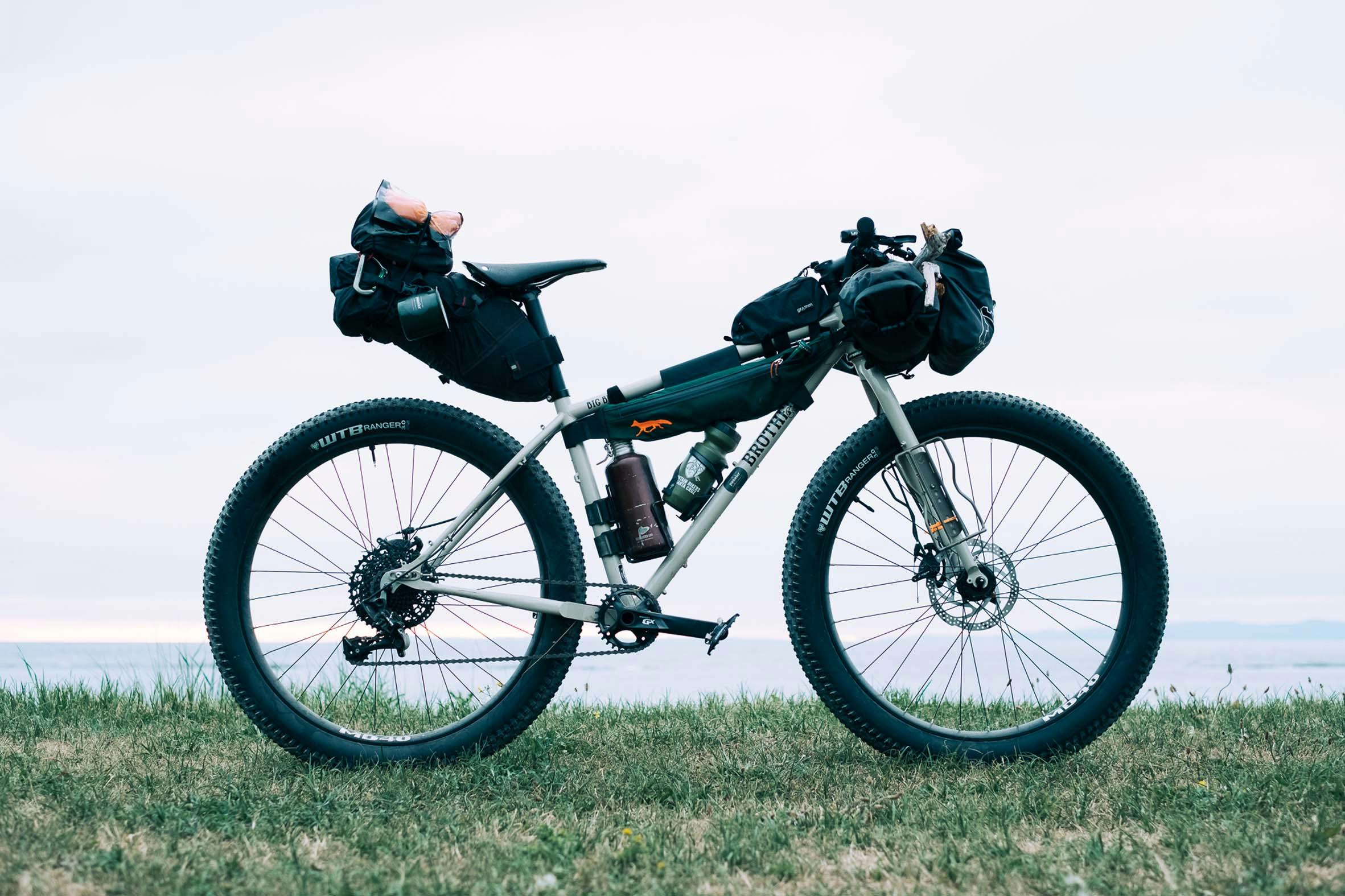
^^ Stefan’s BIG BRO // Brother Cycles ^^

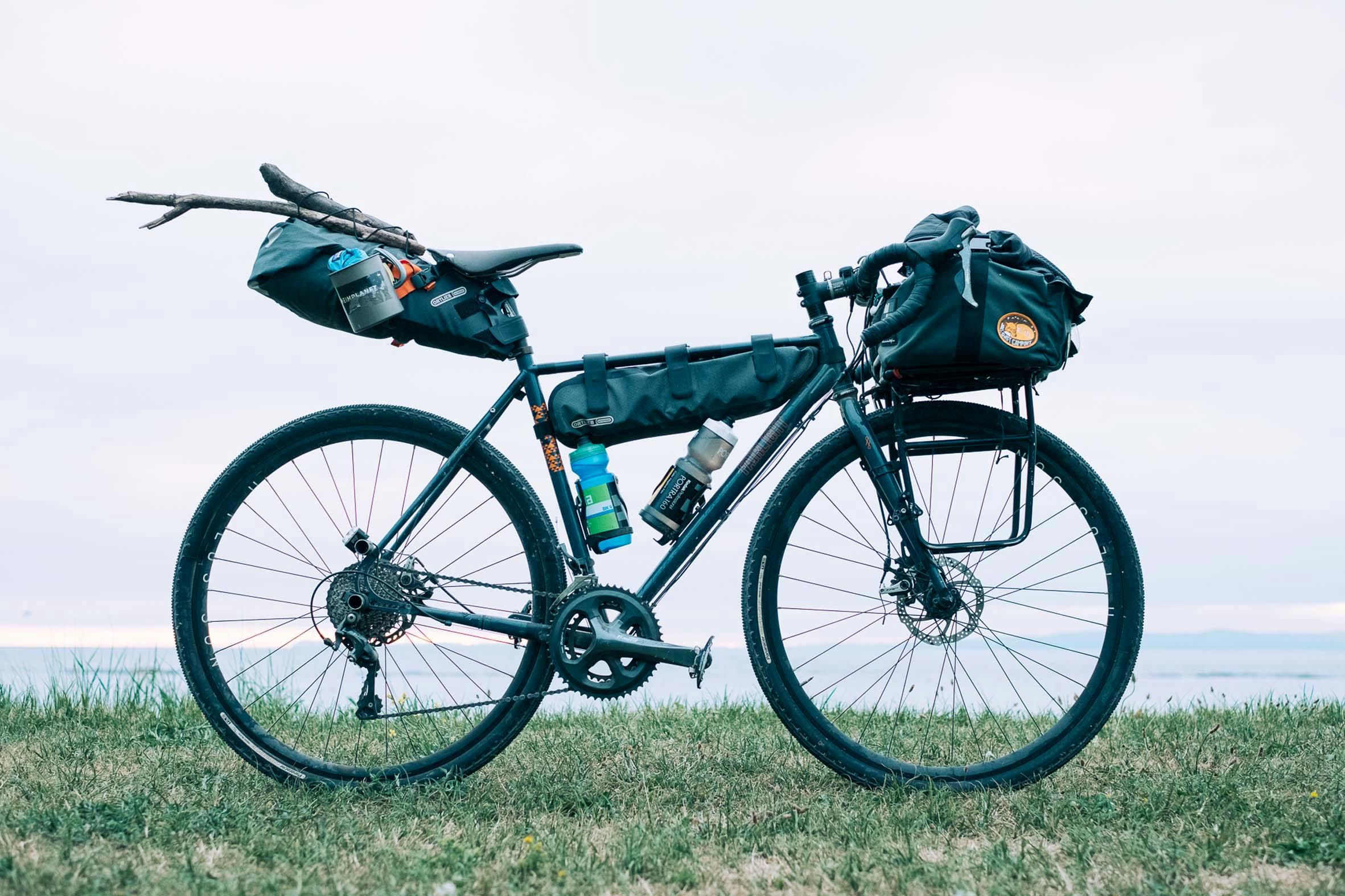

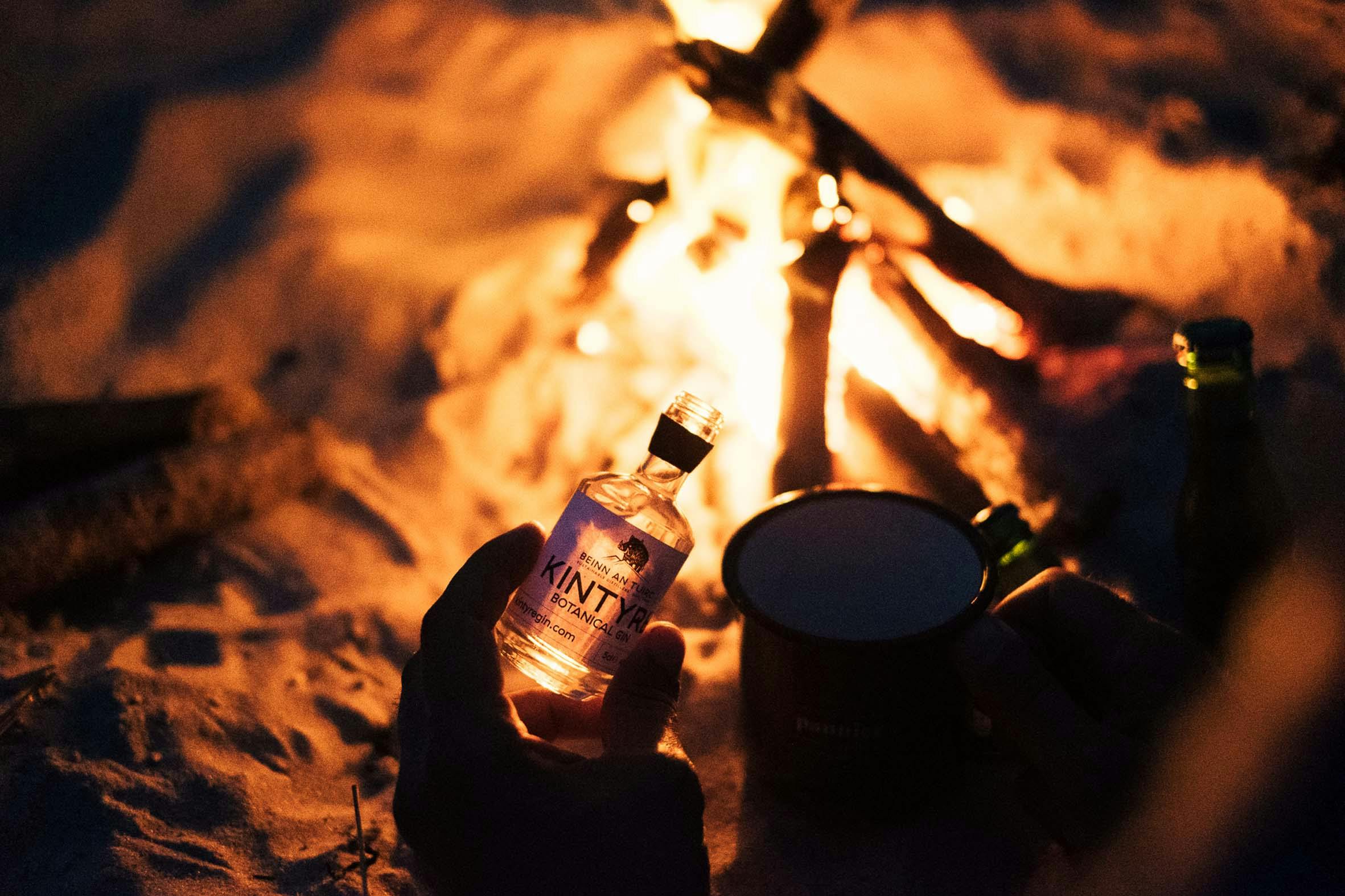
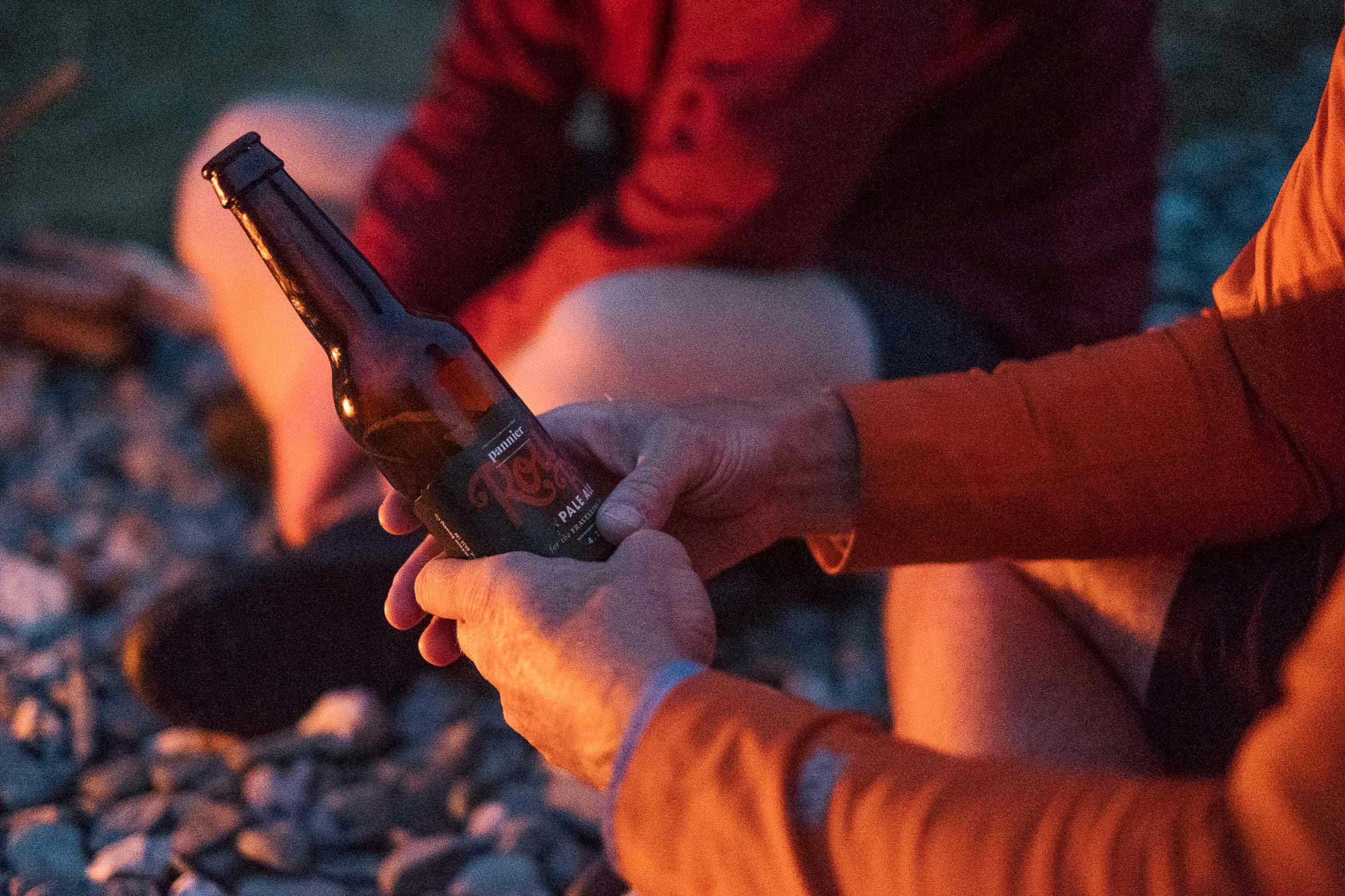


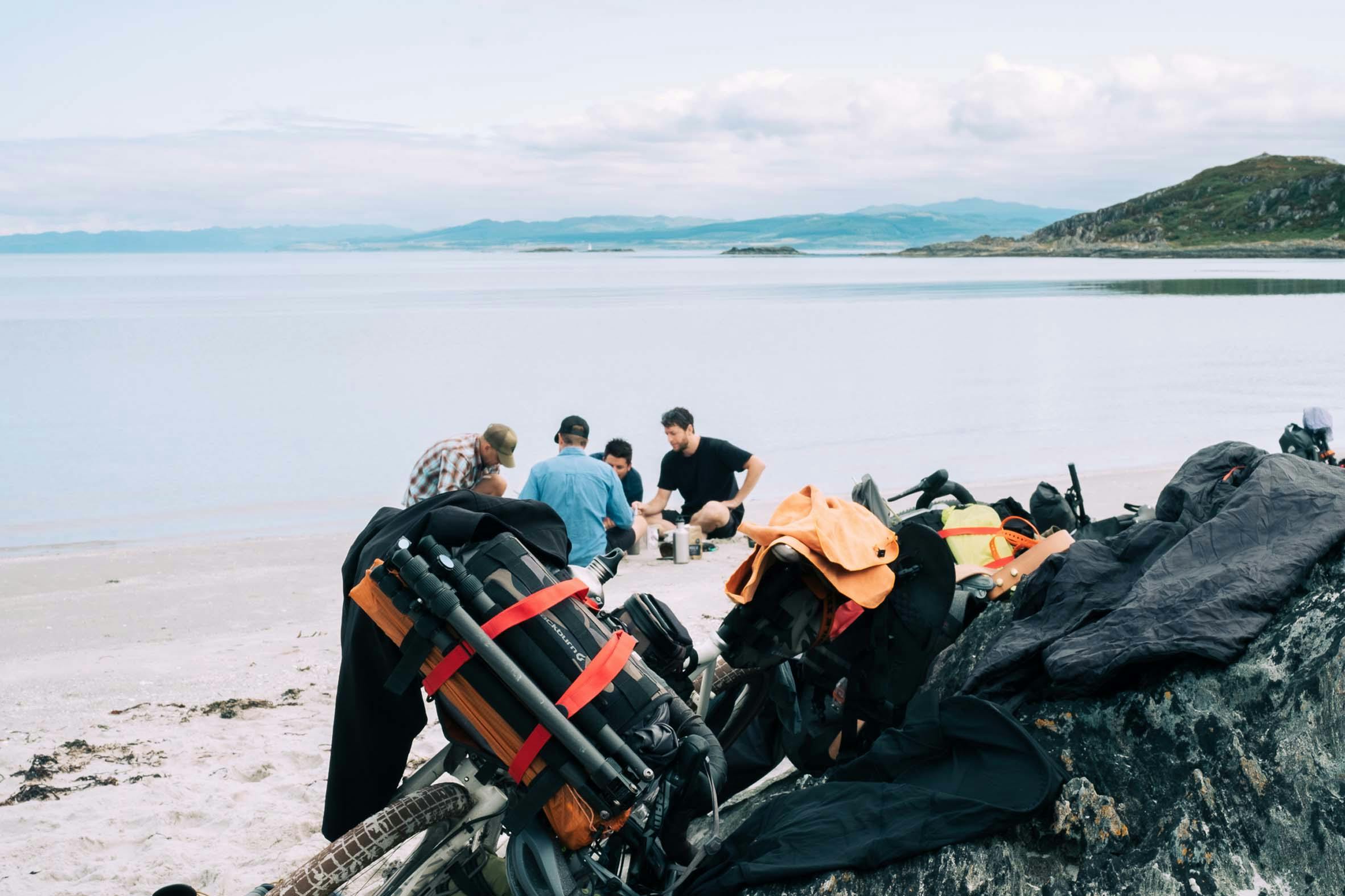
Gigha [n.]
Gudey (Good Island) > Gigay (1549) > Gyga (1658) > Gigha (2018 [Anglicised])
Just 6.5 miles long and 1.5 miles wide, the Isle of Gigha is an alluring tiny island that sits a short ferry hop off the coast from the Kintyre peninsula. Gigha has been occupied for over 5000 years and today, this tiny strip of an island is actually owned by the Islanders themselves – The Isle of Gigha Trust – since their 2002 buyout from a property group for £4million; a substantial increase from when Gigha was exchanging hands between the McNeill, MacNeill and Macdonald Clans back in the 1500’s, for today’s equivalent of £170…
The Islander buyout has supposedly safeguarded Gigha from a jostling uncertainty, and has resulted in a 50% population increase. Gigha is now home to various seafood and organic produce companies, its own inn, Achamore House & Gardens, a community shop, and The Boathouse (a renowned seafood eatery and campsite) … as well as it’s northern beaches, of course, where we were headed for an unrivalled view across to Jura.
Like we were to find on Jura, there is only one road on the less inhabited Hebridean Islands – let’s call it ‘The Spine Road” – that runs north/south slap-bang through the centre of the island. Poor Chris had been carrying his dozen eggs, kept cosy (Voile strap-ped to sh*t) on his bars, for the last 36 hours since the shop on Arran, so was desperate to get them cooked up. I had the perfect spot in mind – the north-facing one of the ‘Twin Beaches’ – Bagh na Doirlinne. A short ride up the tarmac spine road revealed the unique headland to our left, and a footpath through the ferns and brambles that would take us to the shore. Cue turquoise seawater swimming, white-sand breakfast sizzling, and seashore sketching…

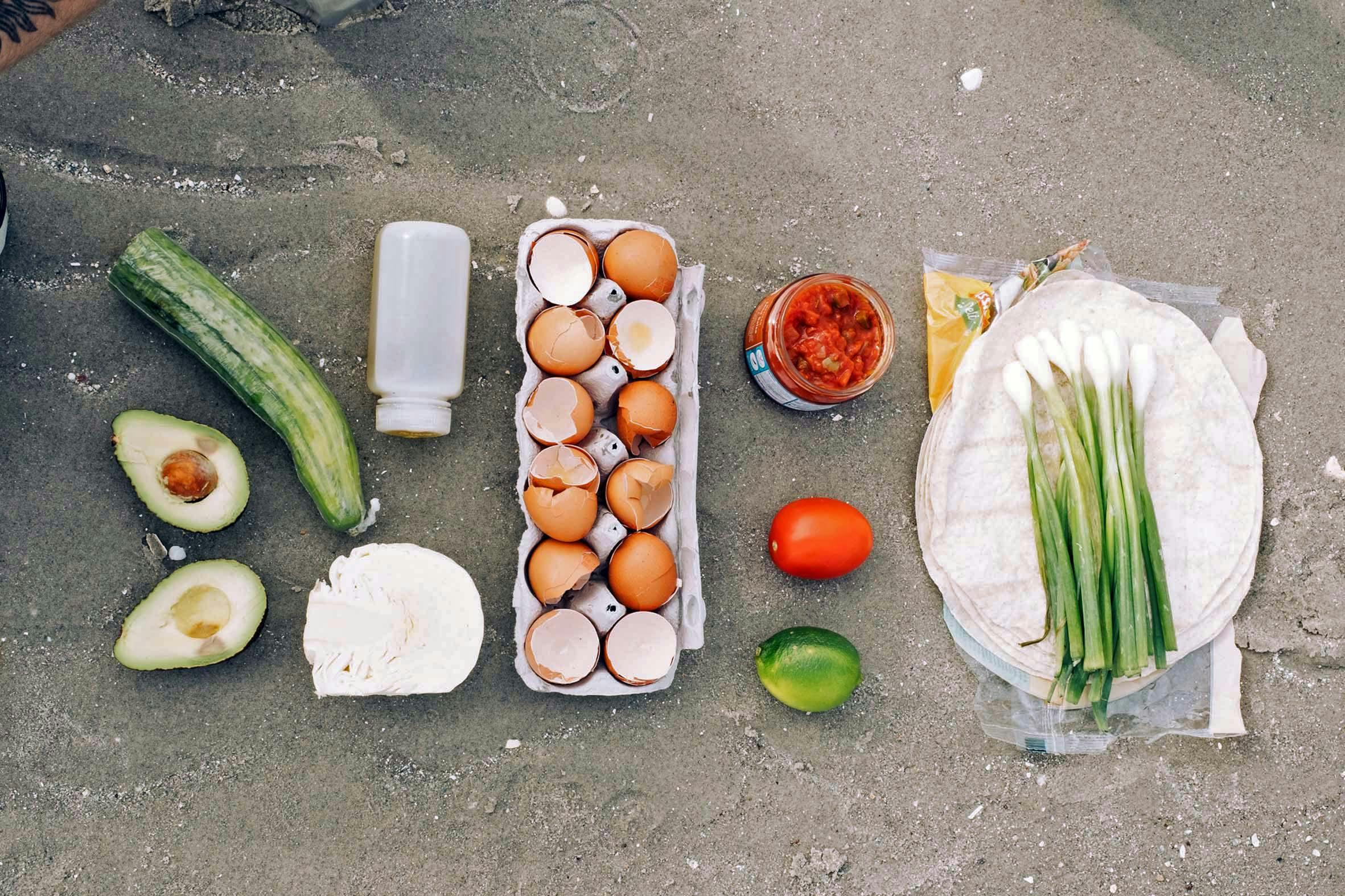
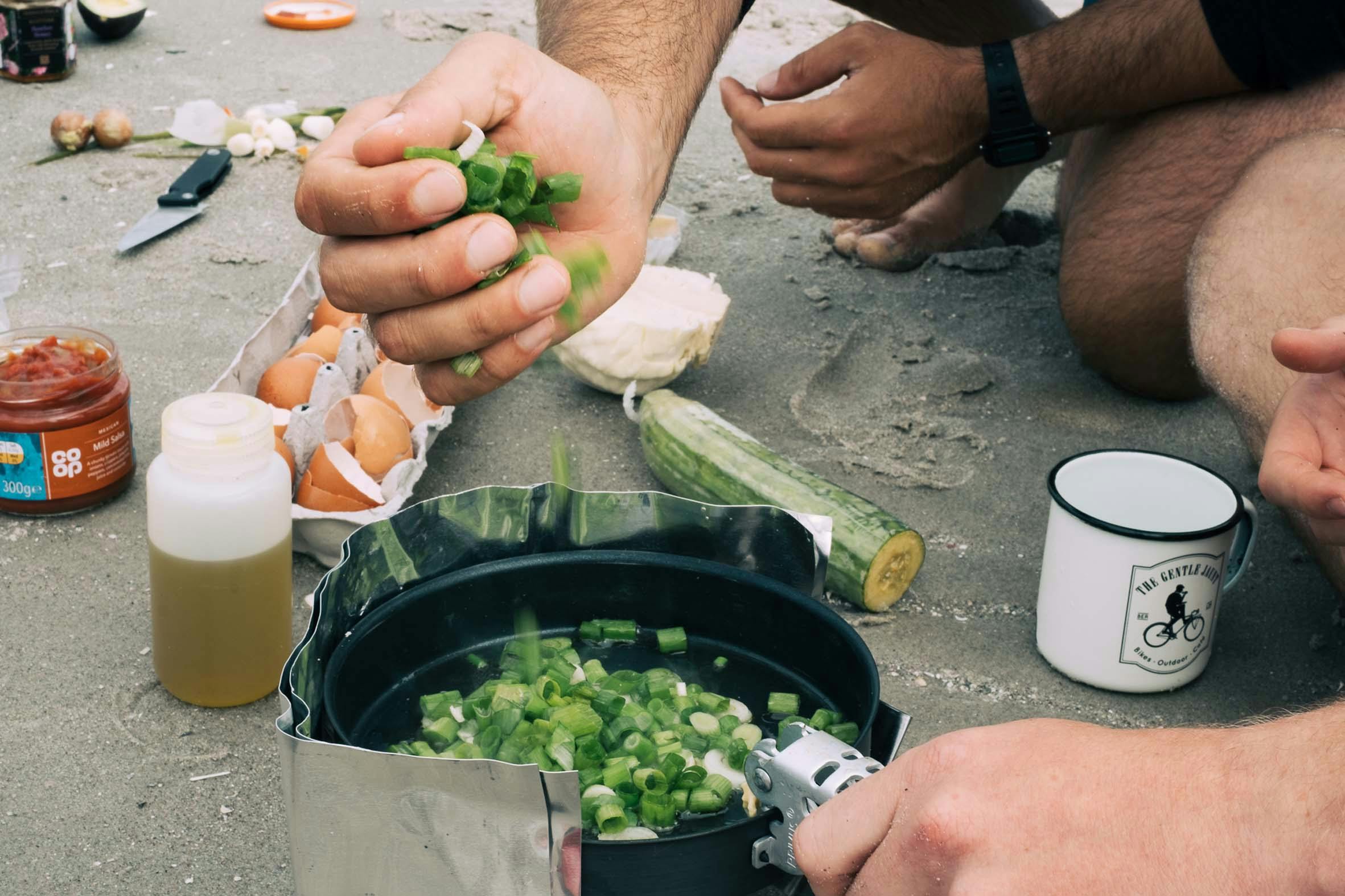
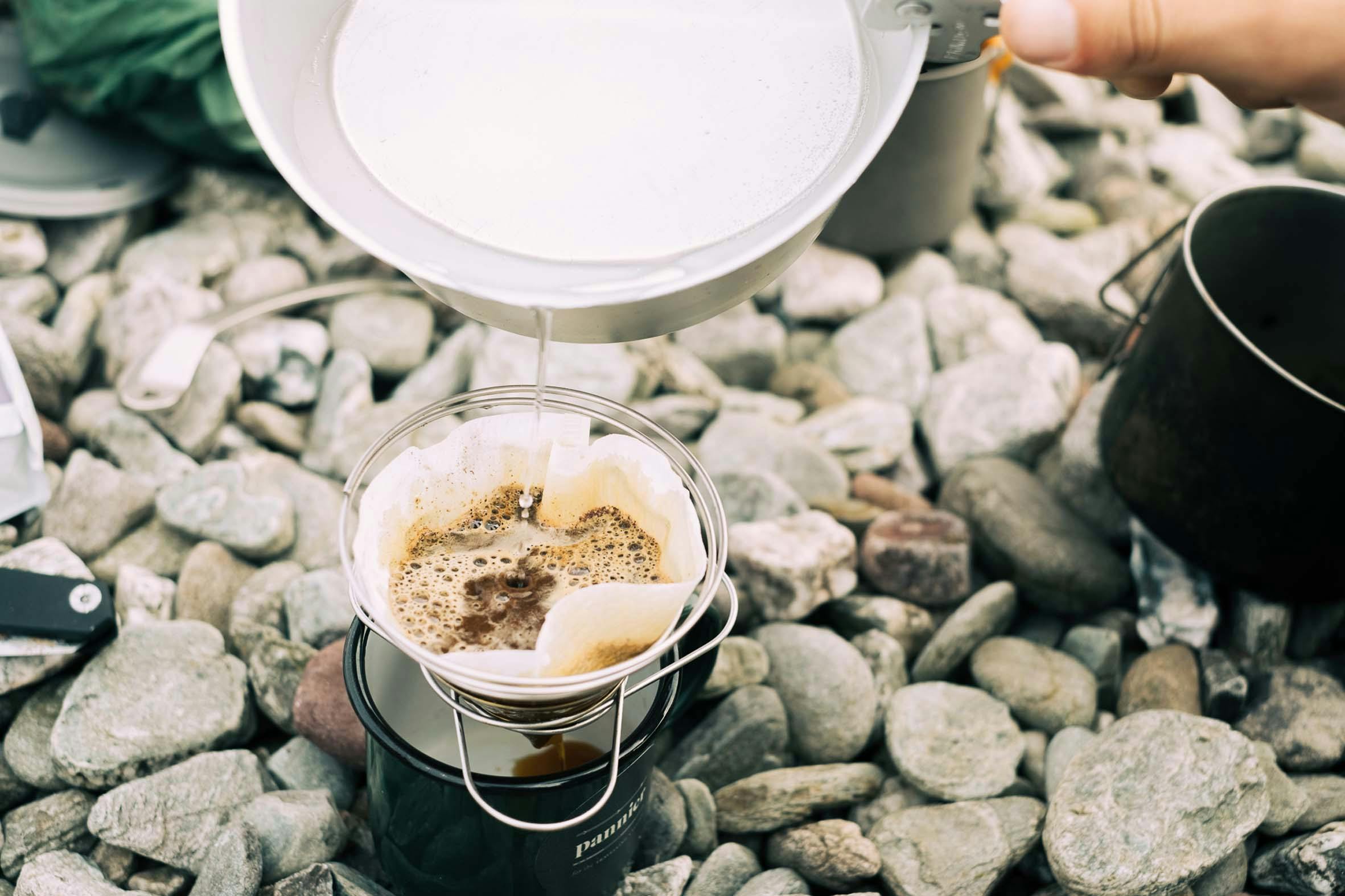

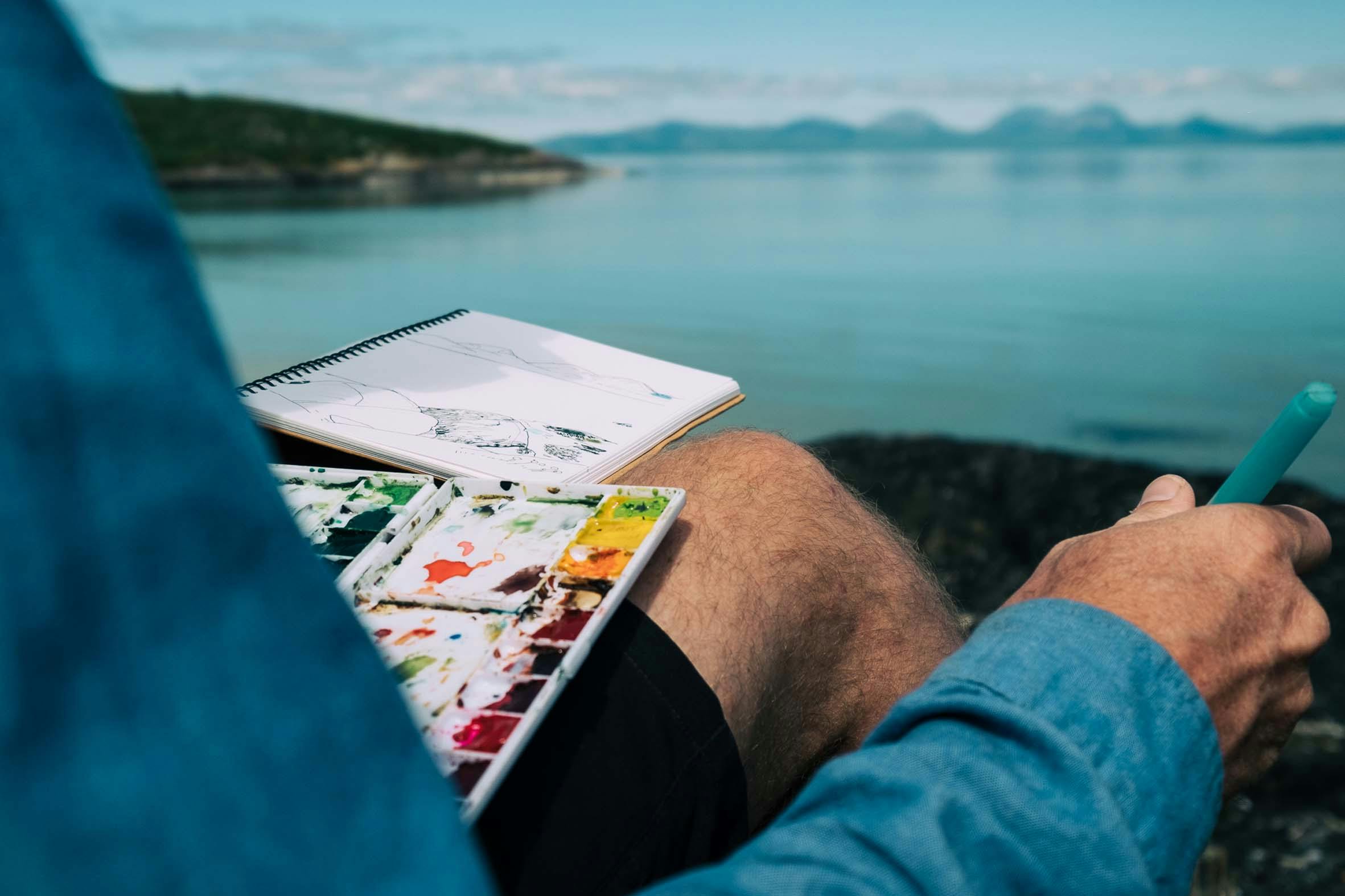
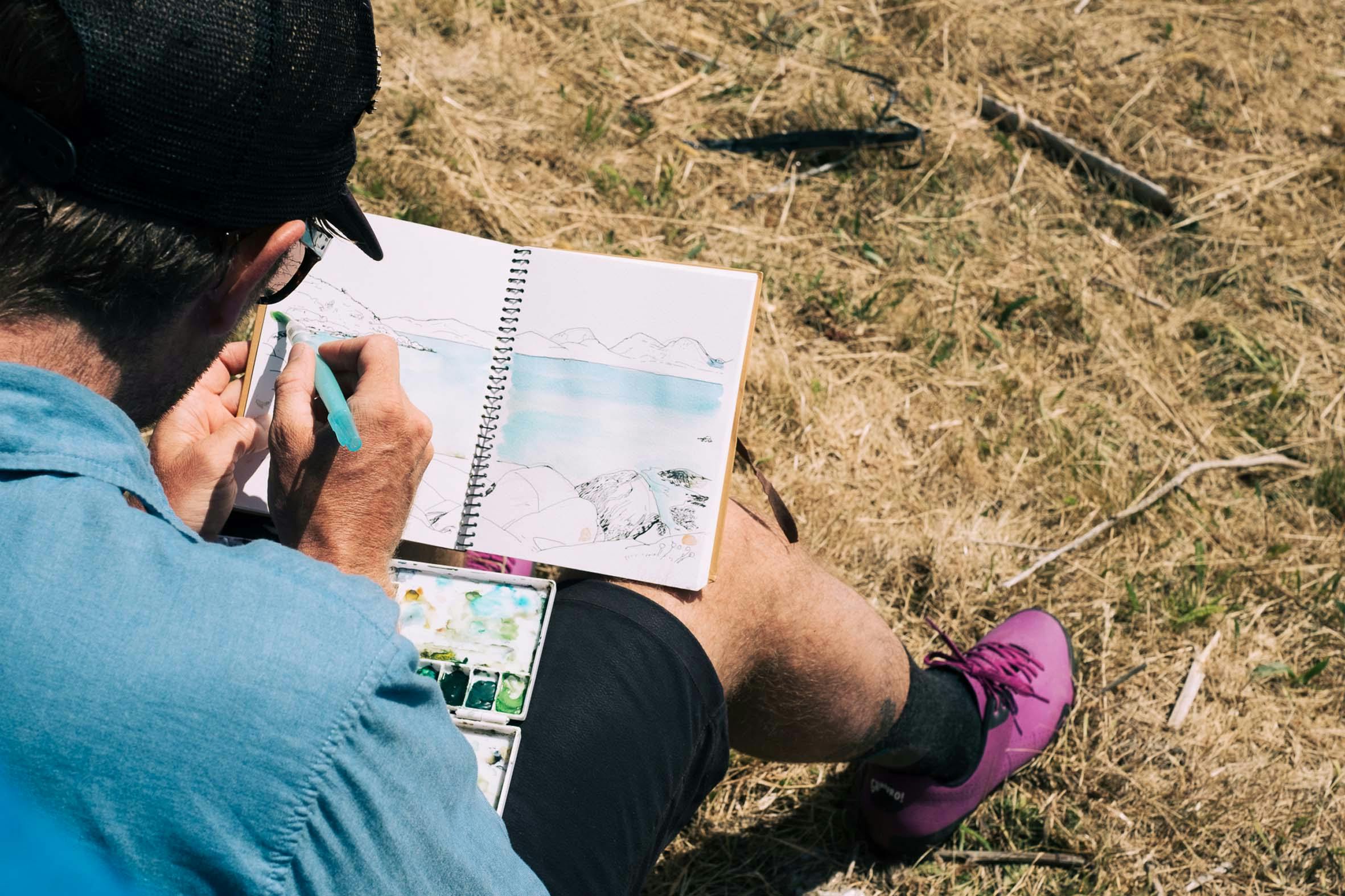
“Jura is best known for her Paps – a cluster of three main quartzite scree peaks – seen for miles around from land and sea. They are best viewed from a distance … where they appear as symmetrical domes” AW
The Paps of Jura (Scottish Gaelic: Sgurr na Cìche) are three mountains on the western side of the island of Jura that peak at 785 m – steep-sided screed quartzite hills with distinctive conical shapes – the word ‘pap’ is actually an ancient word, of Old Norse origin, for ‘breast’. The Paps are conspicuous hills that dominate the island landscape as well as the landscape of the surrounding area, seen best (as we could here) from all the surrounding islands.
Mountain names in Scotland tend to be prefixed with an equivalent word for ‘mountain’ – Ben, Beinn – or sometimes features like Sgurr (scar). On Jura, it’s Beinn [Old Norse for mountain or hill]:
Left > Right:
Beinn A’ Chaolais (734m) pronounced ben-a-cheul-aysh
Beinn An Óir (785m) pronounced ben-yan-or
Beinn Shian Taidh (755m) pronounced ben-hee-un-tay
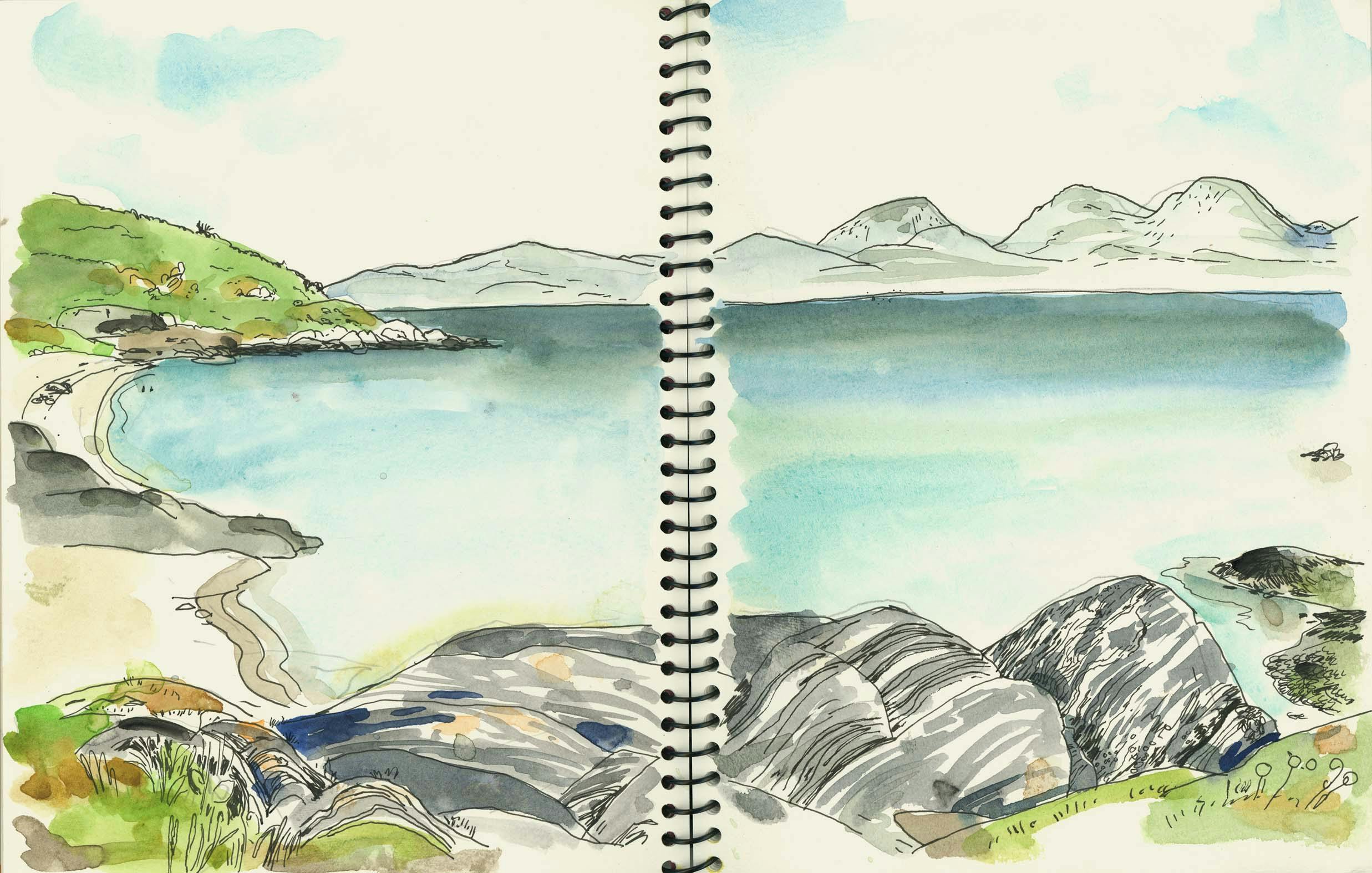
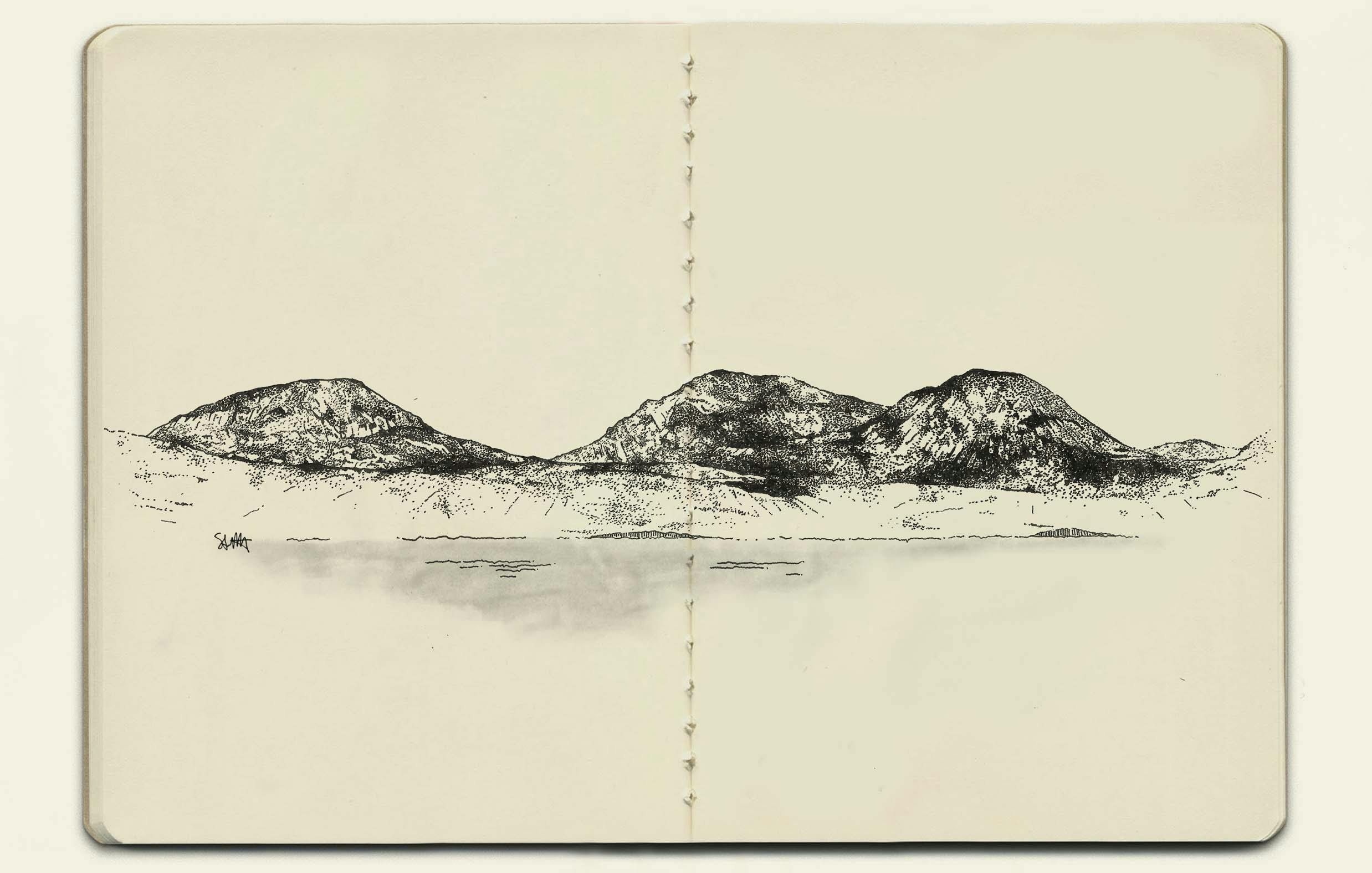
“As regards to pronunciation of Gaelic names, the average visitor from south of the border simply has to give up” AW

184KM (Ferry 22KM)
2340m+
Making our way to Arran for Grinduro! Scotland – a gravel ride/race/party across the island’s incredible network of roads, tracks and trails…
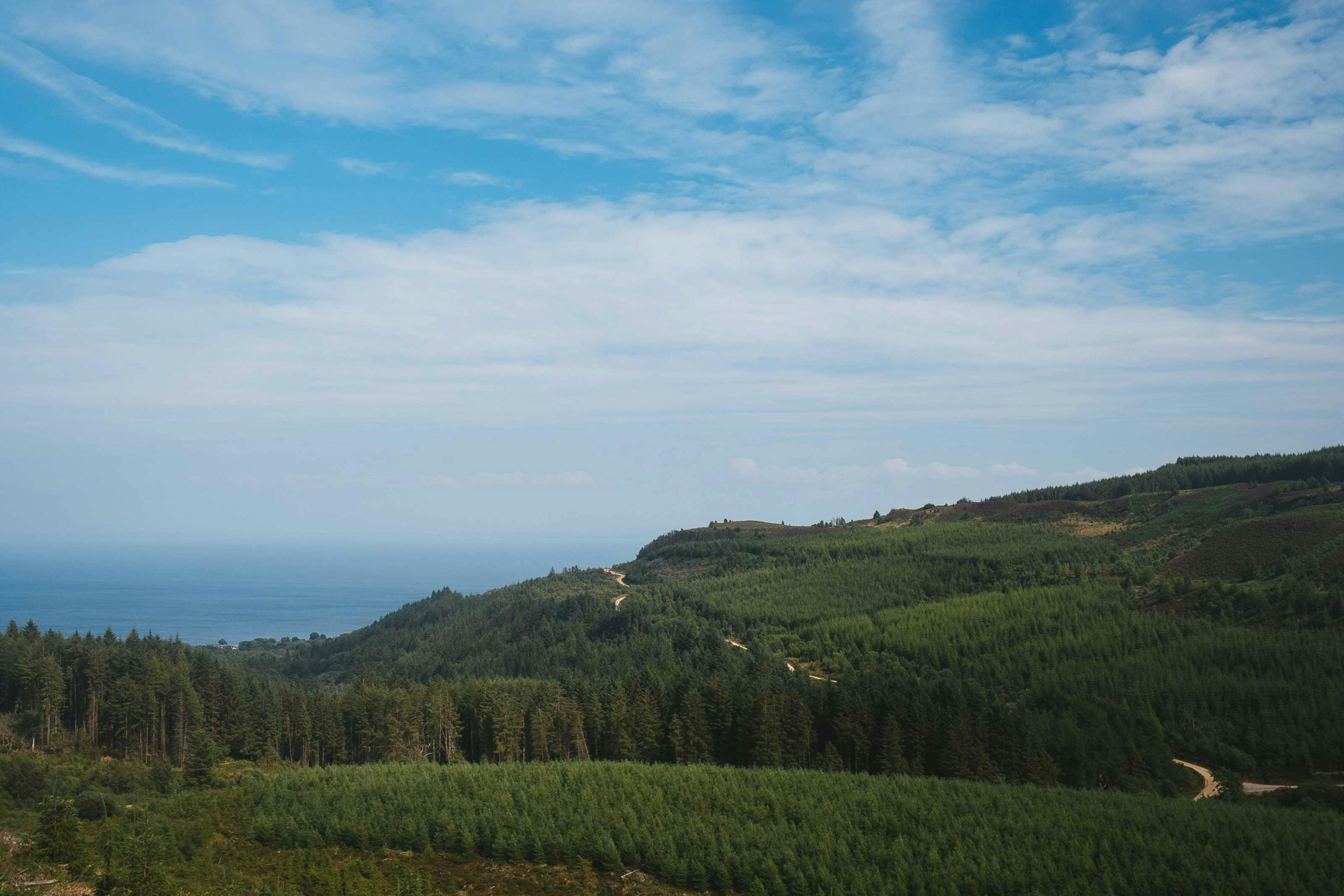
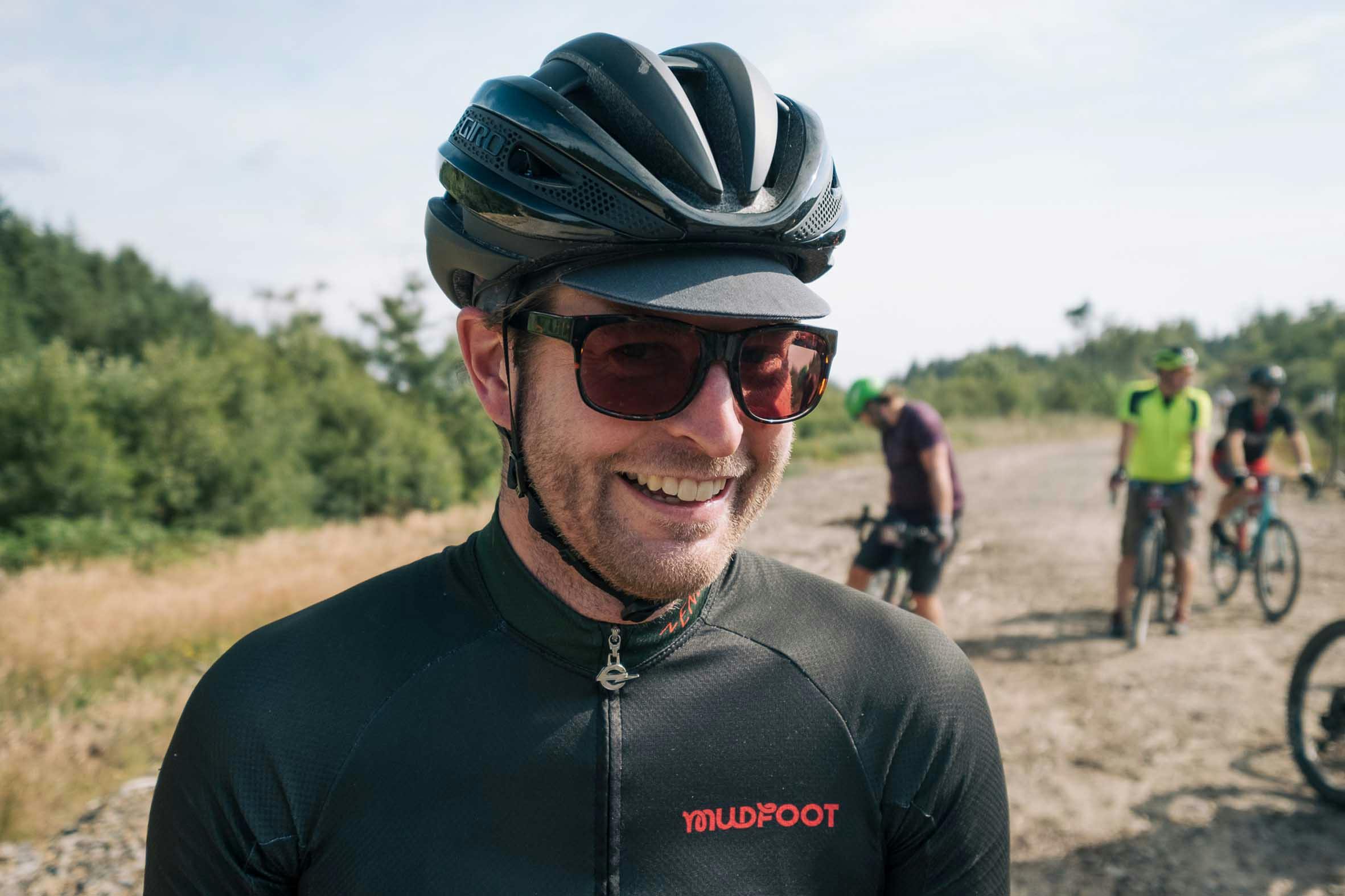
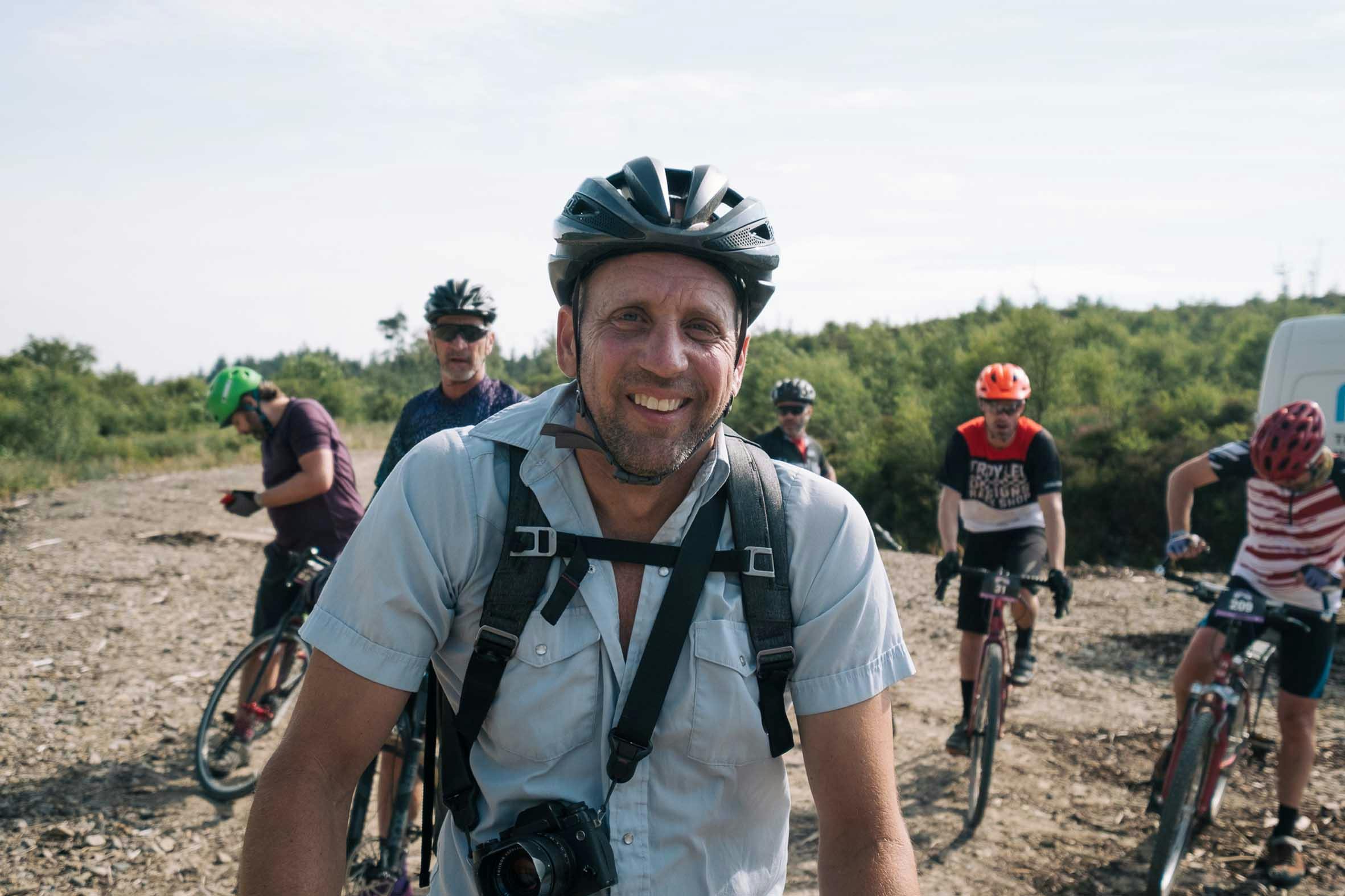
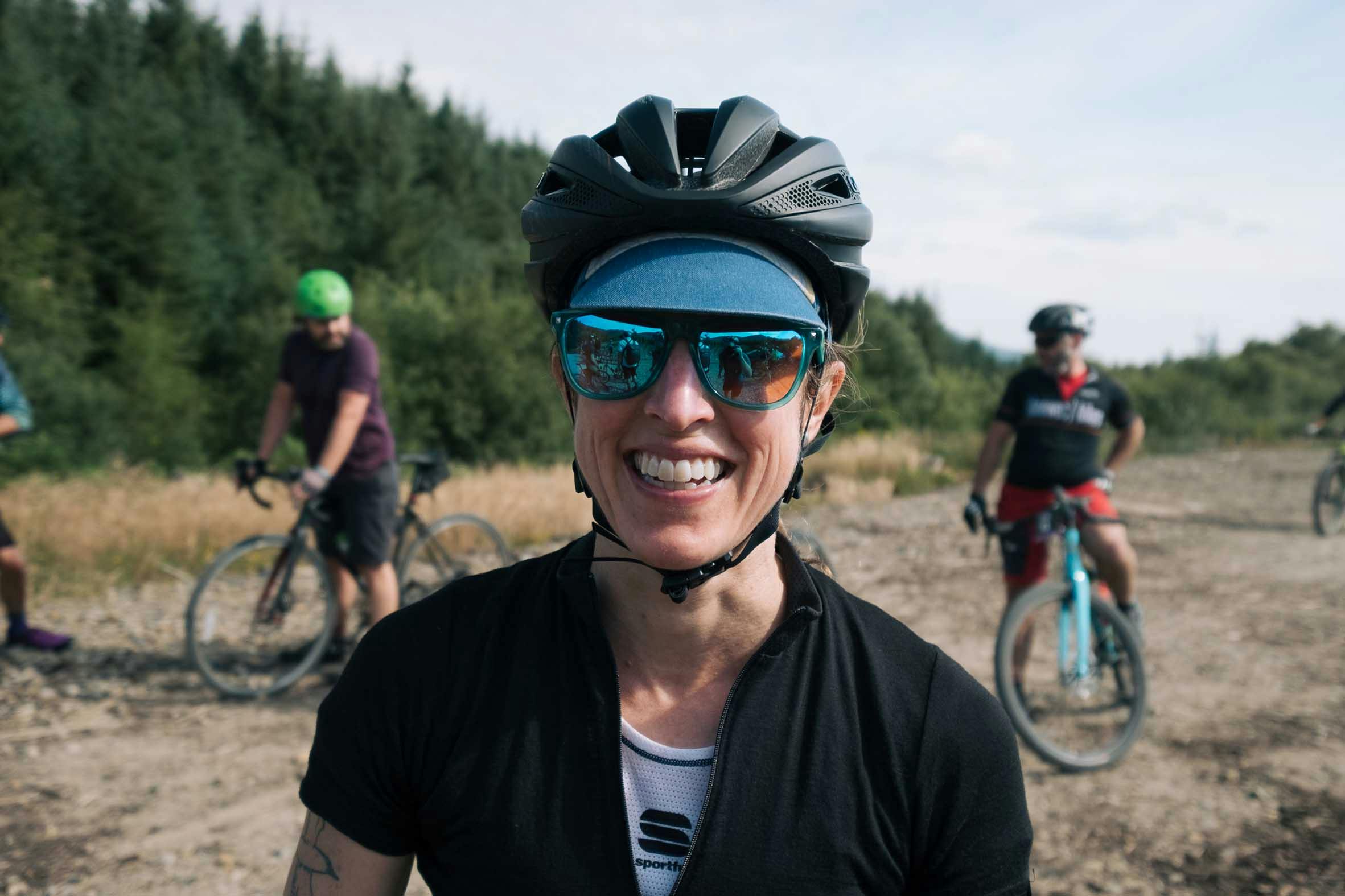
You heard it here first: the Pannier 15KPH Club went bike racing. Albeit the most suitable race ever for us, given that it was a mixed-terrain ramble across the nicest parts of the Isle of Arran, with decent food and drink along the way.
Grinduro is, according to founding company Giro, the “world’s most interesting bike race” >> a new-ish format event where folk ride a tough ol’ gravel grinder course of 45 miles, with four Enduro style timed-sections each around 5-15 mins long. They say “the course is a serious affair (83.3km of rolling terrain) but the Grinduro isn’t meant to be a sufferfest. We’ve linked together some of our favourite roads and trails on the Isle of Arran. With spectacular scenery and a friendly pace, you’ll be in no big rush to find the finish line” …and, I can now vouch for the fact that this is all 100% true – we’d already smashed a couple of the timed sections and a few gin & bitter lemon sorbets by 12.00pm, leaving a tiring but super chilled and enjoyable afternoon in the sunshine. It was our definitely in keeping with a Pannier day out on the bikes, with the added bonus of a few short bursts of ‘official’ competition and challenge … just don’t bother checking our times … unless you want to see who ‘won’ the women’s event, which NcNally sibling beat who on their Ibis Hakkas, and who fared better out of Will and I, on the Brother Big Bros 🙂
Grinduro Scotland is set to return to the Isle of Arran in July 2019 … you should pencil it in.
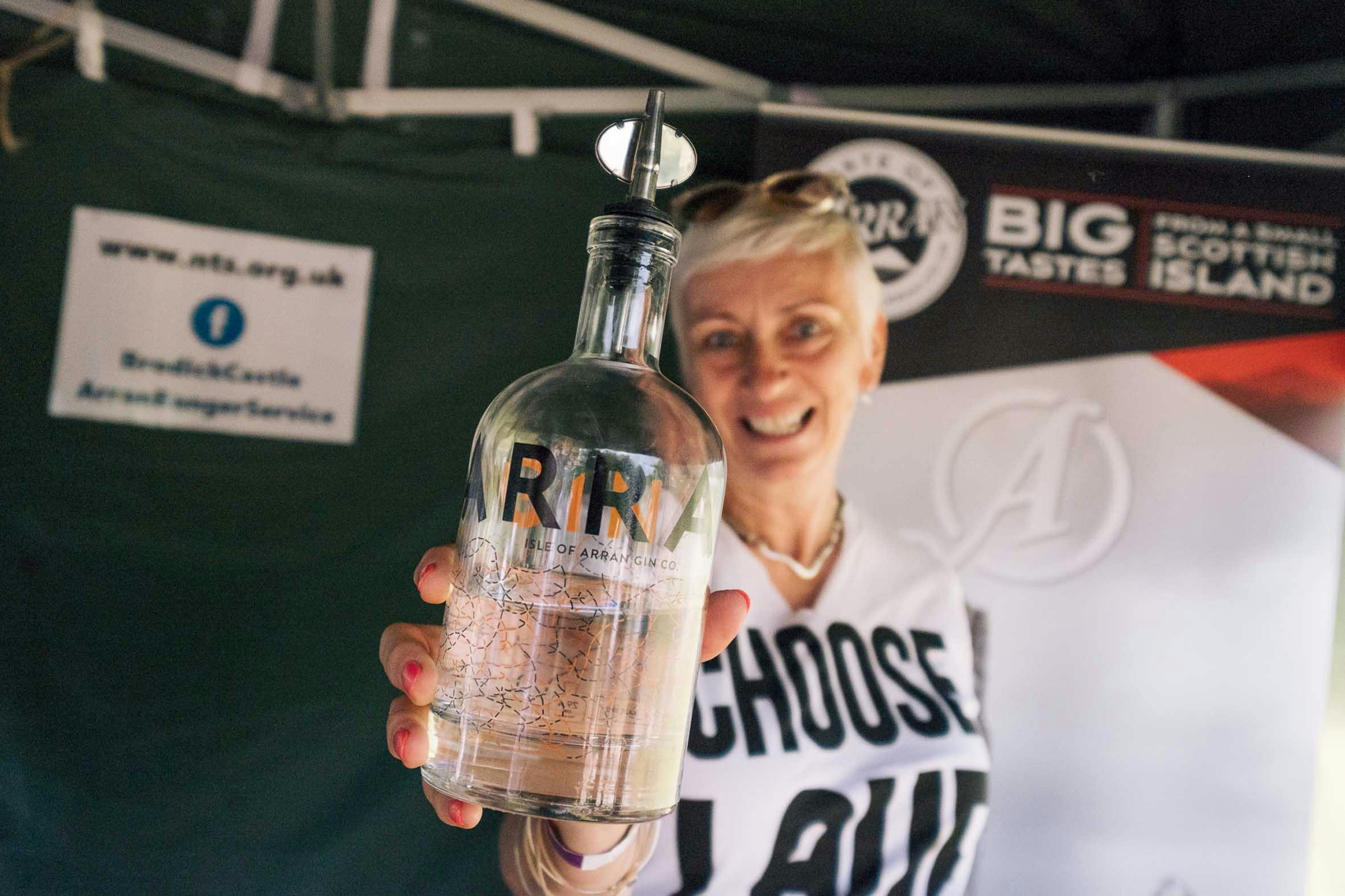
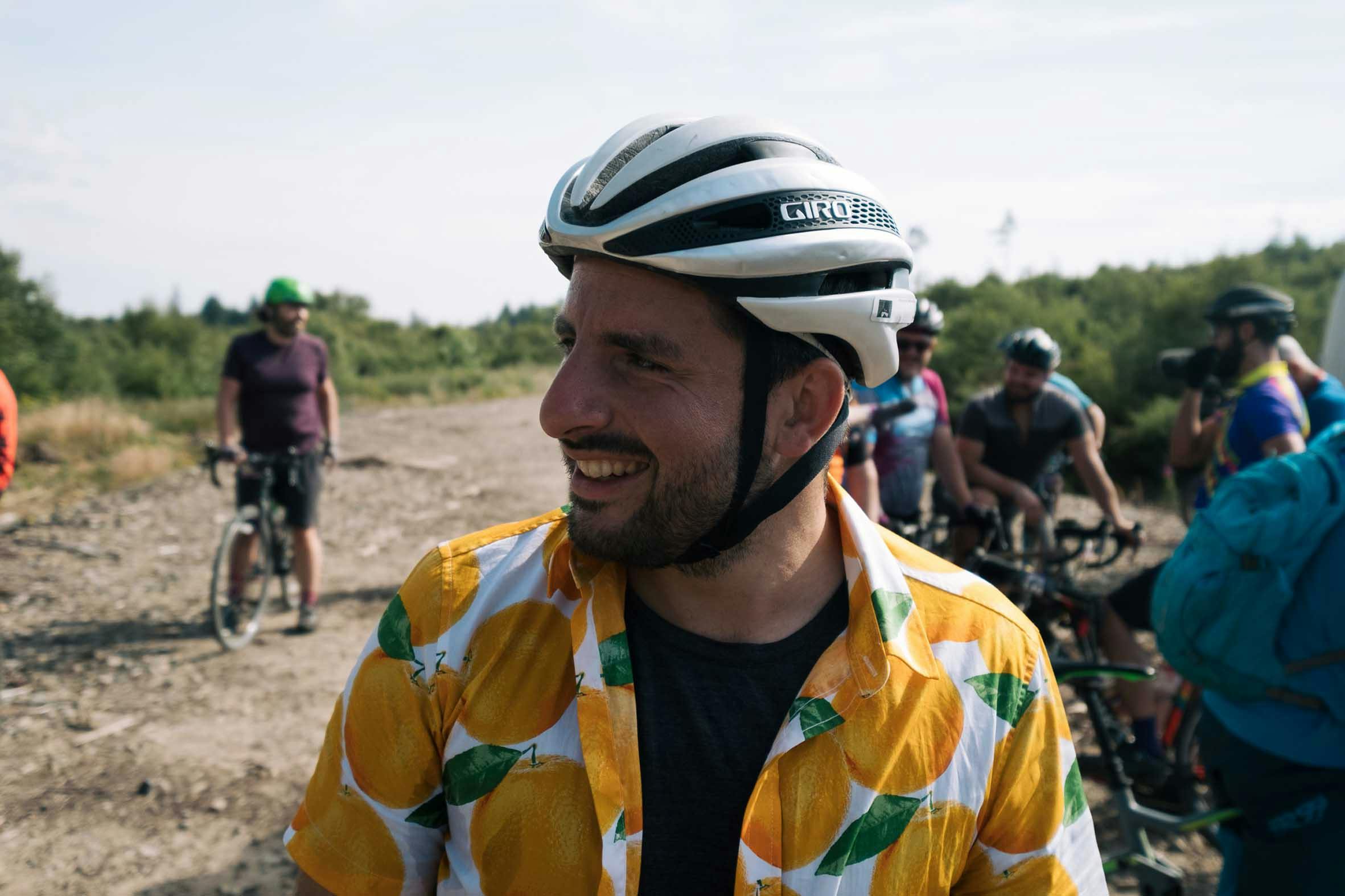
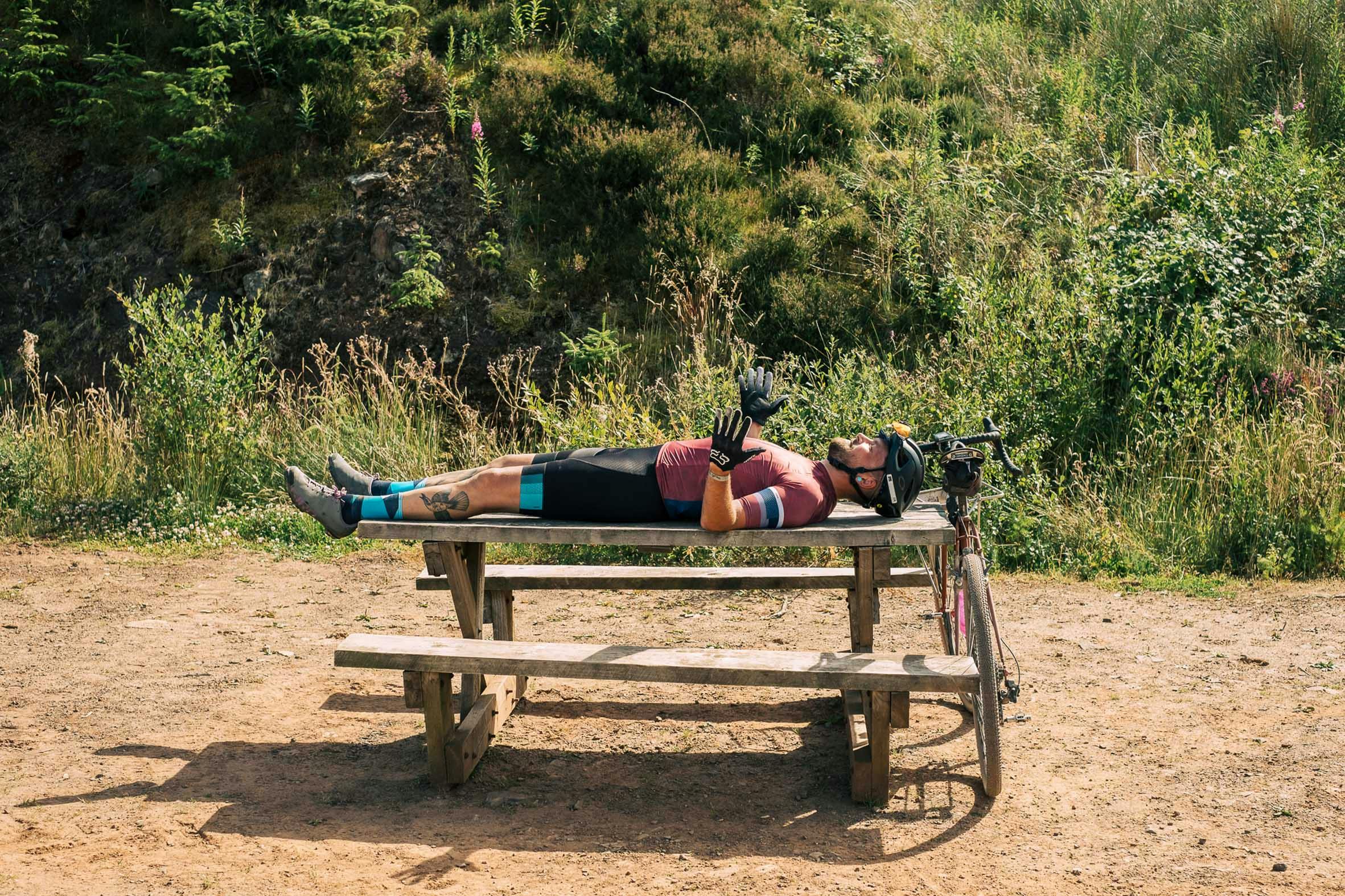
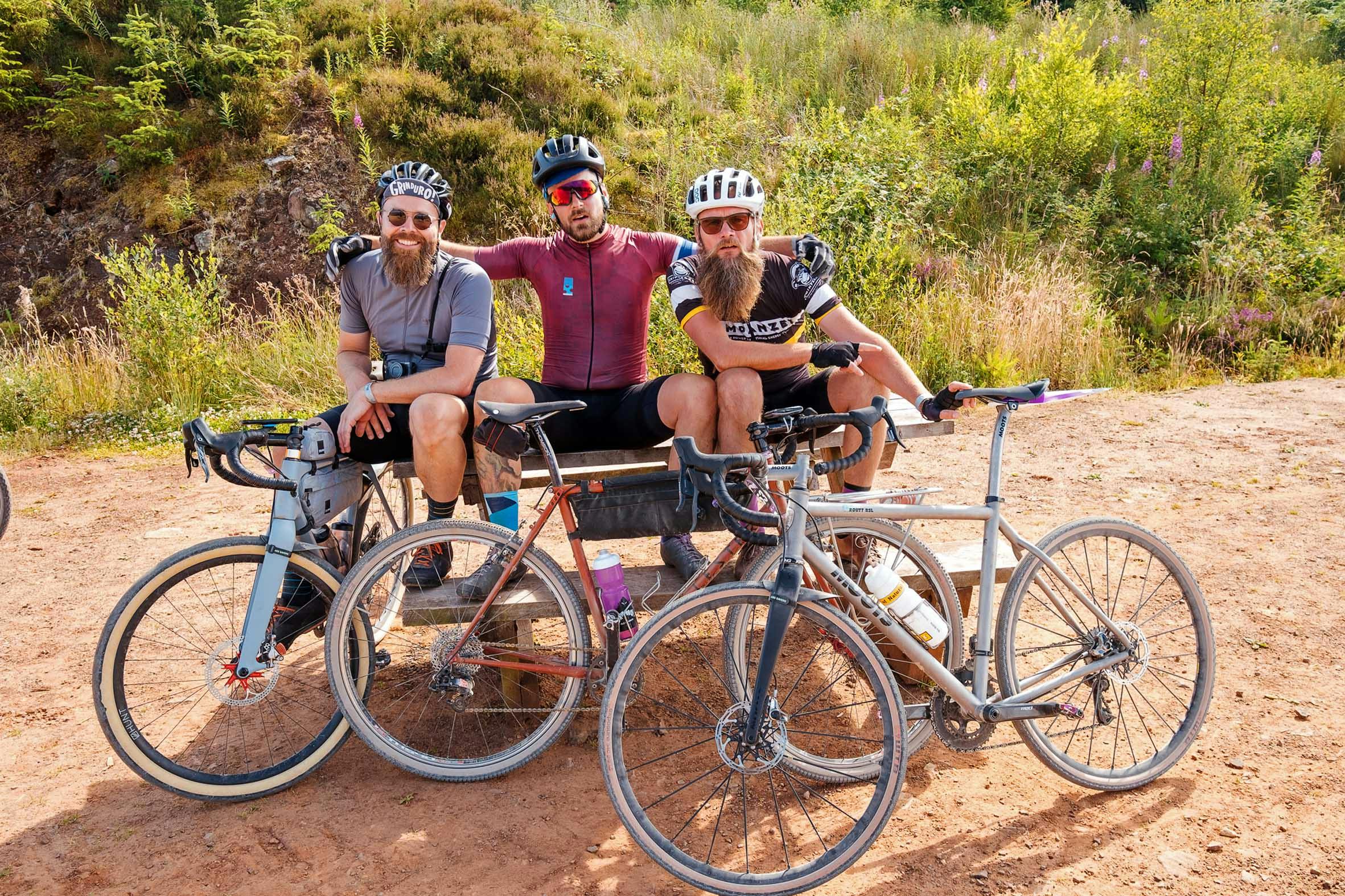
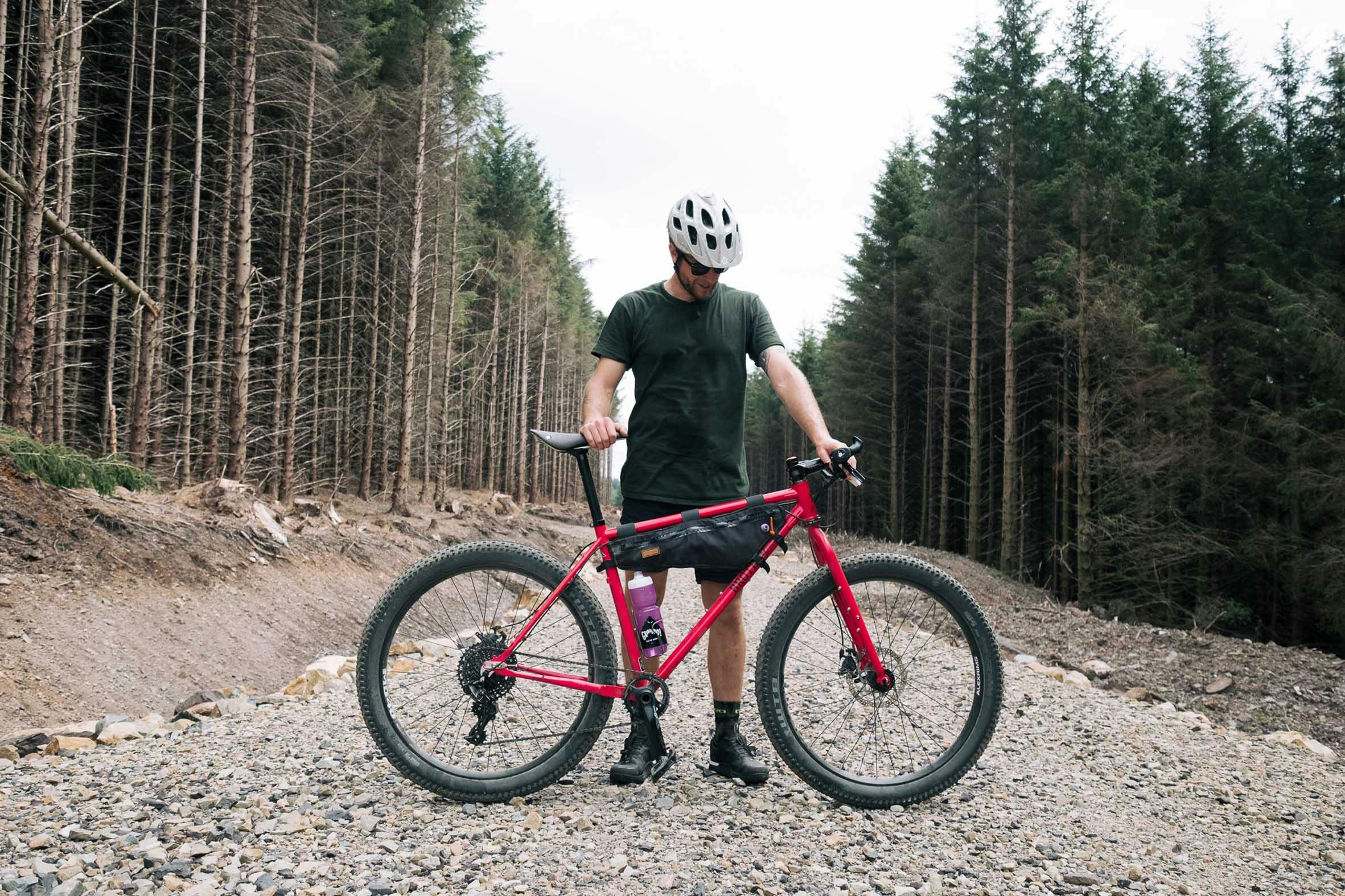


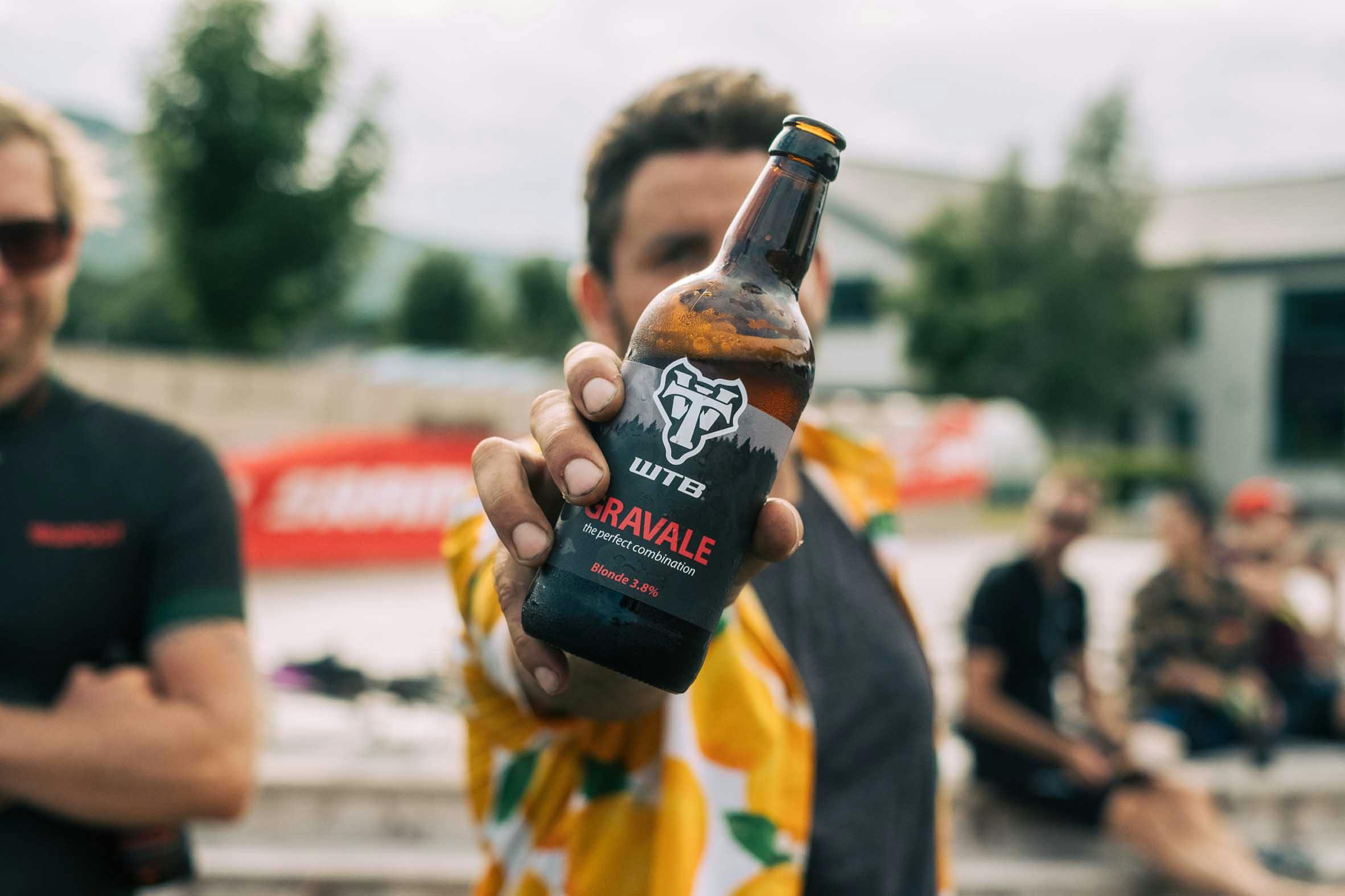
250KM (Ferries 114KM)
1820m+
Bikepacking the Isle of Jura, via ‘The Long Road’: argo tracks to nowhere; distilleries; deer stalking; tick flicking; horsebox cafes; midge level 5 (of 5); and slaw/salmon dinners…
Jura [n.]
‘Deray’ (Deer Island) > ‘Diuray’ [Gaelic] > Jura [Anglicised/Pronunciation]
There’s only one road on Jura. A long one, that pretty much runs the length of the south and east coast. The Long Road, as it’s been coined, is a route that’s been walked, ridden, drove and driven for the last few centuries, pieced together as much as island life over that time. A road that has always started life at the modest port slipway at Feolin, before threading its way between cliff and shore, across grassy moorlands, dissecting Criaghouse – the one and only town on the island – and heading north, to nothingness. A road that’s thirty-two miles long and, in 1724, was “rough, ragged and impassable for the most part, that not above ten-miles can be ridden without hazard”. The Long Road on Jura sounded like the ideal Pannier discovery outing…
Much of Jura’s history is lore and word of mouth. Words like Lagg, Lussa, Corran, Feolin, Corryvreckan dotted on a map amongst sparcity, close contours, and a distinct lack of route options certainly lent itself to a land of myth and legend. We do, however, know for fact that Jura has been occupied since 8000BC because in Lussa (Midge) Bay, where we ended up camping on our second night, archaeologists have found flint microliths – the tools of early man – washed down by the Lussa River, on whose banks they’d have set up camp, for fresh water and access to the sea.
Up until 1700, Jura exchanged hands several times and was even laid claim to by the King of Norway and Vikings early on; largely responsible for a lot of the Norse names on the island and the name Jura itself – ‘Deray’ > taking name from the deer, which is Gaelic would have been ‘Diuray’ and pronounced ‘Jura’. To be fair, deer are a big part of the life and economy of the island estates, even today – some 1000 deer are killed each year and venison sold. In the late 18th Century, records stated “one or two herds of deer roam the mountain” … with “only 3000 of 58,500 acres arable” By 1988 there were estimated to be about 5500 deer, with 5000 thought optimum for Jura.
Between 1200 and 1700, the Norse were driven out and the island was fought over by the various clans – most notably the Macleans (in the north), the Macdonalds and the Campbells. The Campbells ended up owning the island for generations, finally selling their last estate just before the outbreak of the Second World War. Peace has prevailed on Jura since then, reaching peak population of 1300 in the 1800s.
This population spike corresponded to the building of Telford’s proper road from the ferry port at Feolin, half-way up the Island to Lagg. The Long Road, as current, largely follows the original paths and tracks that some 2-3000 cattle were driven along to get to market on the mainland. The last sections, up to Ardlussa and Kennauchdrach, were built in 1916 by the estate owner and since 1951 has been extended up to Ardfernal. From there, it still remains a private unsurfaced track up to the very north of the island. Everything we’d read and seen on a map was hinting at desolation in the north of Jura, and yet it’s where we were headed; where we were escaping to…

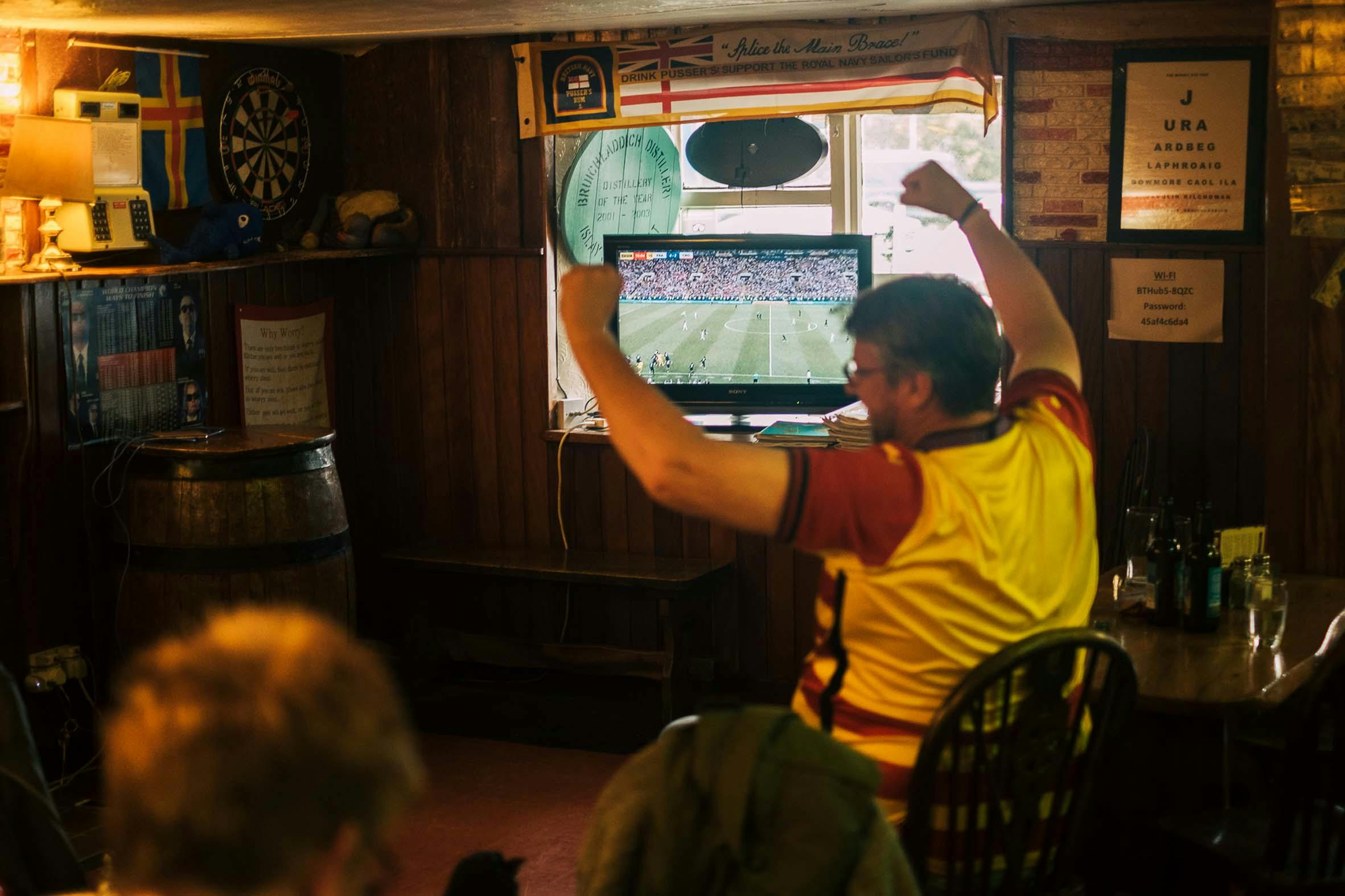
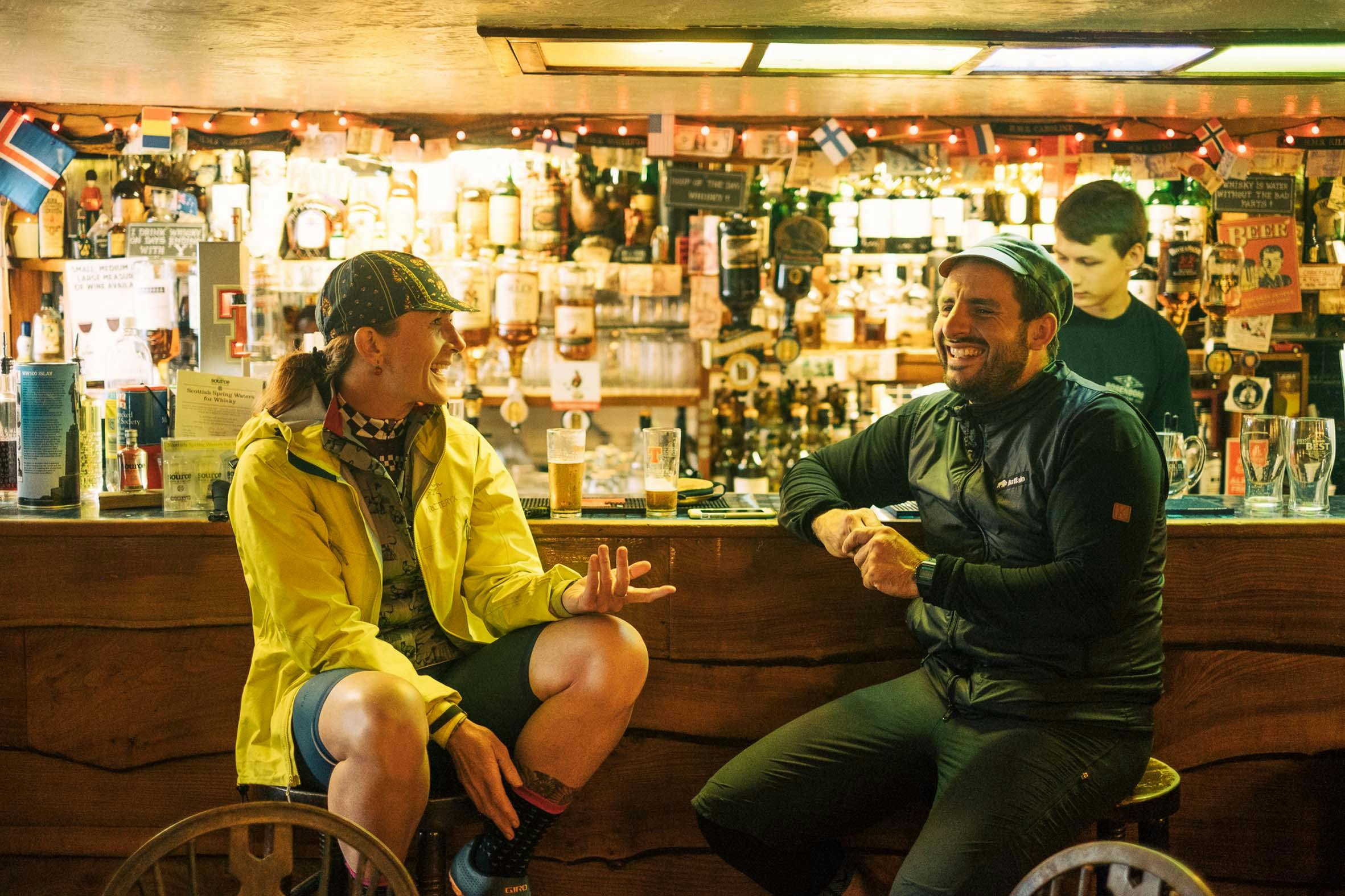

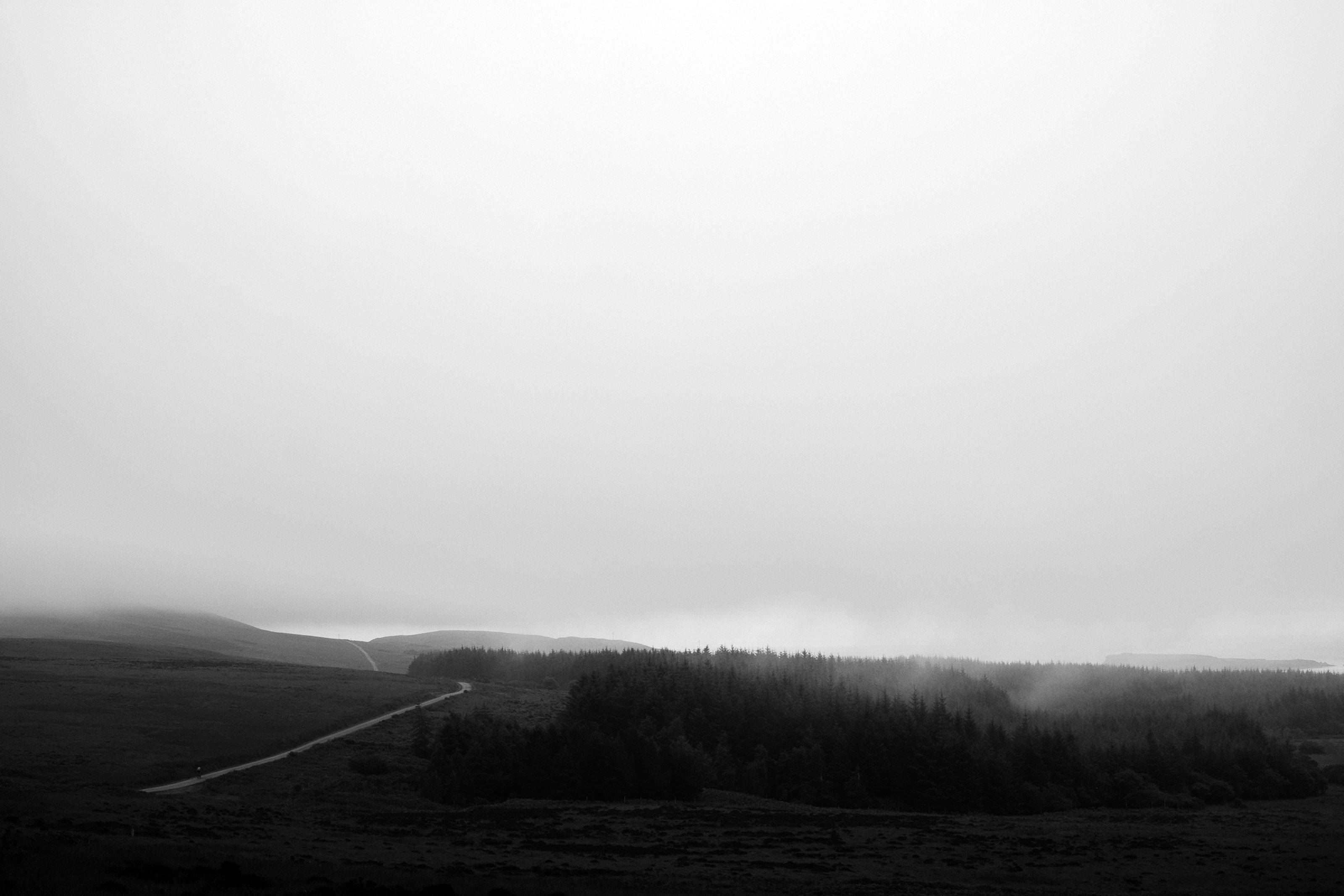
“Jura is a beautiful island, but to a traveller on the last ferry of the day who is unable to find a bed for the night it must seem the most inhospitable place on earth” AW
The ferry to Jura is just a short hop across the sound from Islay but an important one for yet further detachment from the mainland. The distance almost feels swimmable – apparently back in the day cattle used to swim it across on their drove route to Lagg, and eventually Stirling. However, we were happy to sit out the 45-minute wait for the ferry, watching the crab fishermen at work before sinking a half of Scotland’s finest Tennents at the Port Askaig Hotel as France won the football World Cup final. Once on the small flatbed ferry, the Paps of Jura loomed from a shrouding mist port side – we were finally in their shadows after sketching them from our Gigha beach a few days earlier. Joining us on the ferry was, what turned out to be, the Ardlussa Estate manager in a super nice Land Rover Defender, who wished us “the best of luck” for our night’s camp out. It sounded like he knew something we didn’t…
Like the travellers of old, we made our way between the first of four Change Houses (Inns) along The Long Road, first to Craighouse and the Jura Hotel, which is now the only real settlement with amenities on the island. Once home to the island’s Mill (built by the Campbells in 1775) Blacksmiths, Telephone Exchange(!), and Distillery, it’s now home to The Jura Hotel which is next to the Jura Distillery, Jura Stores, and its own well equipped campsite. At one time, everyone on the island made enough moonshine whisky for their own needs, but in 1823 a license was introduced, costing £10/still. The original distillery was built in the early 1800s – rolling out 720 gallons/week – close to a cave where they’d been illegally distilling whisky since the 1600s. The present Jura Distillery is on the site of the old one, built in 1963, and after changing hands is now owned by Whyte & Mackay, producing over 10 different whiskys of varying ages and flavours.
Craighouse really is the ideal stop-off for travellers. A quick look around the distillery, and a bottle of Jura ‘Journey’ strapped to the handlebar pack, we were ready to pitch camp on the shore…

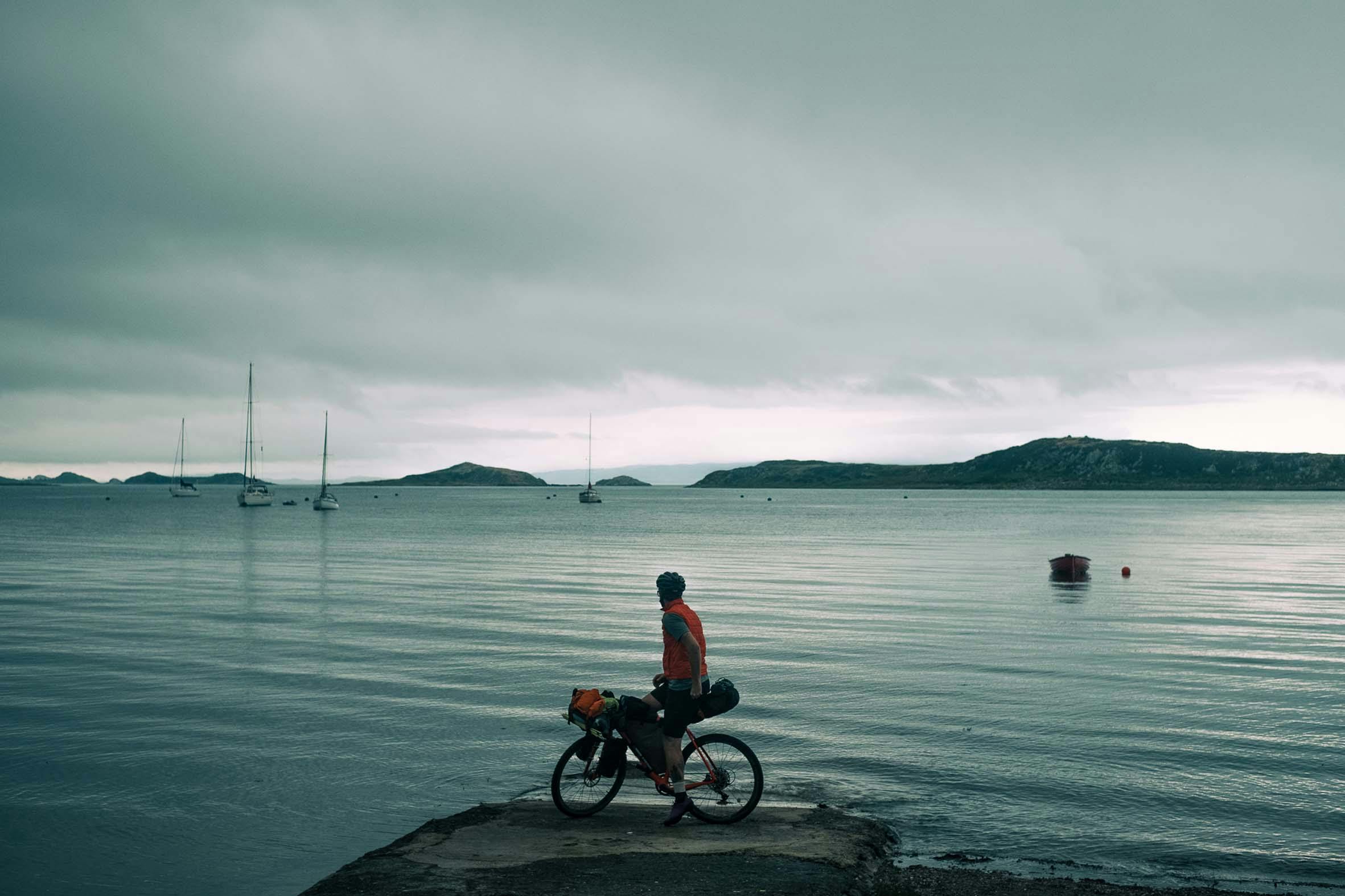
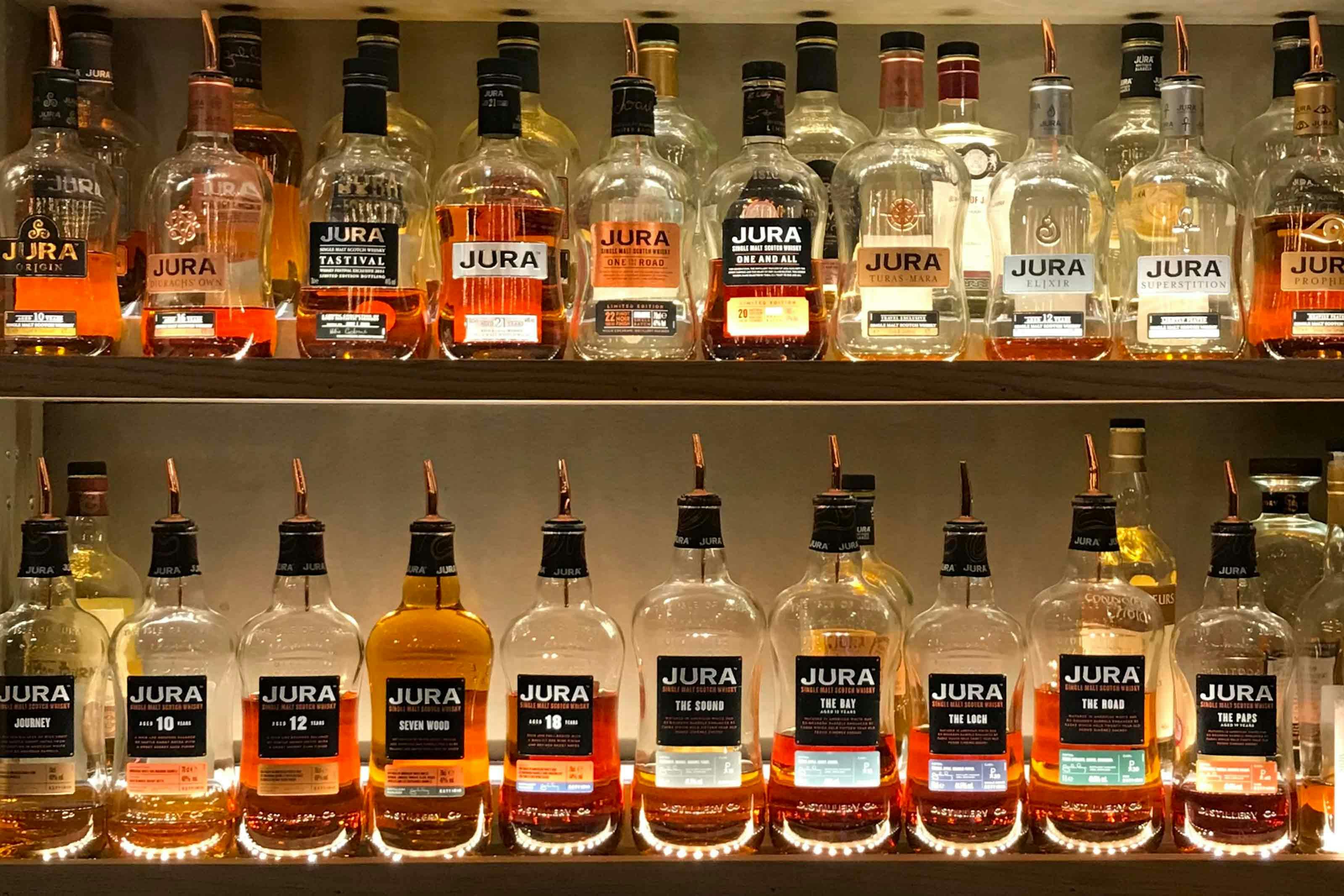
“On arriving, we found every corner of the inn crowded with drovers who had been detained by the weather for several days, and were passing their time as was their wont, in riotus and continuous drinking” JM, 1883


“…like the travellers of old, we made our way between the first of four Change Houses (Inns) along The Long Road – a route that’s been walked, ridden, drove and driven for the last few centuries”
As the early morning light rose, Craighouse fishermen began heading out in their rowing boats to check their pots, sending water lapping at Telford’s original quay, where we struck camp and prepped a Scottish Oat brekky. After stocking up on more key Scottish ride snacks (Irn Bru and Tunnocks) and dinner supplies (pasta, hot-smoked salmon and cabbage) at the quaint Jura Stores, we continued north out of the town for our next peek of The Paps – the rounded quartzite lumps and scree that have been deposited, cooked, hardened, raised, tilted and sculpted by glacial action over 20,000 years ago…
Onwards we rode, rounding bays, to our next checkpoint at Lagg, where the third Change-House used to be. This 17-mile point was where Telford finished his original road in the early 1800’s, and the bay here is where boats used to ferry folk and goods to the mainland. Our original plan was to ride to the end of The Long Road, then head back to Loch Tarbert (not far from Lagg), which almost cuts Jura in two, and follow the shoreline around to a bothy there – a lovely sounding ex-herring/oyster station. BUT, our Ardlussa Estate Manager friend, who we originally met on the ferry and then again at the Lussa Gin Distillery, convinced us to give the Glengarrisdale bothy further north on the west coast a go instead. Apparently it was easier to access…
The last few miles to the end of the Long Road were along a fantastic unsurfaced double-track road, to Barnhill where George Orwell camped out to write 1984, apparently. I can see why. There are zero distractions here – just desolate moorlands, deer, ticks and crashing waves. Our ‘track’ over to Glengarrisdale, which we spotted and plotted on komoot after talking to our estate friend, started effectively at the junction where the tarmac ends – you can just about see a small bridge over the narrow meandering river. From there, the Argo tracks head up and up until the ridge line, where after a long ol’ hike-bike, you reach the most stunning end-of-the-world-Lord-of-the-Rings rocky peak and loch expanse, with far-reaching views over the whirling Gulf of Corrvreckan – a sailor’s nemesis. It was late in the day at this point, and Glengarrisdale bothy was still nearly 5.79km of serious terrain – a hike without the bikes for sure. We knew that whatever we hiked down, we’d need to hike back up early the next morning, to ride back to the ferry at lunchtime, to get back to the mainland, to eventually get back to Arran that evening (remember all those ferry-hopping admin notes?) So…we soaked up the moment at our high point, shared a sup on the Jura Journey and called it a day, deciding to retreat for a night at ‘Midge Bay’.
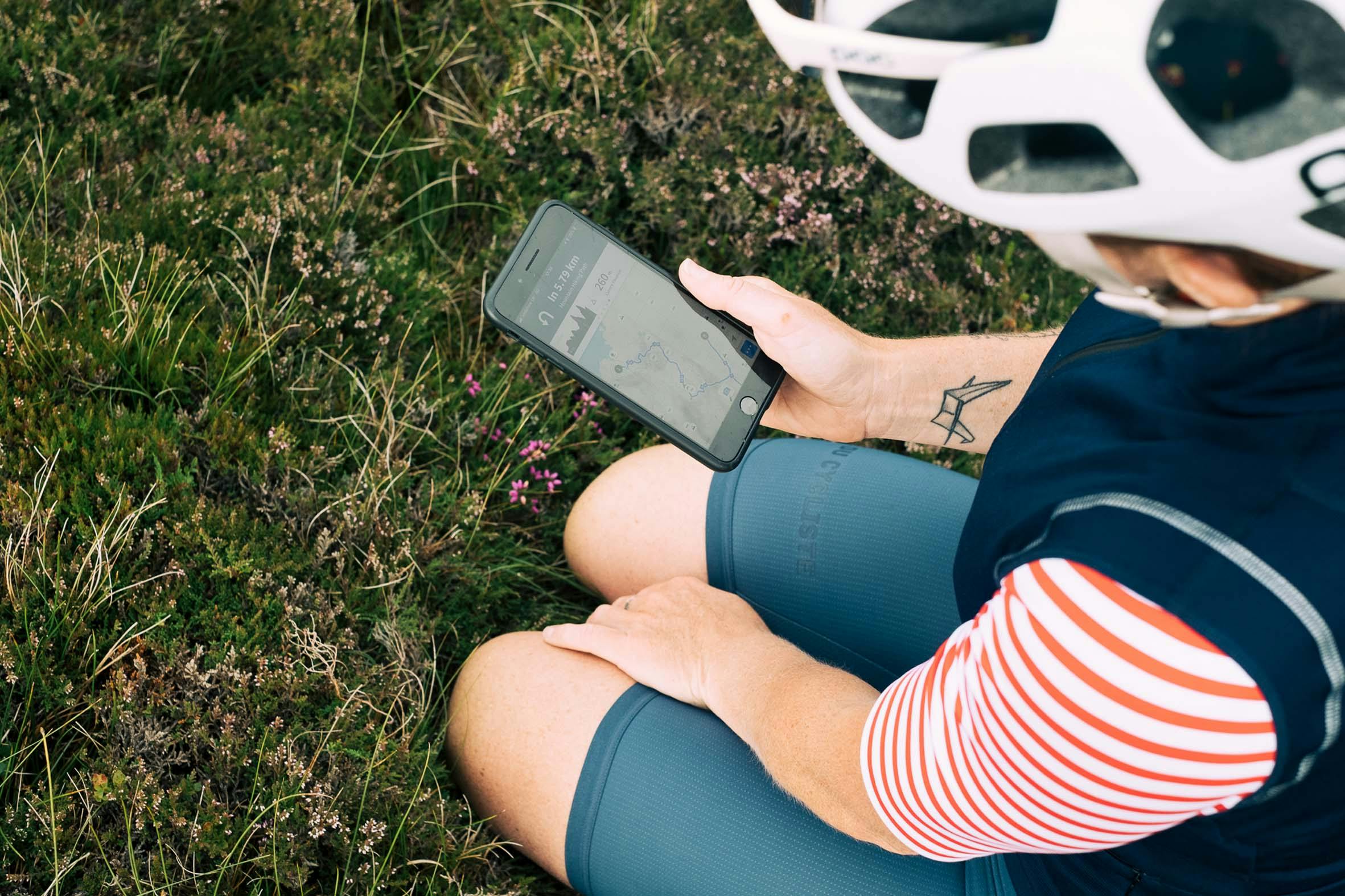
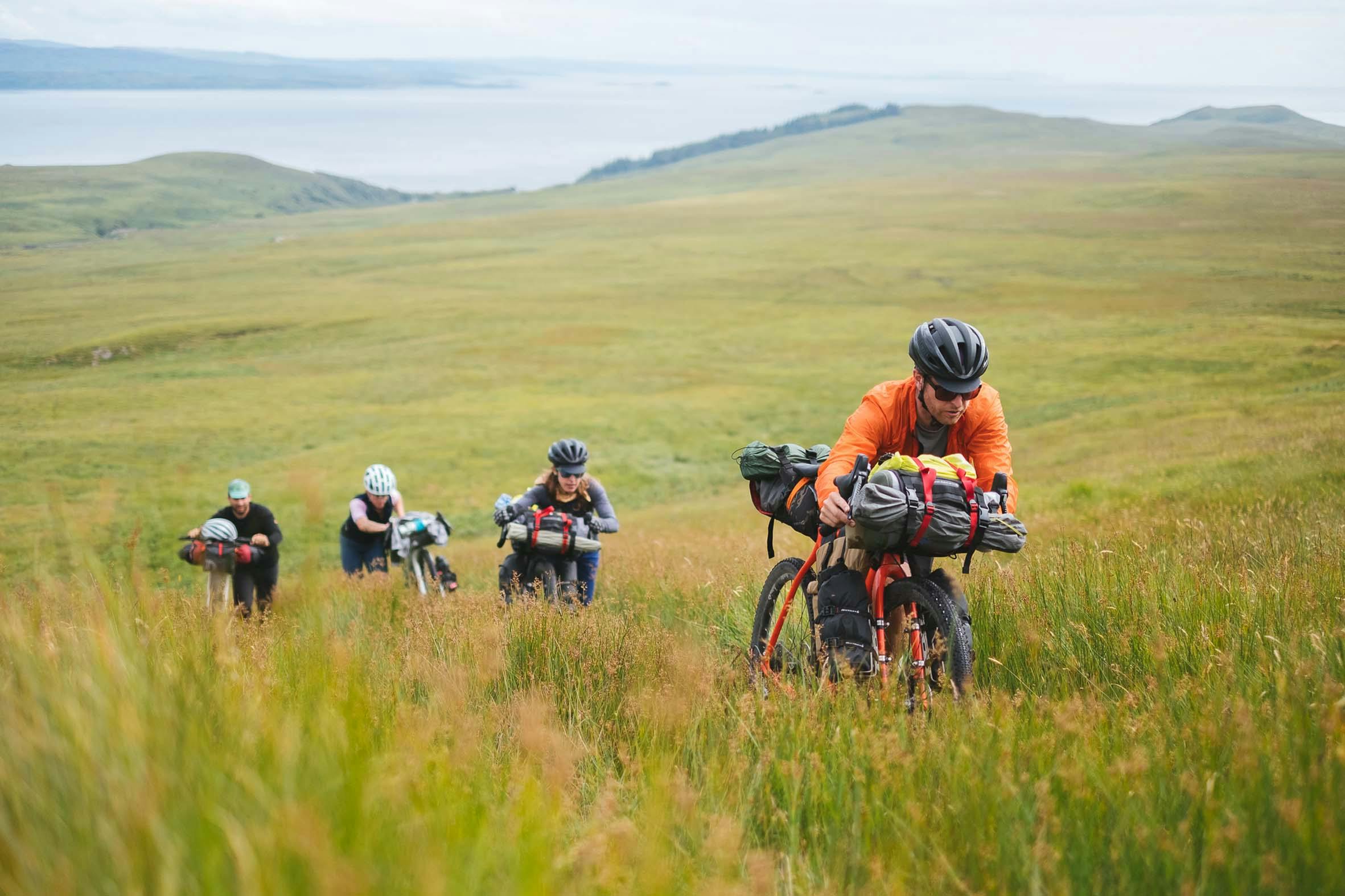
“Jura was made for Argos, deer, ticks and fell runners…not so much bikepackers”
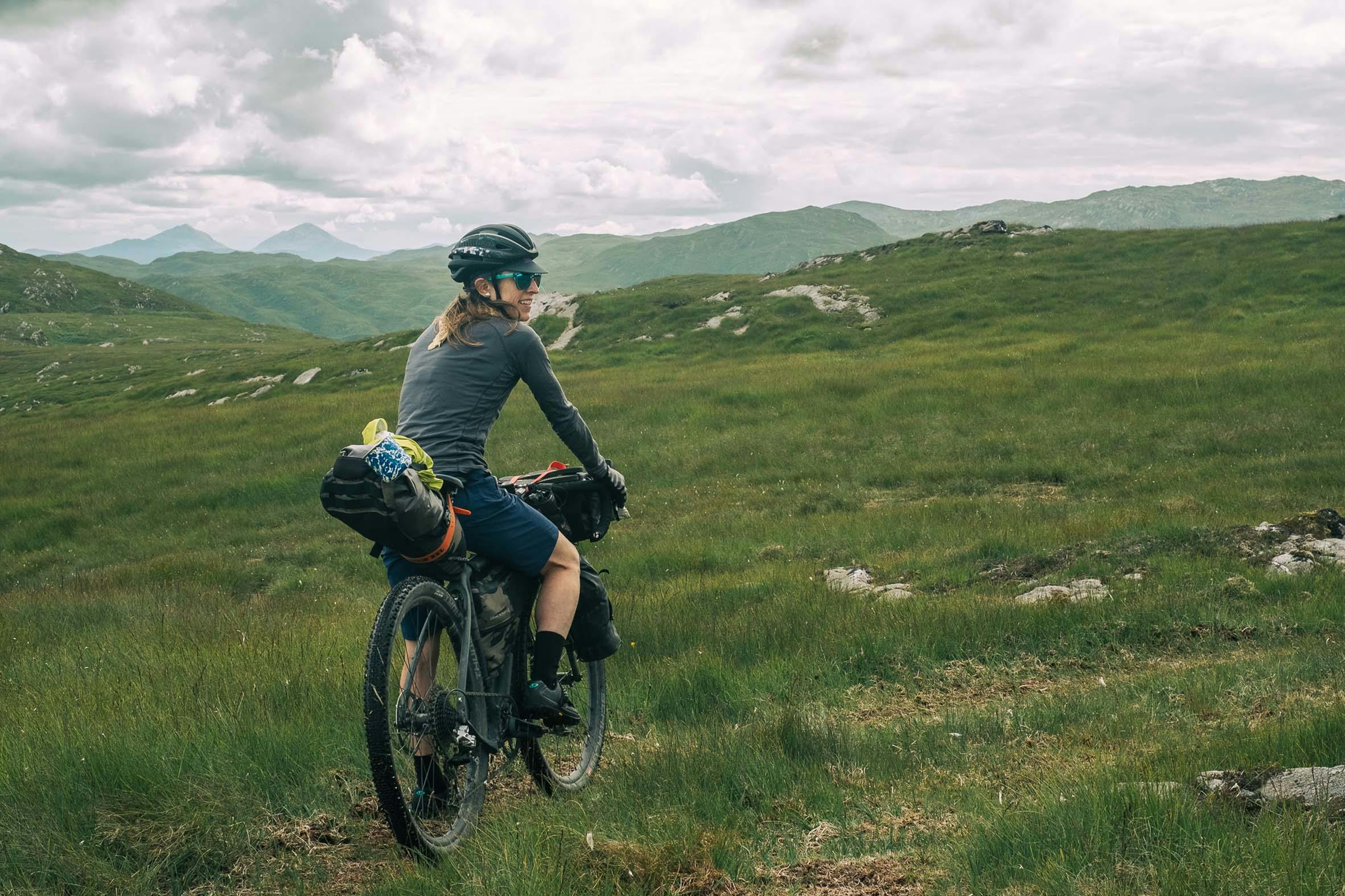

“Jura is the loneliest of islands … most of the island is a wilderness – a vast deer forest, scattered habitations, with an inaccessible west coast of cliffs and caves” (AW)
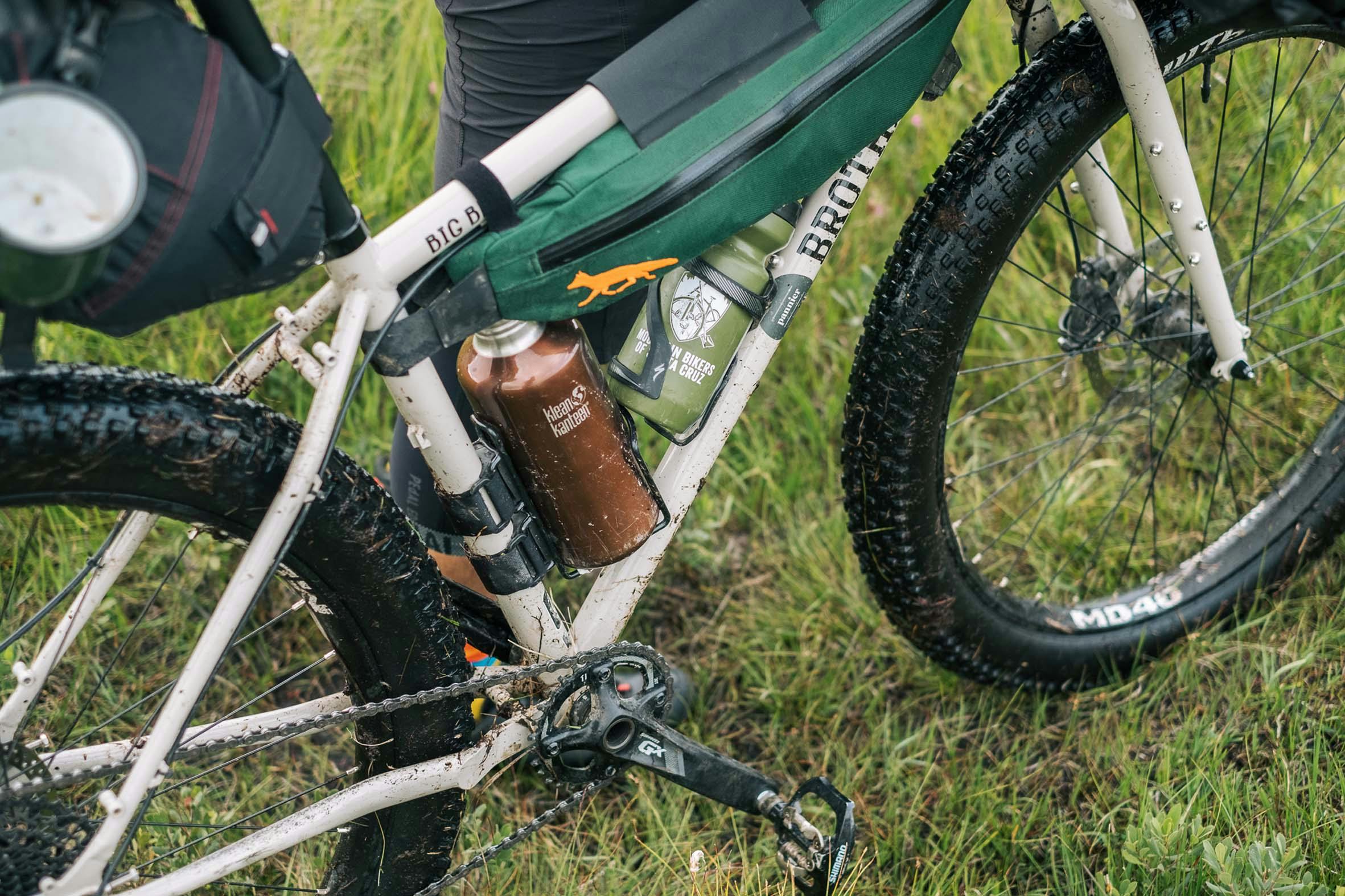
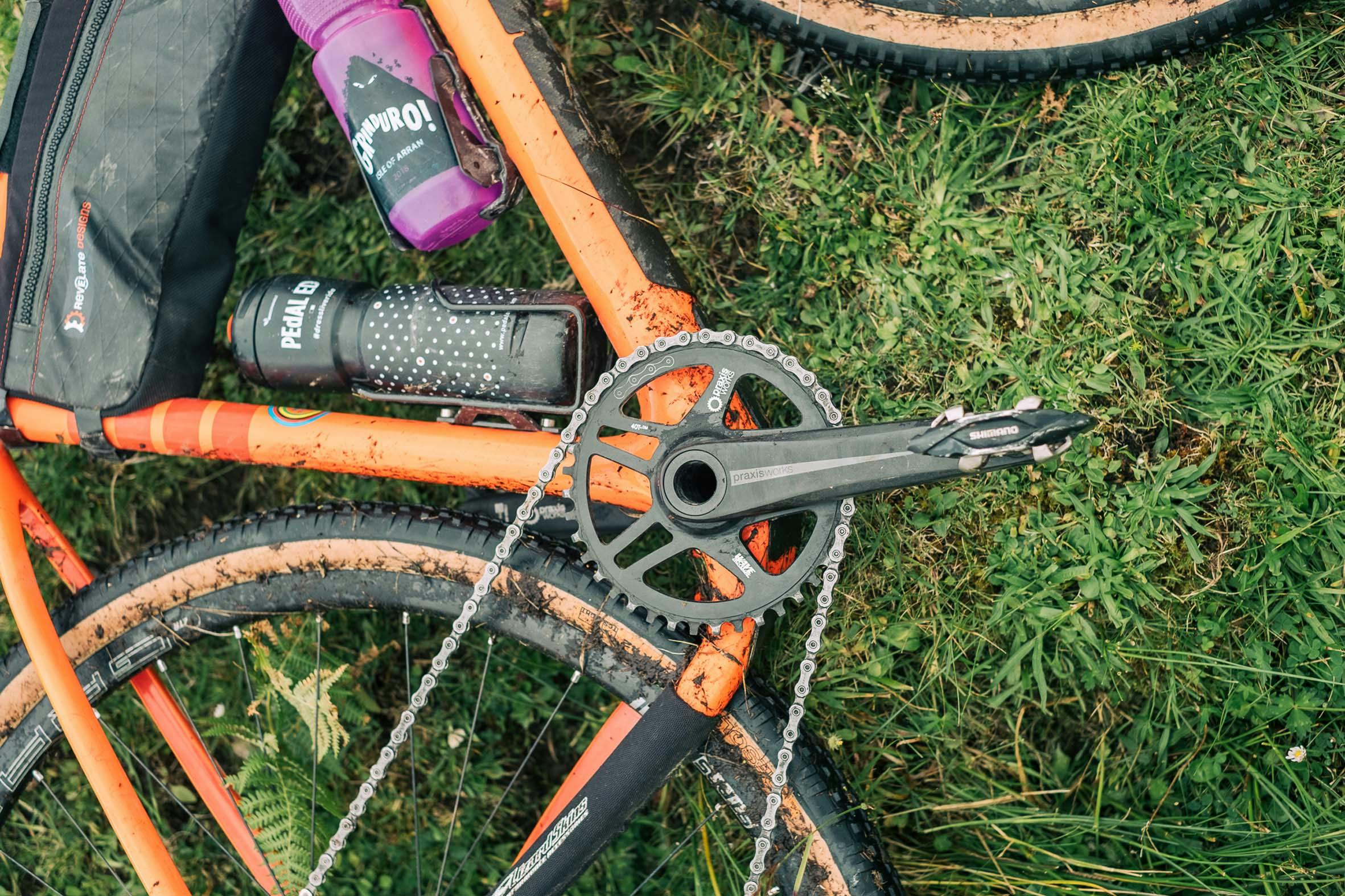
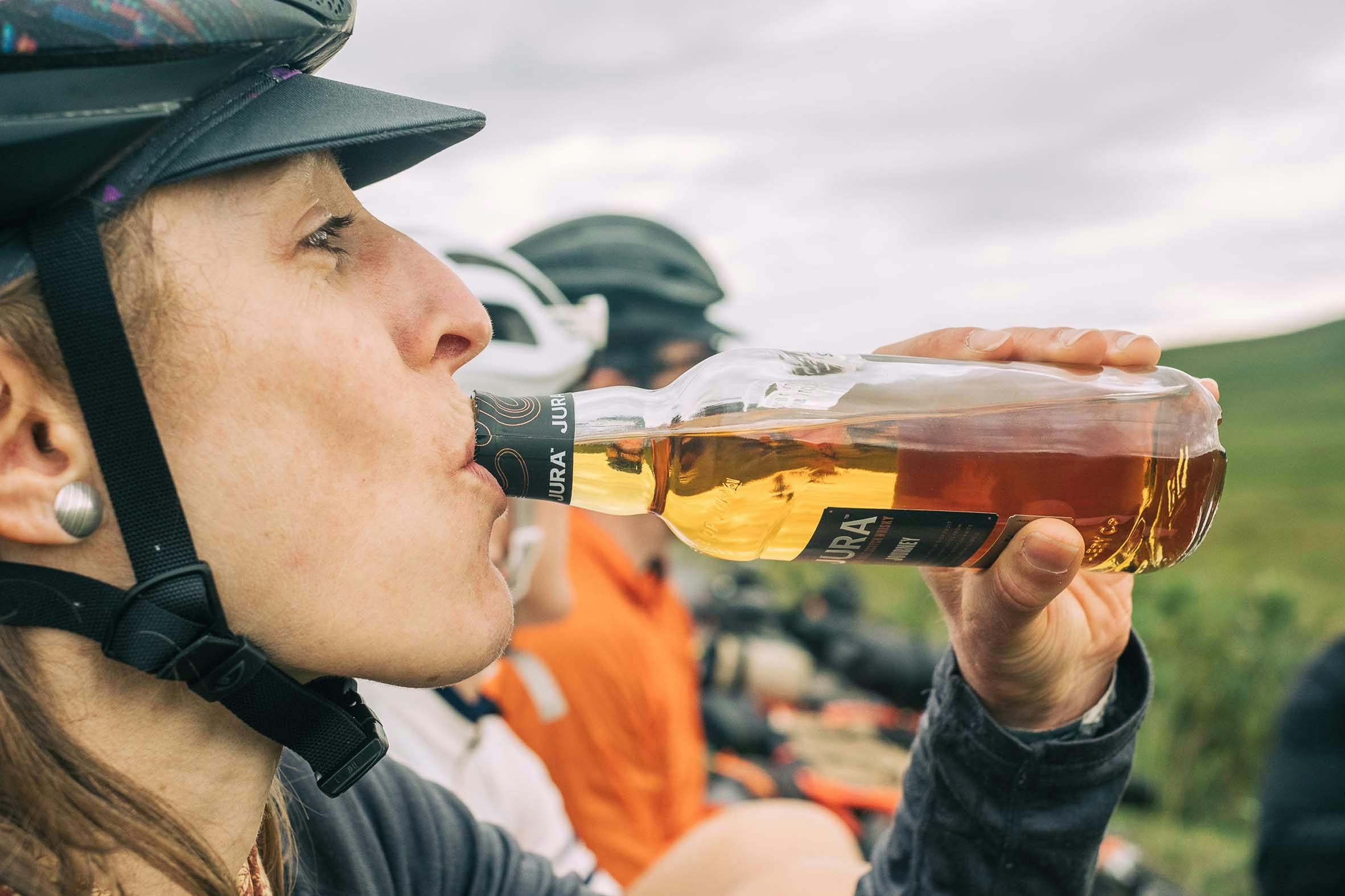
“I have never at any time turned aside from my path to partake of whisky, nor have I ever avoided it when it met me in the way” GM
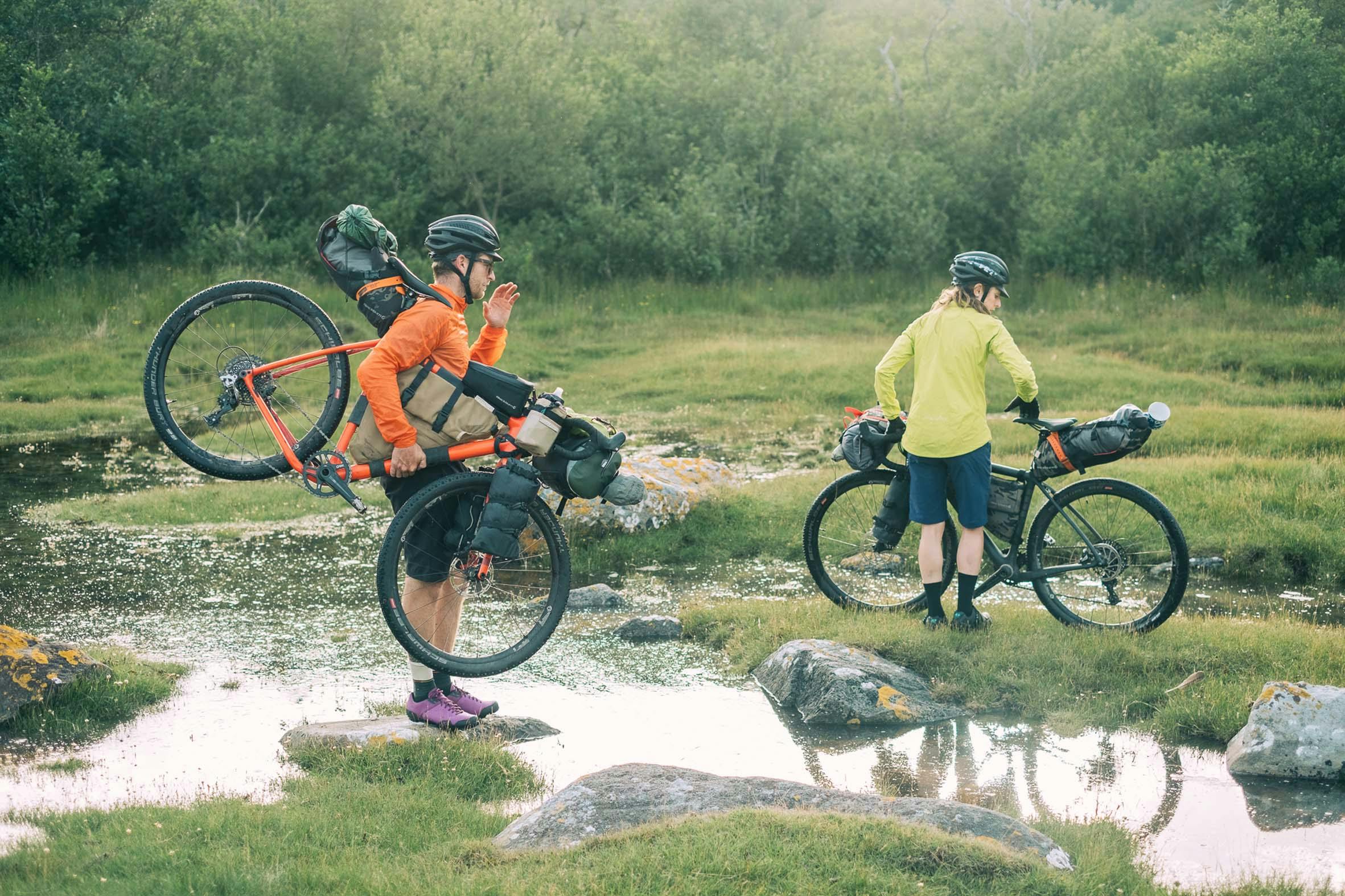

“In such a lonely spot, infested with midges, he was left to death, by midge, and it’s been called the Bay of Midges since.”
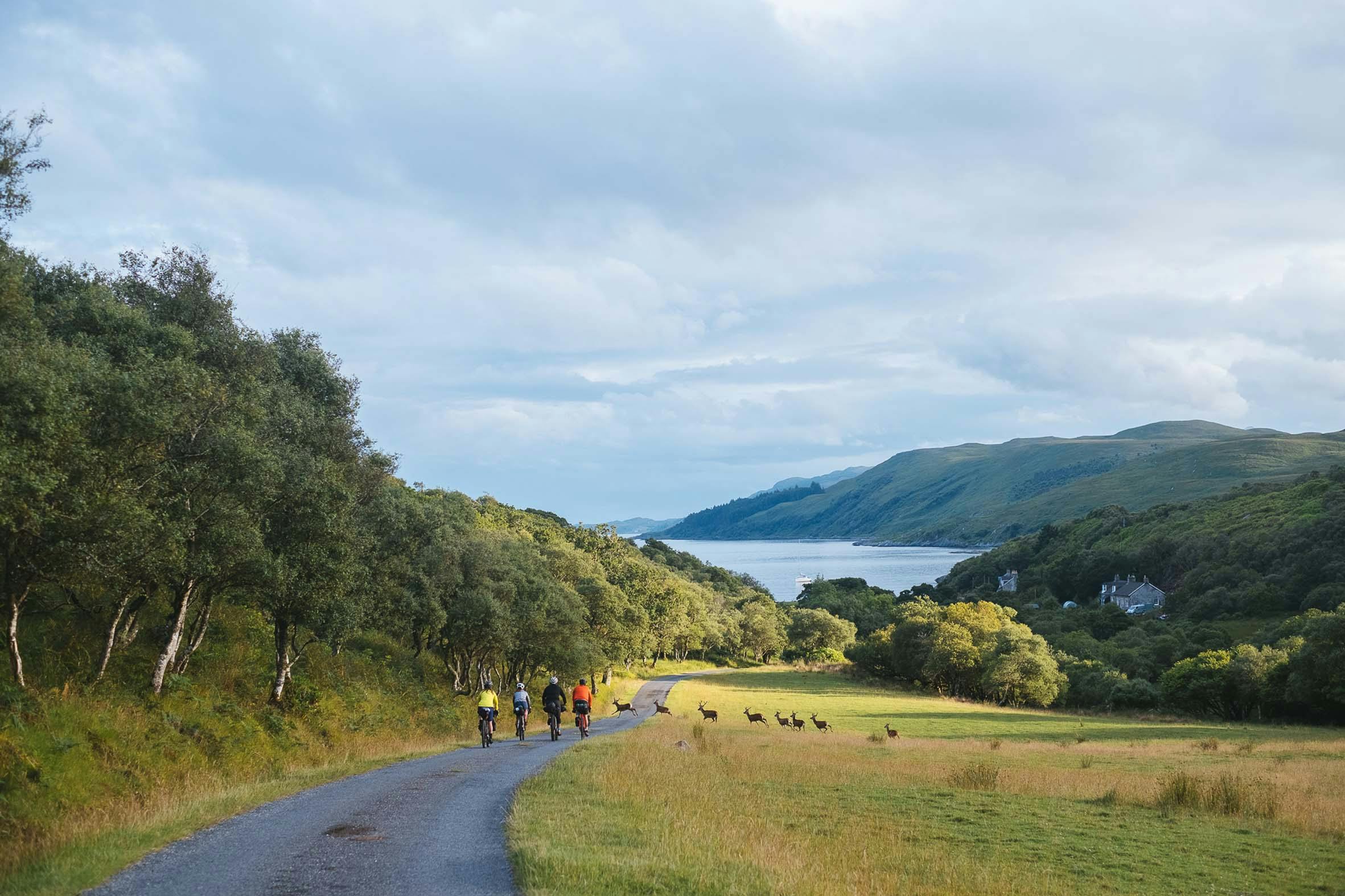
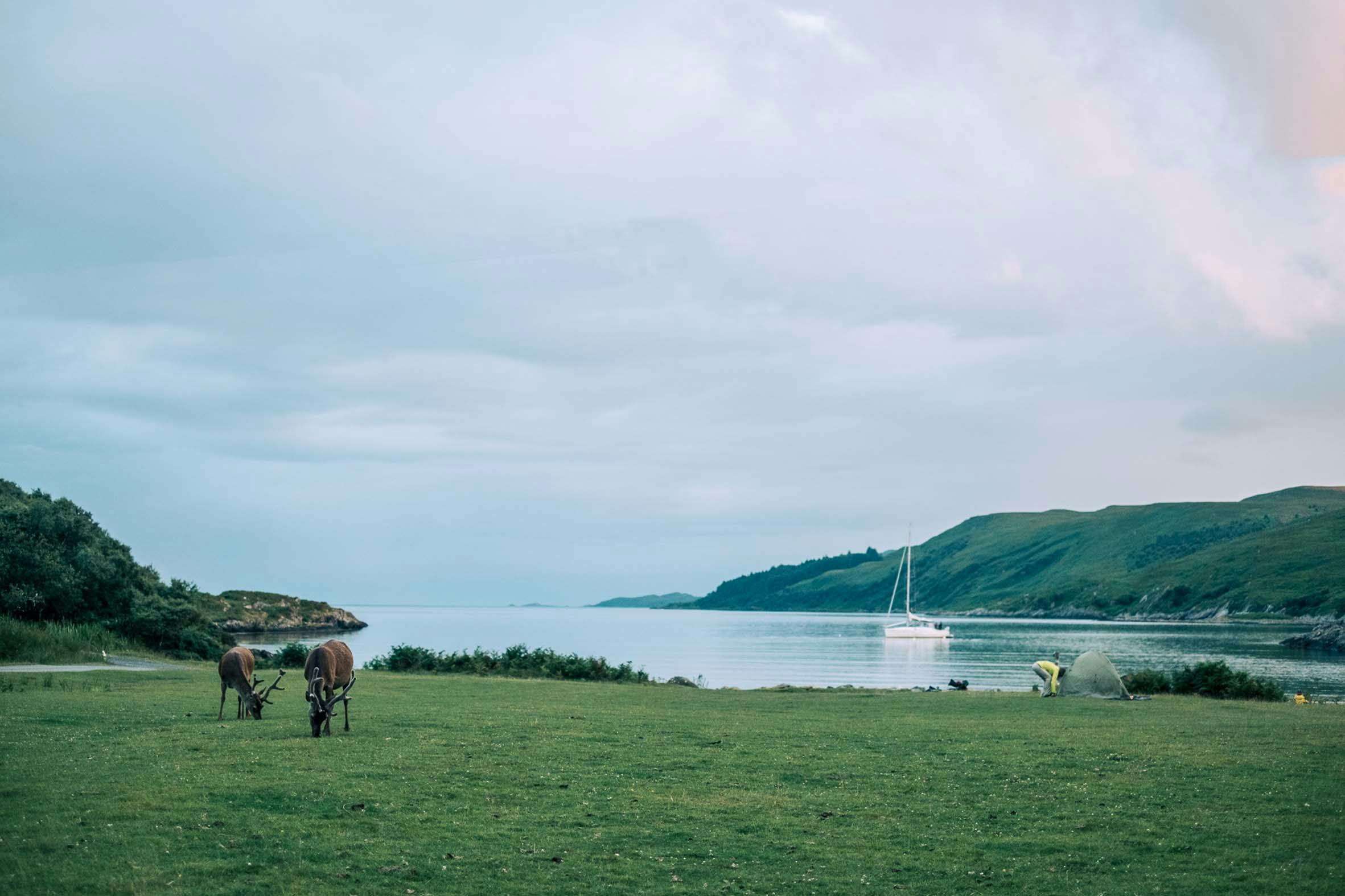
We’d read and joked about Midge Bay, and the 17th Century Clan rivalry between the Macleans and Campbells, during our evening at the Jura Hotel. Lore states that on one raid, the Campbells slipped past the Macleans’ watchmen before meeting one alone in Ardlussa Bay, who they bound up and left. In such a lonely spot, infested with midges, he was left to death, by midge, and it’s been called the Bay of Midges since. What better place to head for, to cook and camp, and spend the last evening of our Hebrides bikepack adventure…
The last thing to mention is Chris McNally’s Bikepacking Slaw®. Camp food at its best, and such a healthy, easy, long-lasting meal addition. All you need is a cabbage, lime, and salt. Thank us, well Chris, later…
Over and out!
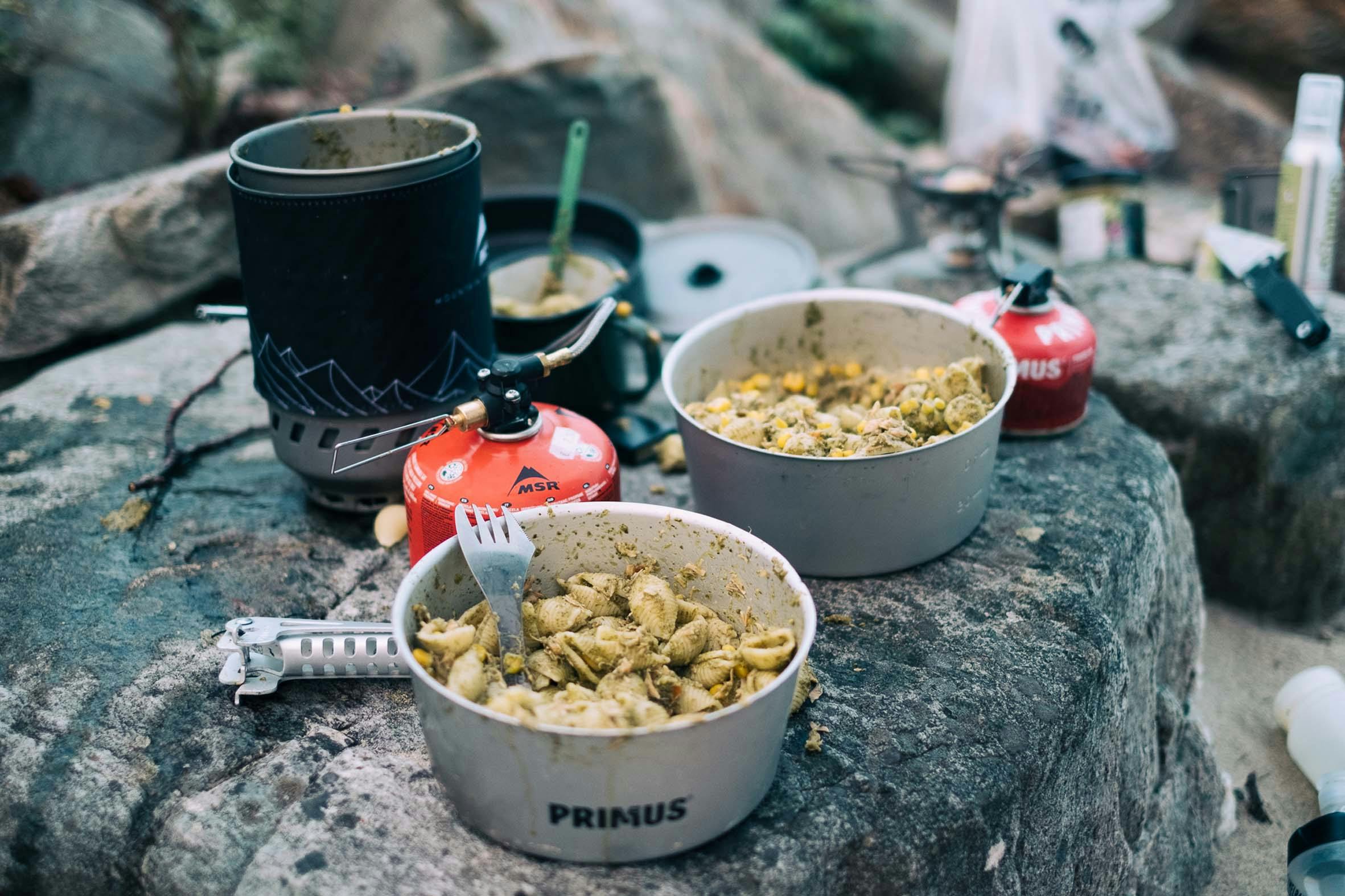
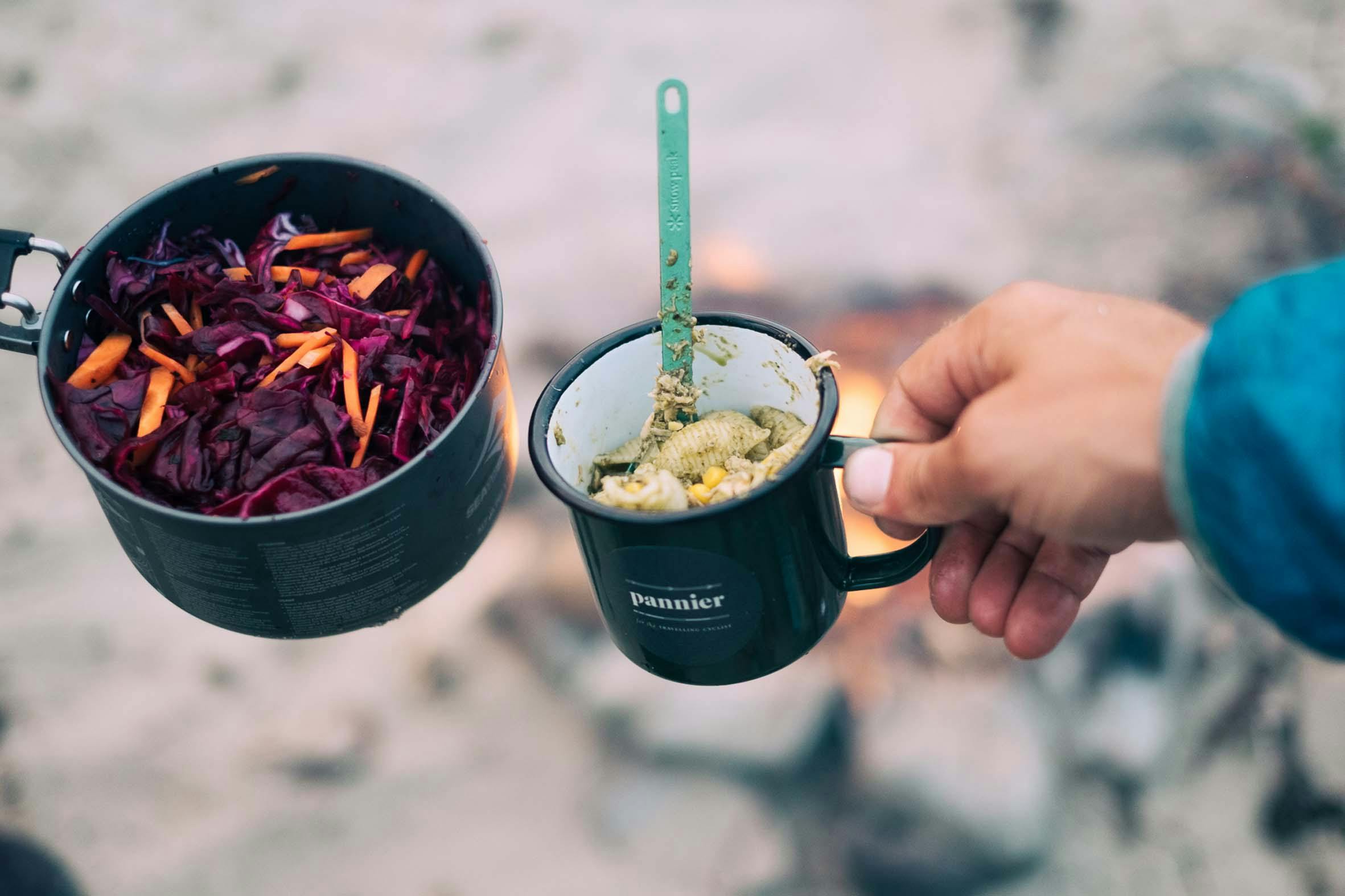
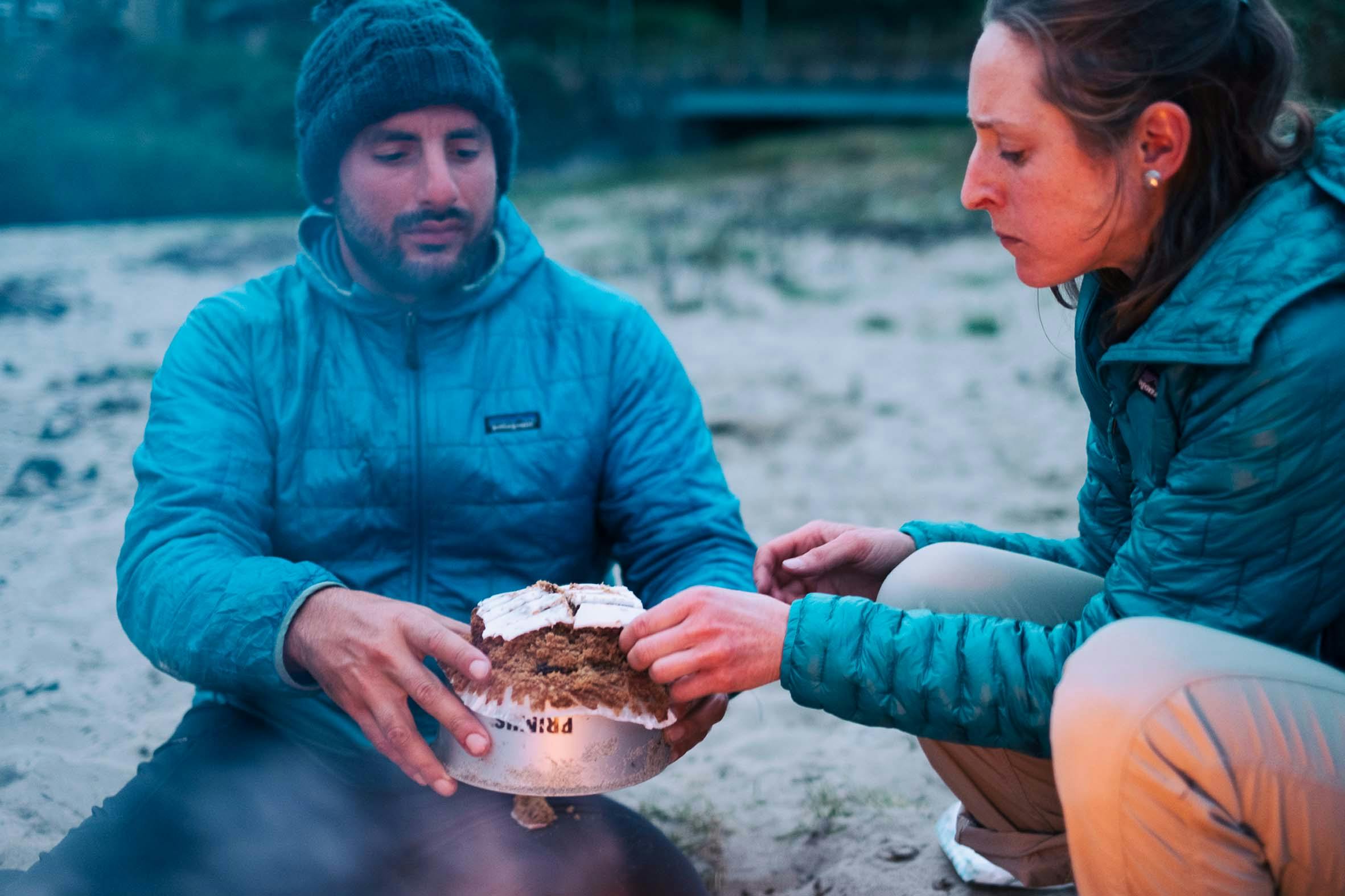

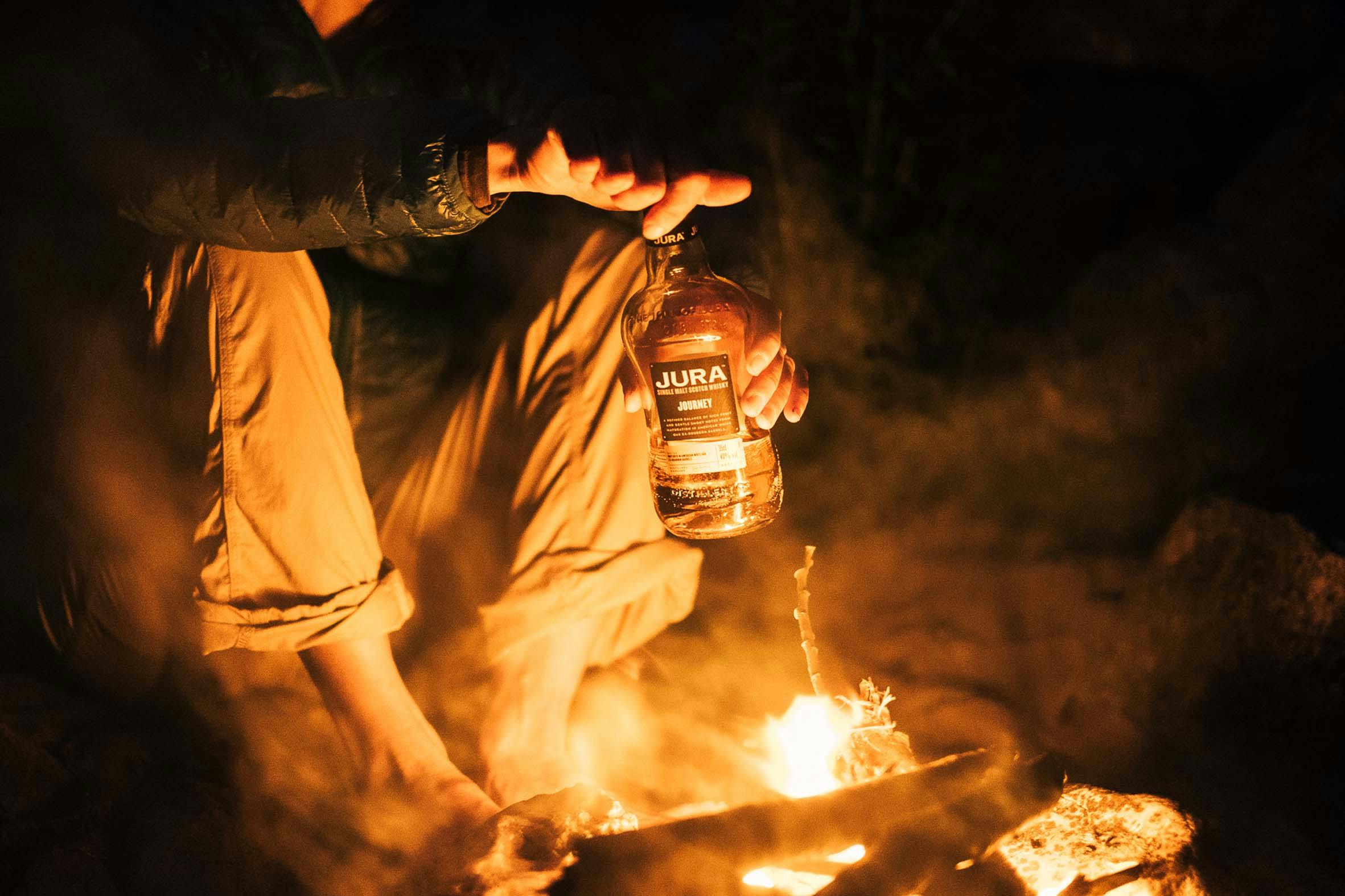
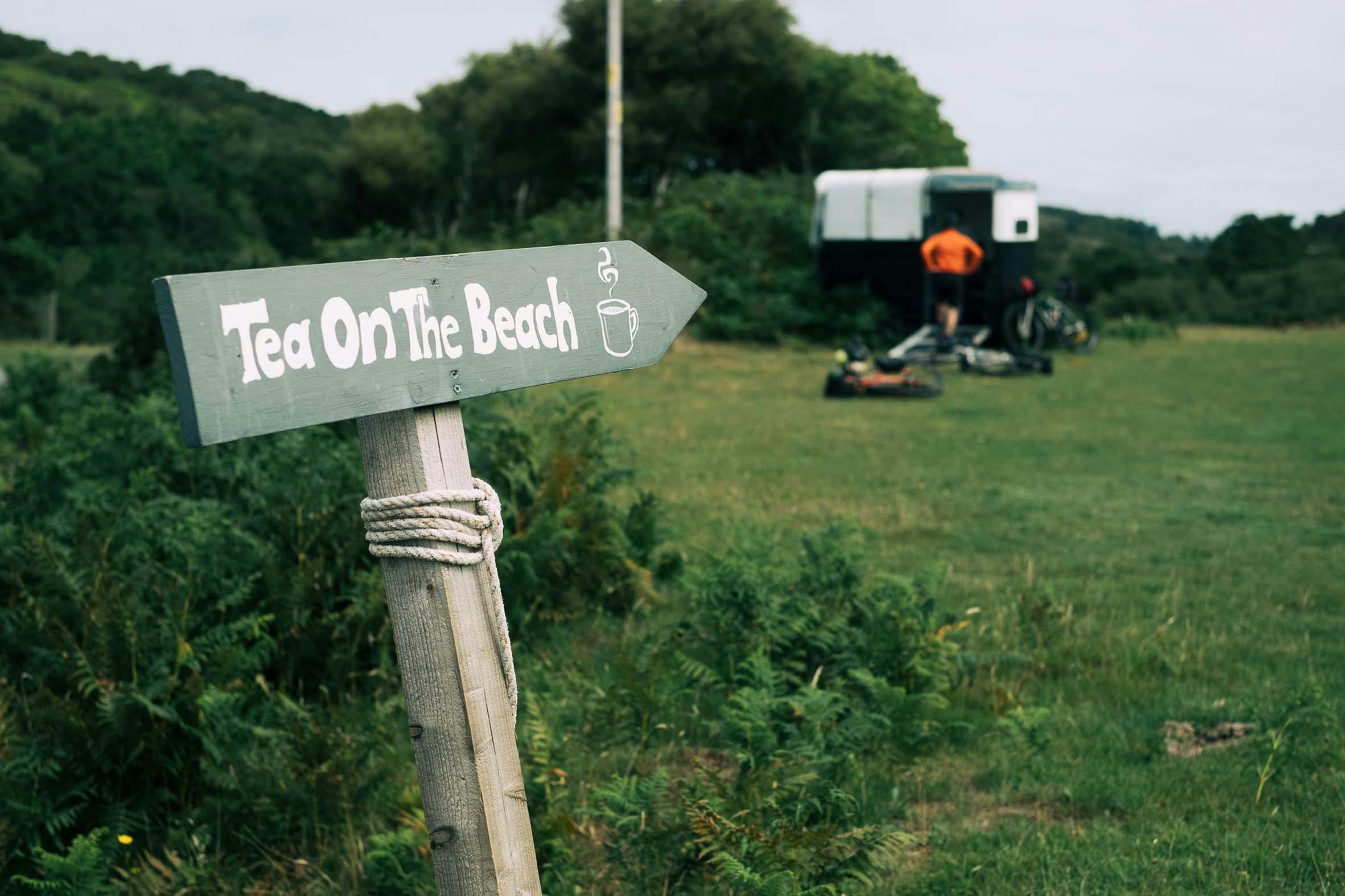
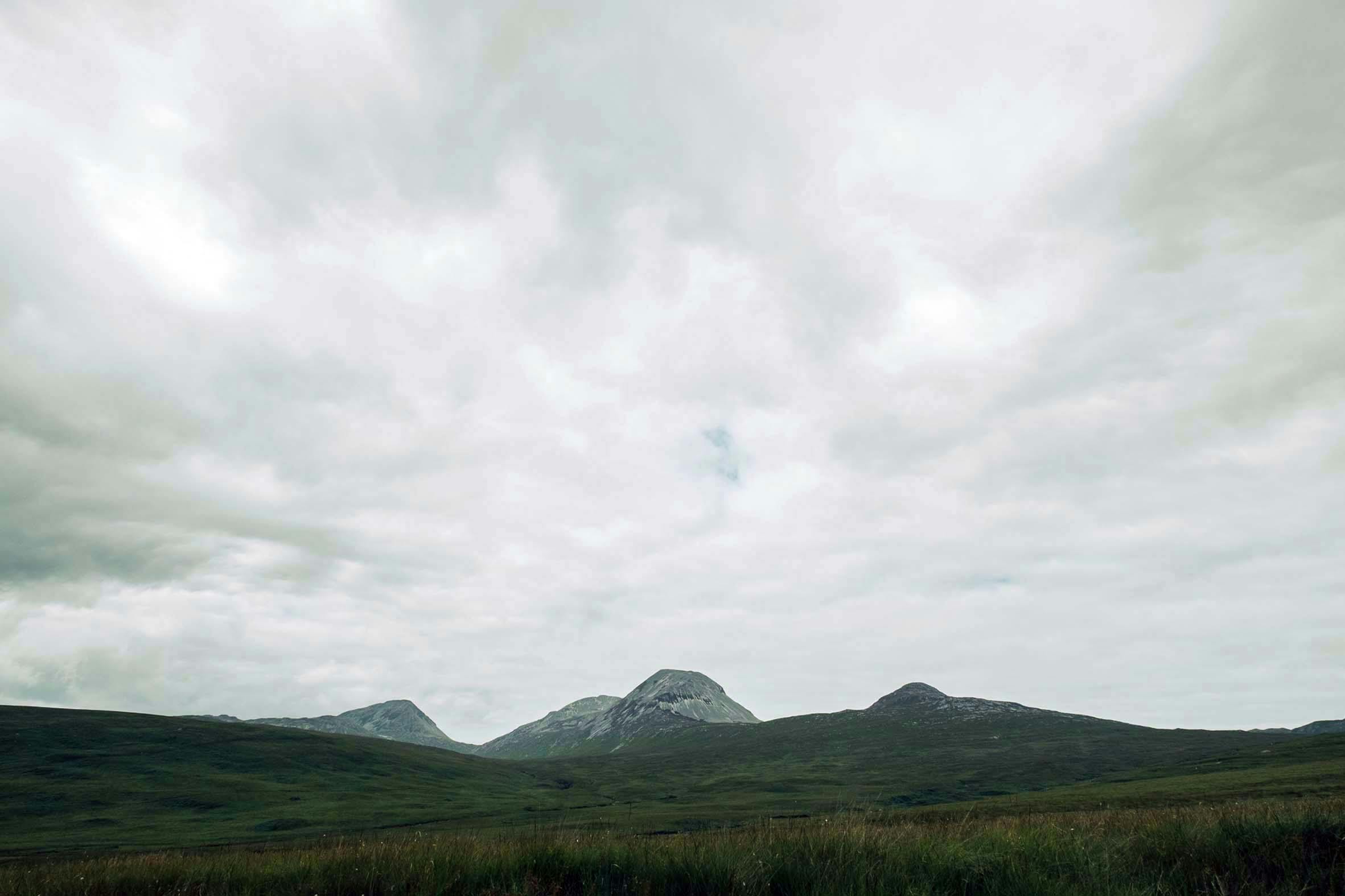

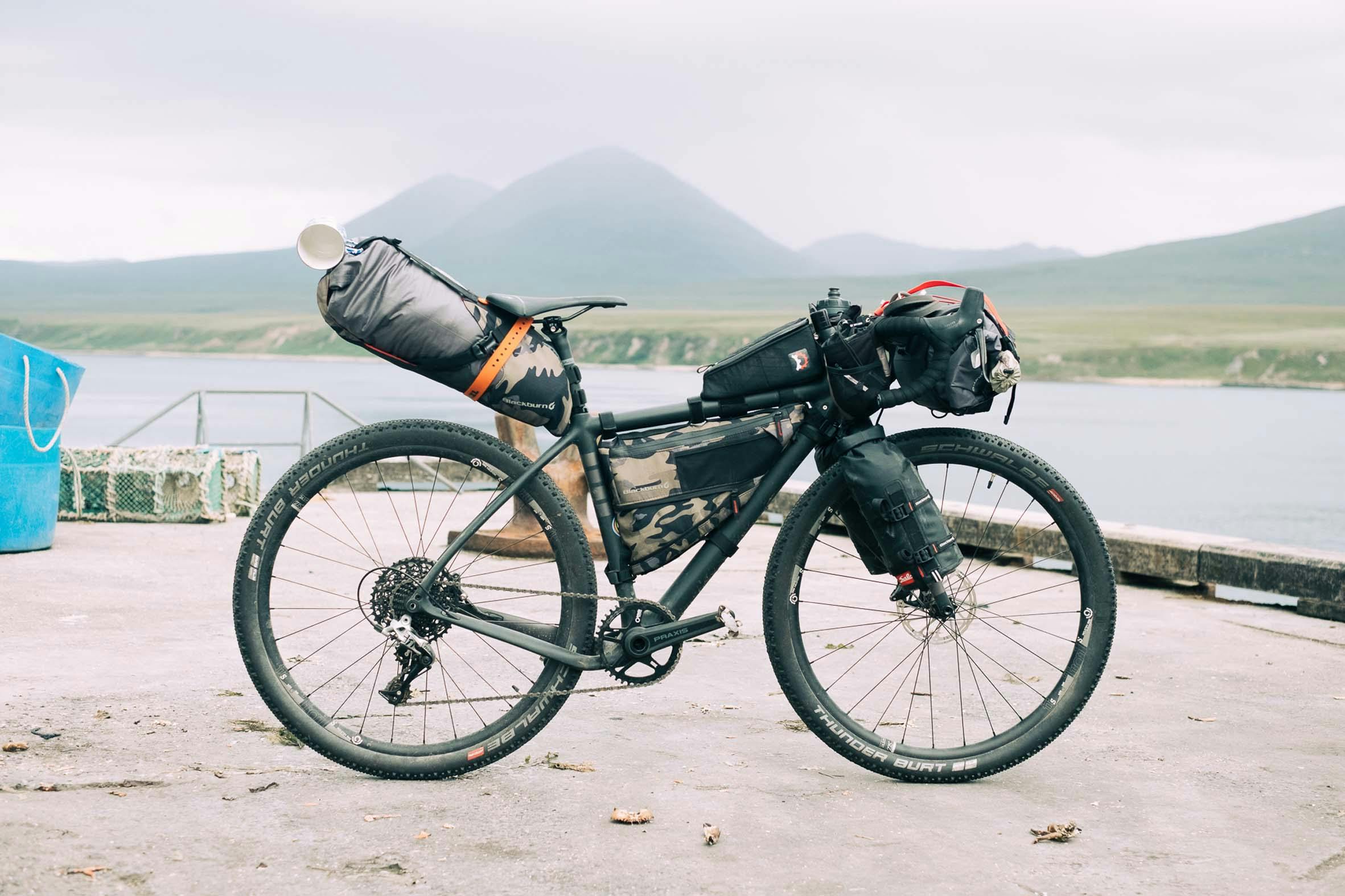
Ibis offer three Hakka MX options: frame & fork (£2099); SRAM Rival 1x (£3349), and Shimano Ultegra Di2 (£6099). The 3 x Hakkas we rode on this trip were all the SRAM Rival 1x standard builds and specs…
With frame clearance for up to 700 x 40c or 27.5 x 2.1” tyres, Ibis are claiming this is the go-to versatile bike to road and off-the-beaten track riding and it’s hard to disagree having seen Chris, Chris and Wren riding/carrying/wheelie-ing theirs loaded around the Islands… Equally at home loaded-up on the wild argo tracks on Jura as they were hammering it round the Grinduro! Scotland route, on Arran, stripped back to race mode.
The frameset also has internal cable routing provisions for every drivetrain on the market, plus a dropper post and removable fender mounts. For more info visit the Ibis Cycles website…
| Frame | Carbon |
| Forks | ENVE Carbon CX |
| Frame/Fork Weight | 1KG |
| Wheel Size | 700c or 650b/27.5″ |
| Rear Axle | 142mm x 12mm thru-axle |
| Front Axle | 100mm x 12mm thru-axle |
| Brakes | SRAM Rival |
| Bottom Bracket | T47 Threaded |
| Drivetrain | 1X or 2X compatible, up to 48t 1X chainring |
| Derailleurs/Shifters | SRAM Rival |
| Crankset/Cassette | Praxis Zayante Alloy 40t / SRAM PG 1130 11-42t |
| Colors | Fireball or Coal |
| Sizes | 49 / 53 / 55 / 58 / 61 |
| Frame Warranty | 7 Years |
| Tyres | Schwalbe Thunder Burt 27.5” x 2.1” |



Brother offer two Big Bro options: frame & fork (£549) and SRAM GX 1x (£1799). The 2 x Big Bros we rode on this trip were the complete SRAM GX 1x standard builds / specs. I actually converted this tubeless before the trip, which made for a more enjoyable, zippier ride. You probably save over 0.5kg of rotational rubber once the 2 x 3″ tubes are out…
A shreddy tank compared to the nimble Hakka MX, the Big Bro is built around Brother’s tough-as-nails mountain bike frame, designed with versatility in mind. So whether you’re running bikepacking setups, loaded-up front and rear pannier setups, or are stripped back to thrash some forest trails, this reliable, fun steel bike can handle it for sure.
The Big Bro is a bike that will put a smile on your face, especially when you’re cruising at the back of the pack on a long ol’ road section! Riding 3″ tyres, whilst comfy and fun off the road, is probably overkill for a lot of the riding we do >> we’ll probably look to go down to 2.2-4″ for future riding. Watch this space. For more info visit the Brother Cycles website…
| Frame | 4130 Double-Butted Chromoly |
| Forks | 4130 Chromoly (Tapered / 100mm suspension corrected) |
| Frame/Forks Weight | 4KG |
| Wheel Size | 700c/29” x 2.4” / 650b/27.5” x 3.0” |
| Rear Axle | QR |
| Front Axle | QR |
| Brakes | TRP Spyke (180mm front, 160mm rear) / ML-800 Levers |
| Bottom Bracket | 73mm ISO Threaded |
| Drivetrain | 1X or 2X compatible, up to 38t 1X chainring |
| Derailleur(s)/Shifters | SRAM GX |
| Crankset/Cassette | SRAM GX 100 30t / SRAM PG 1130 11-42t |
| Colors | Stone or Raspberry |
| Sizes | S / M / L / XL |
| Frame Warranty | 12 Months |
| Tyres | WTB Ranger 27.5” x 3.0” |
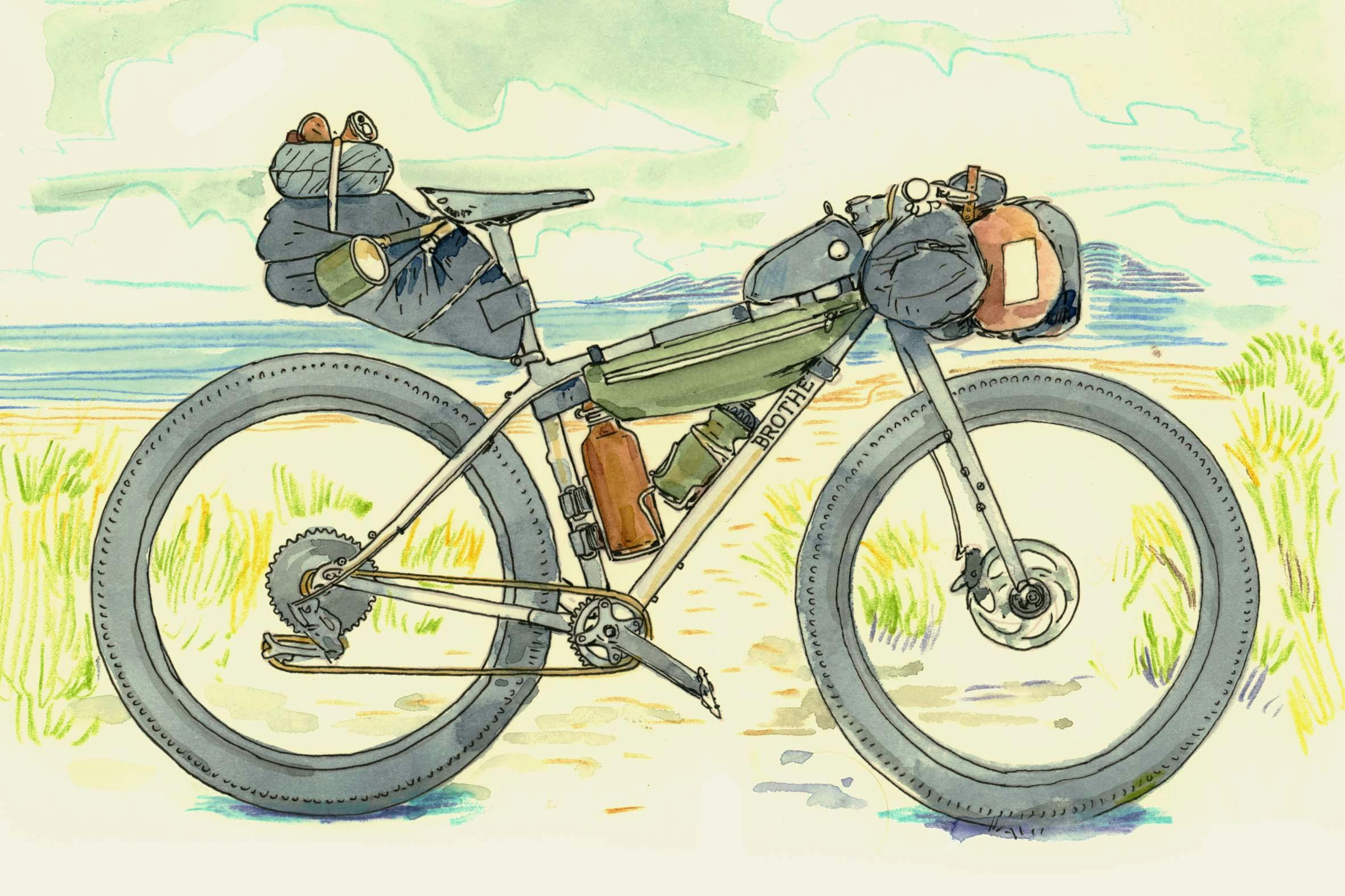

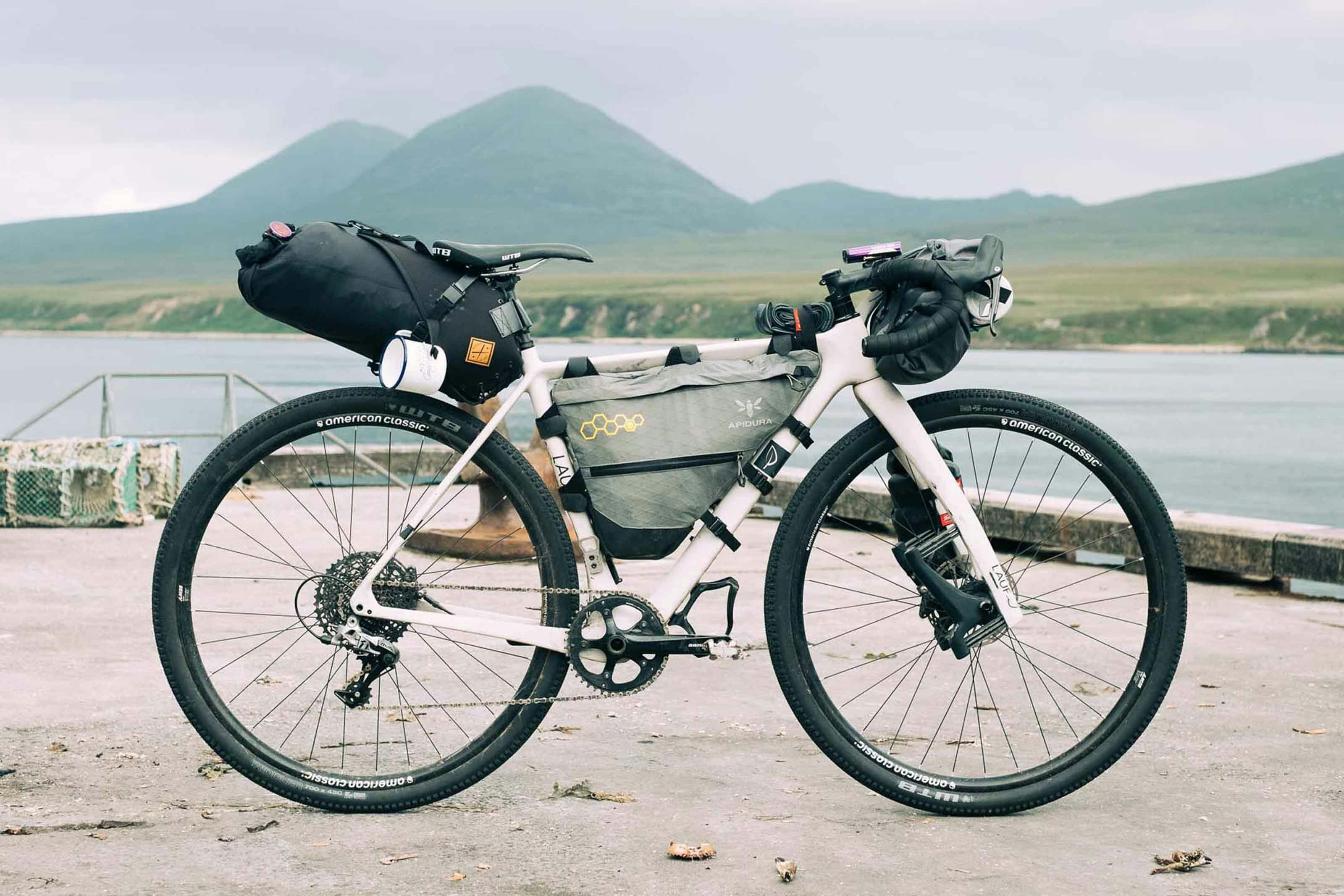
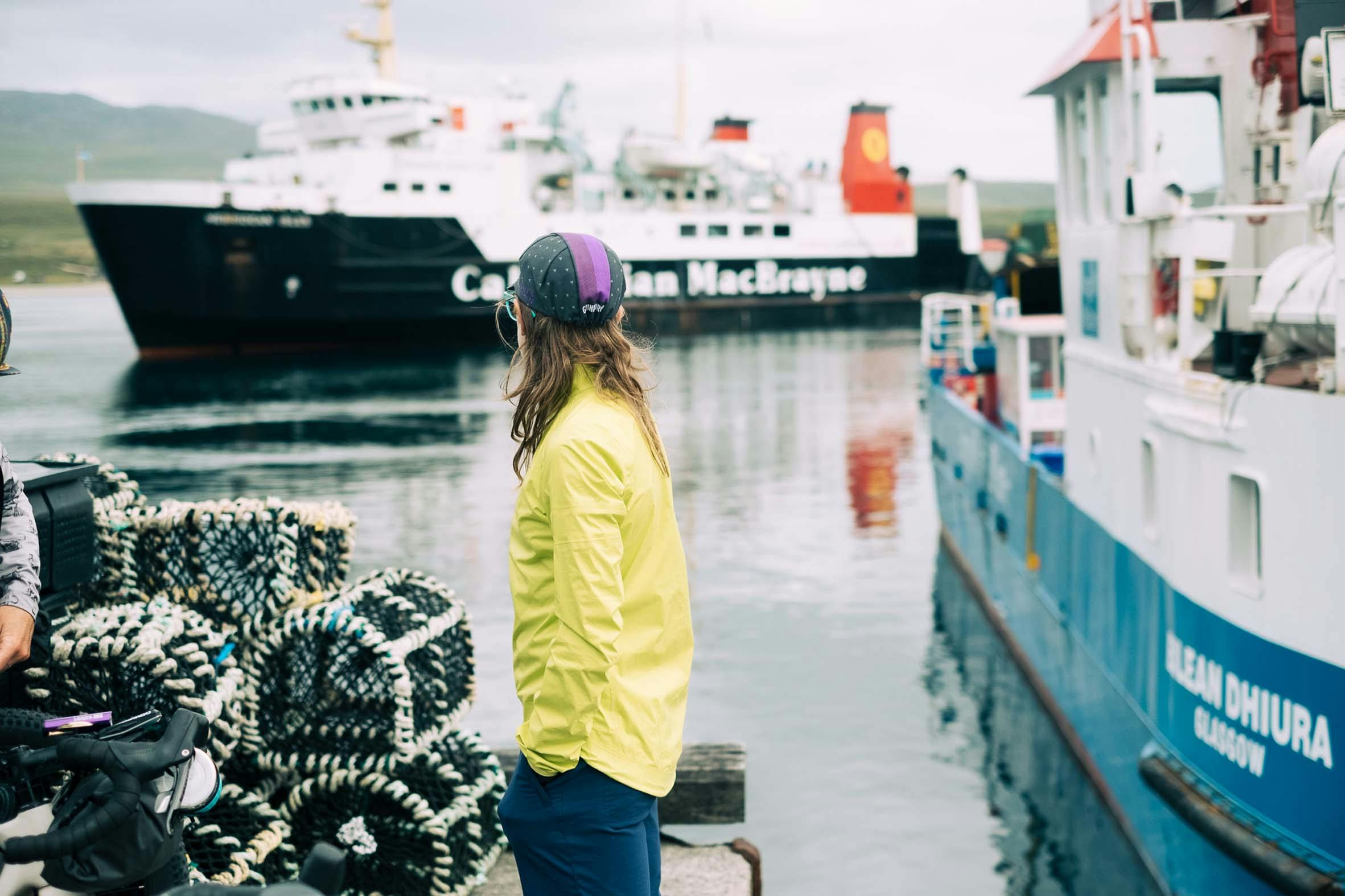

*Caledonian MacBrayne / CalMac (n.) – the major operator of passenger and vehicle ferries, and ferry services, between the mainland of Scotland and 22 of the major islands on Scotland’s west coast.
Words
Stefan Amato
Photography
Chris McClean
Drawings
Chris McNally
Stefan Amato
Tourers
Chris McNally
Wren McNally
Robin Sansom
Will Meyer
Stefan Amato
Fiola Foley
Chris McClean
The Islands – Alfred Wainwright
Jura’s Heritage – Gordon Wright
The Long Road – Peter Youngson
The Essential Guide to the Isle of Gigha – Helen Lear
Komoot